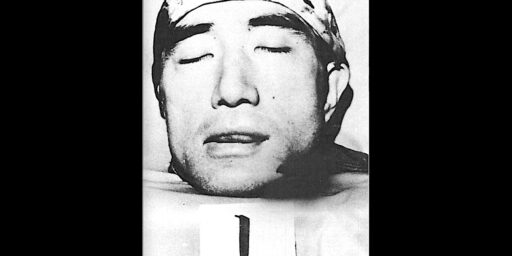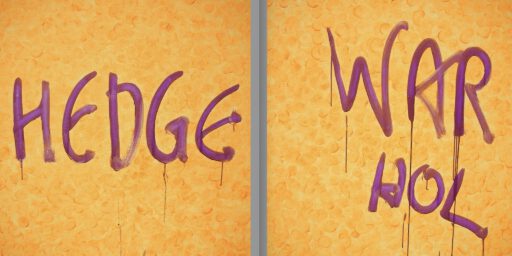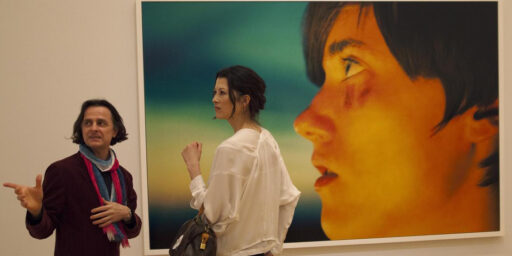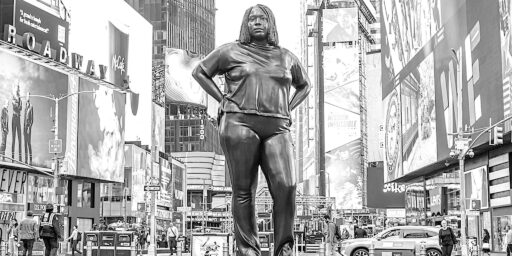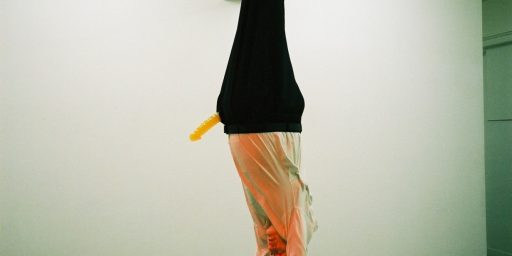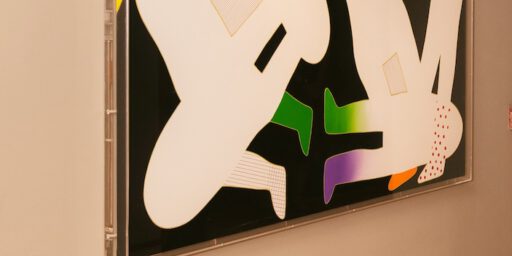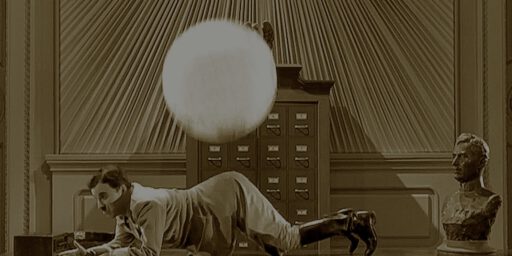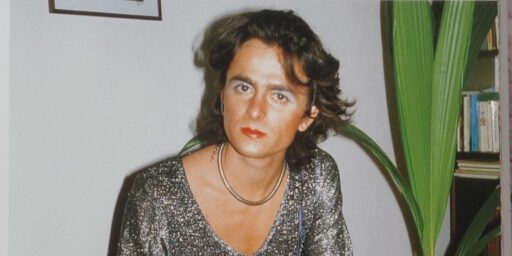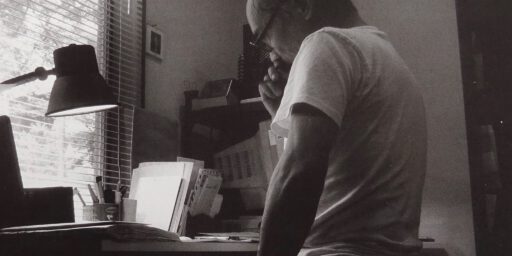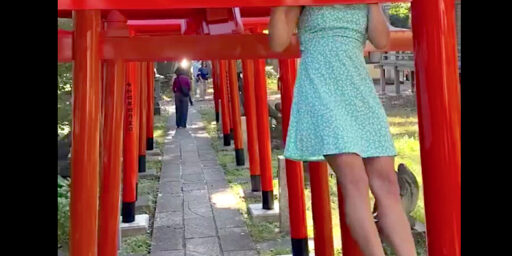No.1 銀座油画家 亜 真里男「HEDGE WARHOL」 Andy Warhol and Mario A アンディ・ウォーホルと亜 真里男
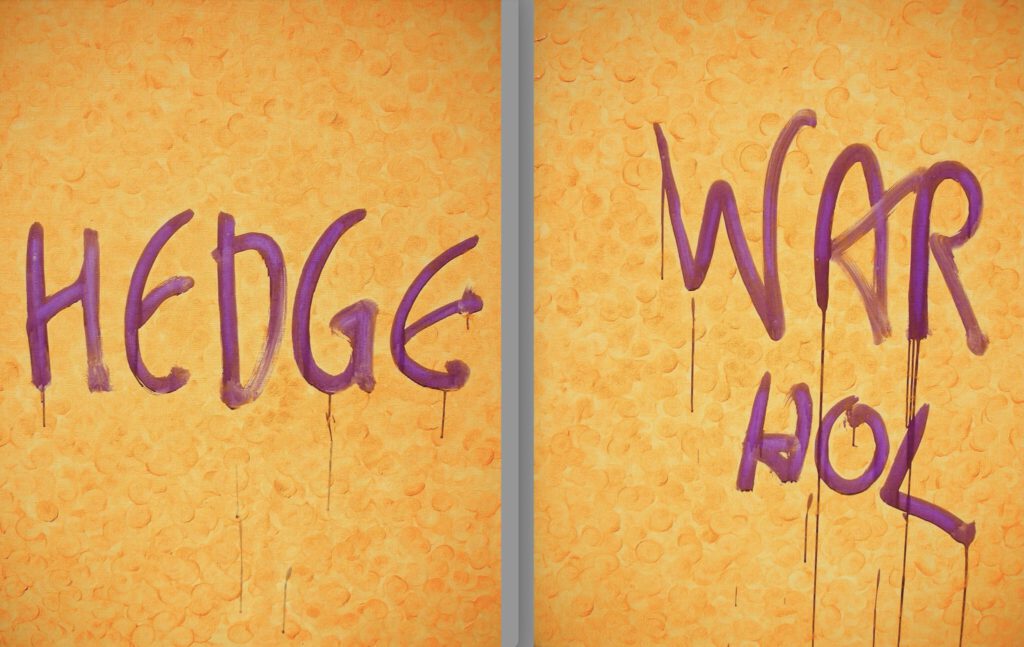
https://marioa.com/works/hedge-warhol/
今の年齢になって、私は自分が日本を代表する現代アーティストの一人だと気づいた。
なぜそう結論づけたのか?
理由は単純だ。自分の作品を他人の作品と比較するからだ。
今日はアンディ・ウォーホルについて簡単に論じよう。
At my current age, I have come to realise that I am one of the most important contemporary artists in Japan.
Why have I come to this conclusion?
It’s quite simple. I compare my works with those of others.
Today, I will briefly discuss Andy Warhol.
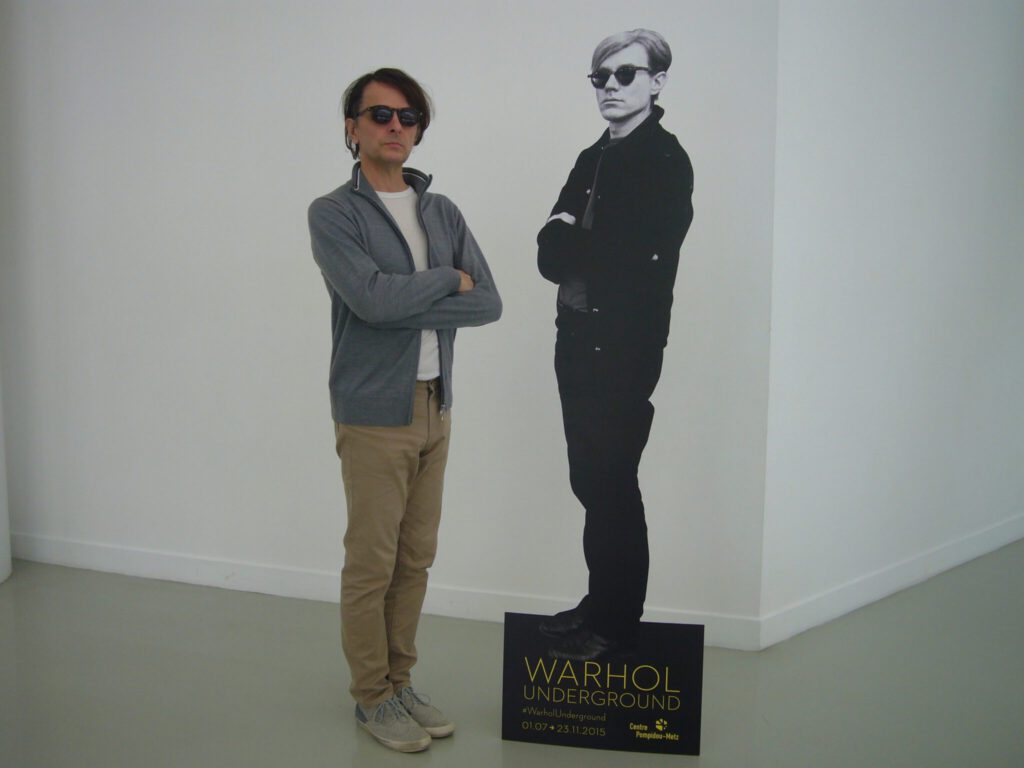
要するに。美術評論家市原研太郎は私を「マリオ・A 永久革命家としての日本のアーティスト」と呼んだ。(1)
私は500年にわたるヨーロッパ美術史を背負っている。この知識をもって、日本で新たな独創的作品を生み出した。
アンディ・ウォーホルをアーティストではなく、アートワーカーと分類する。
ヨーロッパ美術の専門家として、私は瞬きもせずに断言できる:ウォーホルの作品は既視感に満ちている。新しさも特筆すべき独創性も皆無だ。すべては既にヨーロッパで成し遂げられている。つまり、美術史に精通していない者にとって、それはヨーロッパ美術史で読み解き検証可能な事象だ。
ウォーホルを特徴づける三つの要素:
1. 彼はイラストレーターだった。アーティストではなかった。
2. 彼は印刷業者だった。写真の盗人だった。
3. 彼はマザコンで、カトリックの教会に通い、男性のホモエロティシズムを称賛した。
これは分析ではなく事実である。
In short. Critic ICHIHARA Kentaro called me “Mario A An Artist of Japan as an Eternal Revolutionary”. (1)
I carry 500 years of European art history on my shoulders, and with this knowledge I have created new, original works in Japan.
Andy Warhol is classified as an art worker, not an artist.
As an expert on European art, I can judge without blinking an eye: Warhol’s works are déjà vu. Nothing new or exceptionally original. Everything has already been done in Europe, which for the uninitiated means: it can be read about and verified in European art history.
Three characteristics distinguish Warhol:
1. He was an illustrator. Not an artist.
2. He was a printer. A thief of photographs.
3. He was a mama’s boy, a Catholic churchgoer and celebrated male homoeroticism.
These are facts, not analyses.
アーカイブ調査により、日本の芸術家草間彌生がアンディ・ウォーホルにとって極めて重要な影響源であったことが明らかになった。ウォーホルは彼女からアプロプリエーション・アートの技法を取り入れた。(2)
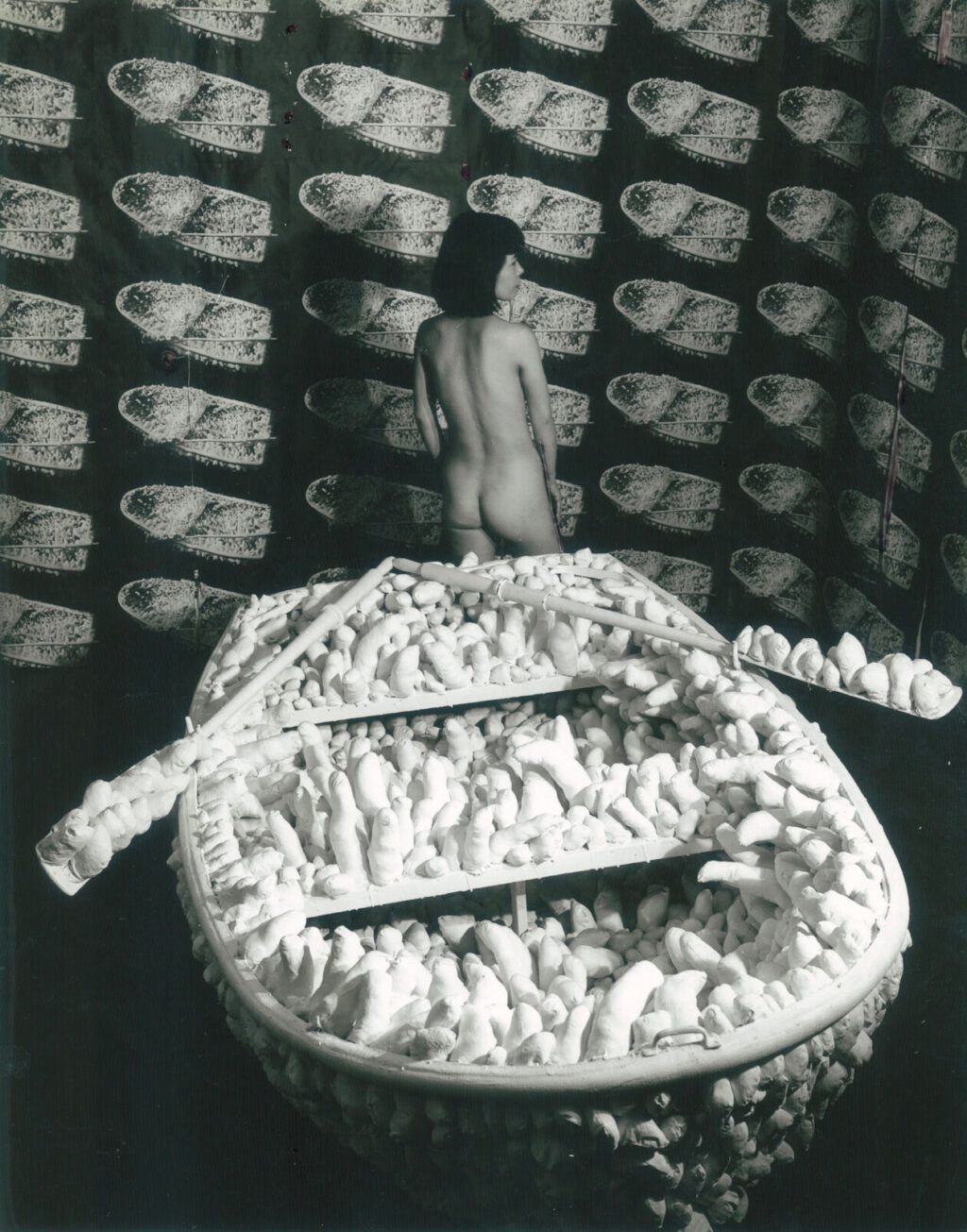
映像資料はヘンリー・ゲルツァーラーも重要なインスピレーション源となったことを裏付けている。(3)
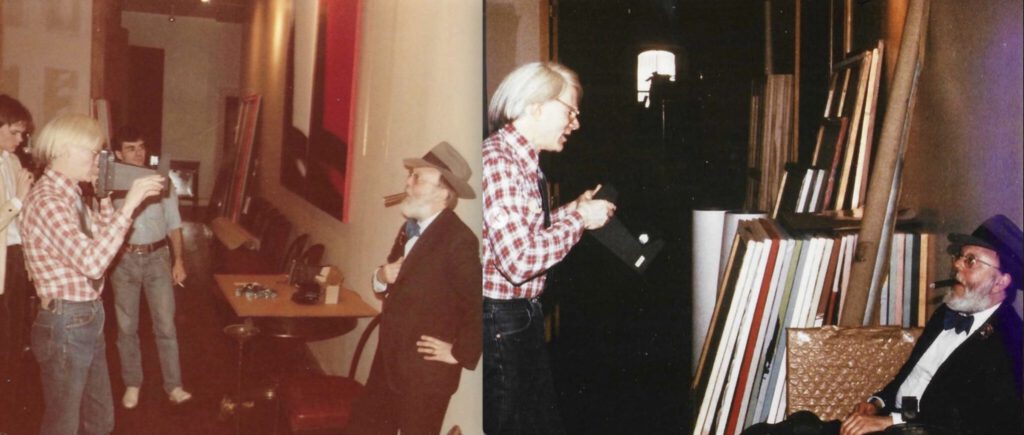
これら全ては、アートワーカーとしてのアンディ・ウォーホルの神秘性を解き明かすことを示唆している。
さらに彼は、社会民主主義者でも、環境保護主義者でも、草間のような反ベトナム戦争活動家でも、フェミニストでもなく、むしろ冷酷な反社会的な寄生虫であり、資本家であり、実業家であった。
加えて、彼は社会の中核的制度である「幸せな家族」という極めて重要な社会的側面の支持者ではなかった。家族は子供たちに愛と安全、成長の場を提供し、価値観や技能を教える。こうした要素はアンディ・ウォーホルの「アート作品」には一切反映されていない。
Archival research has revealed that Japanese artist KUSAMA Yayoi was a crucial, extremely influential source of inspiration for Andy Warhol. He adopted the technique of appropriation art from her. (2)

Video documentation confirms that Henry Geldzahler also became a very important source of inspiration and guidance.(3)
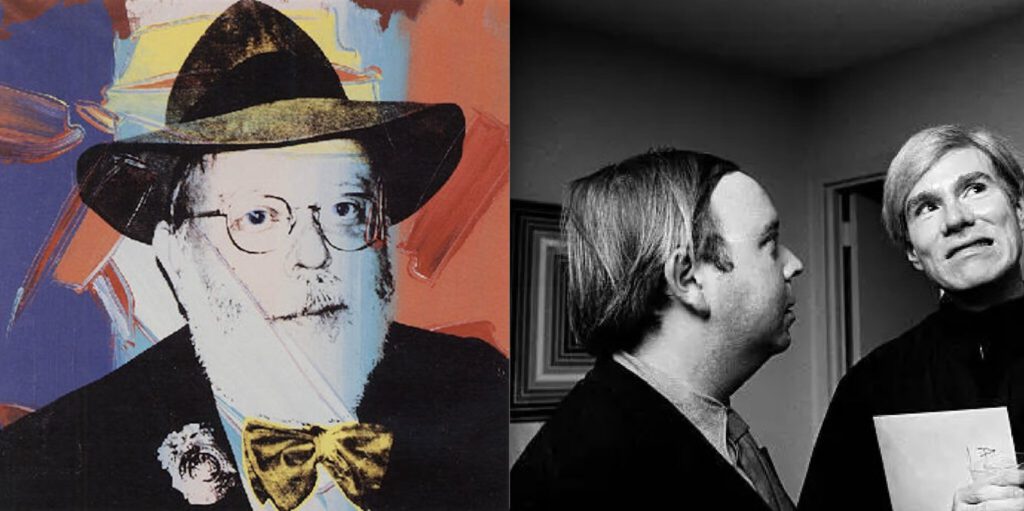
All of this implies a demystification of Andy Warhol as an art worker.
On top of that, he was not a social democrat, a Green, an anti-Vietnam protester like Kusama, or a feminist, but rather a hard-nosed, anti-social parasite, capitalist, and businessman.
Furthermore, he was not a supporter of the all-too-important social aspect of the happy family, the central social institution. The family offers children a space for love, security, growth and the teaching of values and skills. None of this is reflected in Andy Warhol’s “art works”.
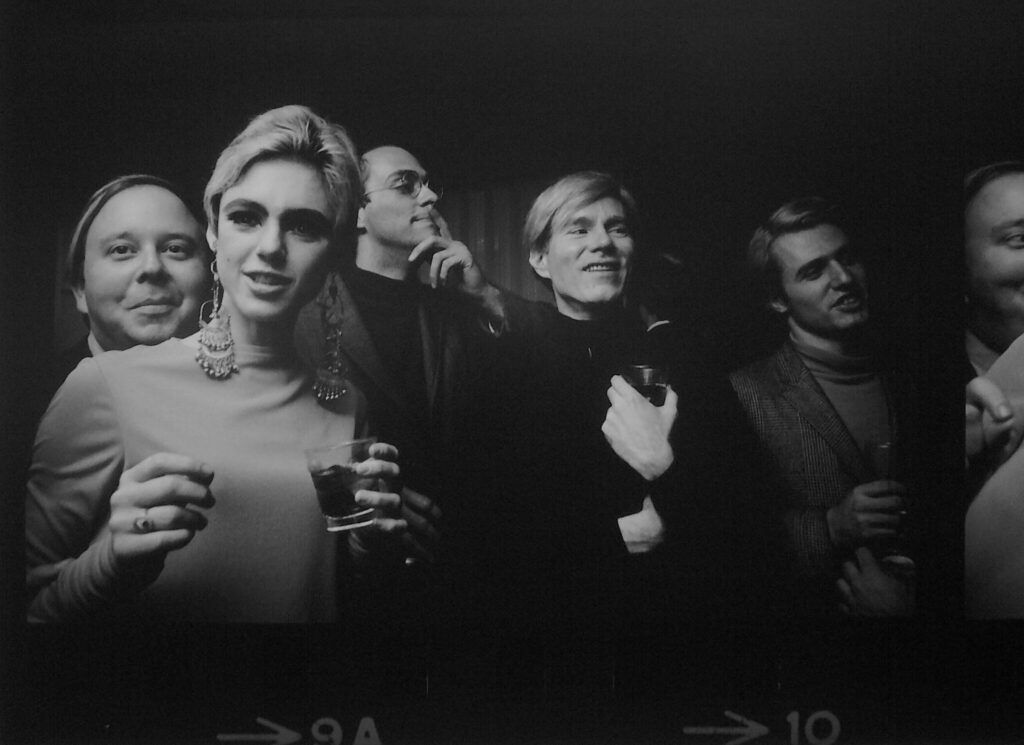
ウォーホルのシルバー・ファクトリーについて、いくつか補足説明をさせていただきます。
「自分がどうして『アンダーグラウンド』扱いされるべきだったのか理解できない。だって、ずっと人々に注目されたかったんだから」とアンディ・ウォーホルは強調した。
これが核心だ。1960年代のシルバー・ファクトリーでは、望む者は誰でも自由に出入りできた。若者たちは実験の場と無料のドラッグを与えられていたが、西洋美術史の後の正典に名を連ねた者はほとんどいない。
1960年にマルチェロ・マストロヤンニと共演したイタリアの傑作映画『甘い生活』で端役を演じたドイツ人フォトモデル、クリスタ・ペフゲンだけが、ニコ(バンド・ヴェルヴェット・アンダーグラウンド)としてシルバー・ファクトリーに華やかさを添えることができた。
フェデリコ・フェリーニの『甘い生活』はヨーロッパの都市の文化的優位性を如実に示していたが、ニューヨークは地方的で文化の欠落した都市だった。
シルバー・ファクトリーを訪れた無名の訪問者の一人がウォーホルを殺害しようとした。「彼は私の人生を支配していた」という彼女の発言は真剣に受け止めるべきである。それは邪悪で執念深いアンディ・ウォーホルの真の性格を露呈しているからである。
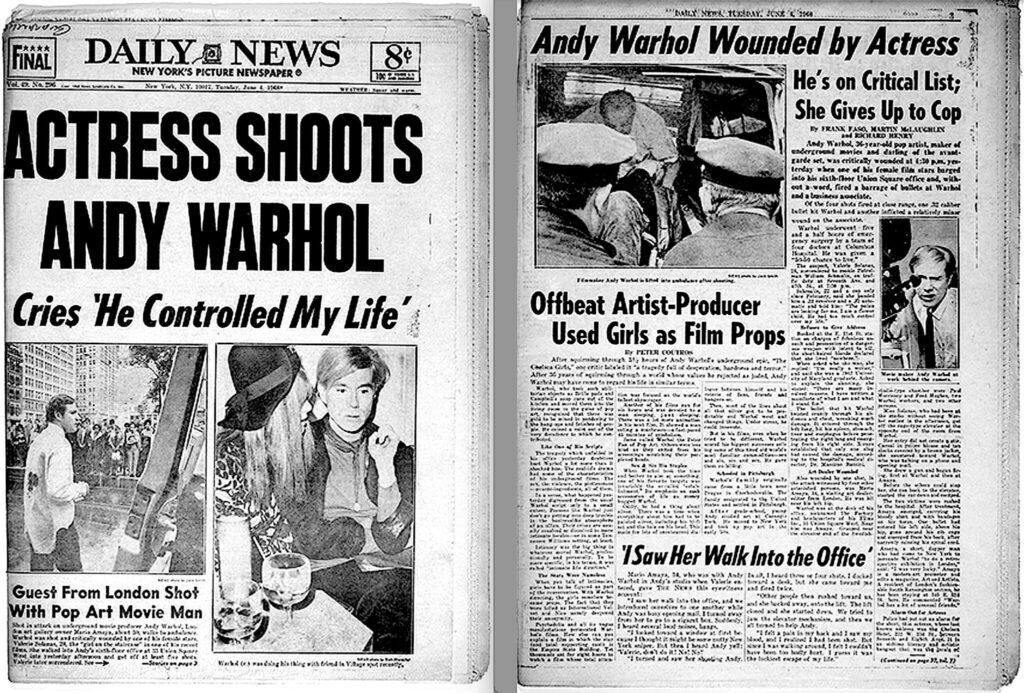
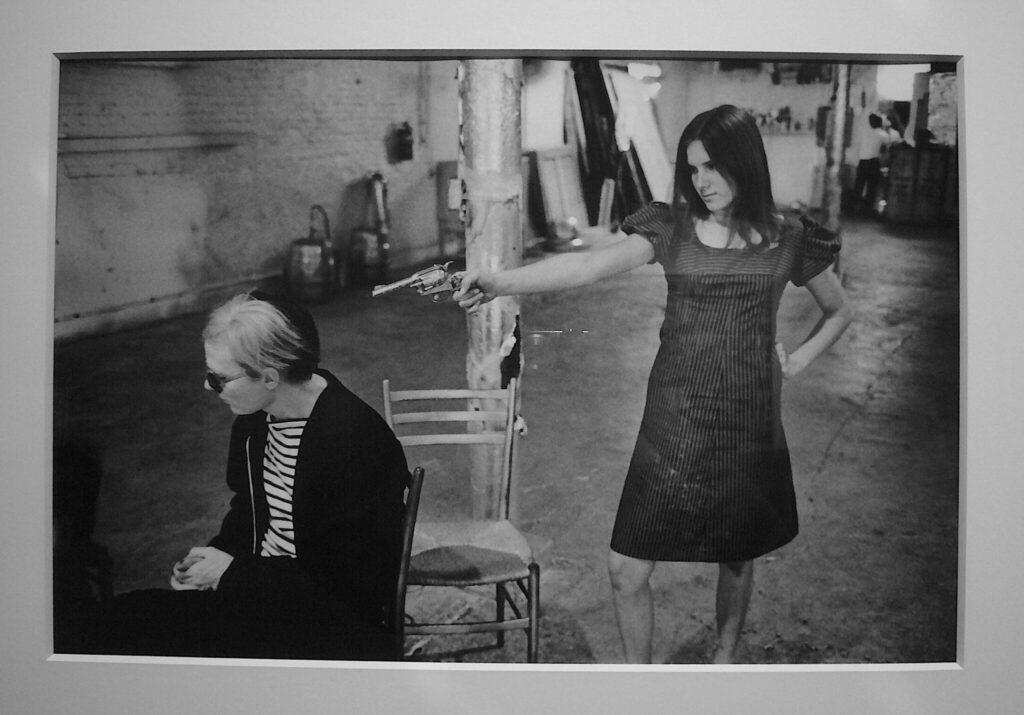
Let me share a few clarifying words about Warhol’s Silver Factory.
‘I can’t understand how I was ever supposed to have been “underground”, since I always wanted people to notice me,’ Andy Warhol emphasised.
This is the crux of the matter. At the Silver Factory in the 1960’s anyone who wanted to, could come and go as they pleased. Young people were given an experimental platform, free drugs, but hardly anyone gained entry into the later canon of Western art history.
Only the German photo model Christa Päffgen, who played a small role in the Italian classy film “La Dolce Vita” with Marcello Mastroianni in 1960, was able to give the Silver Factory some glamour as Nico (band Velvet Underground).
Federico Fellini’s “La Dolce Vita” manifested the cultural superiority of European cities, whereas New York City was provincial and without culture.
One of the unknown visitors to Silver Factory wanted to kill Warhol. Her statement, ‘He controlled my life,’ should be taken seriously, because it reveals the true character of an evil, dogged Andy Warhol.
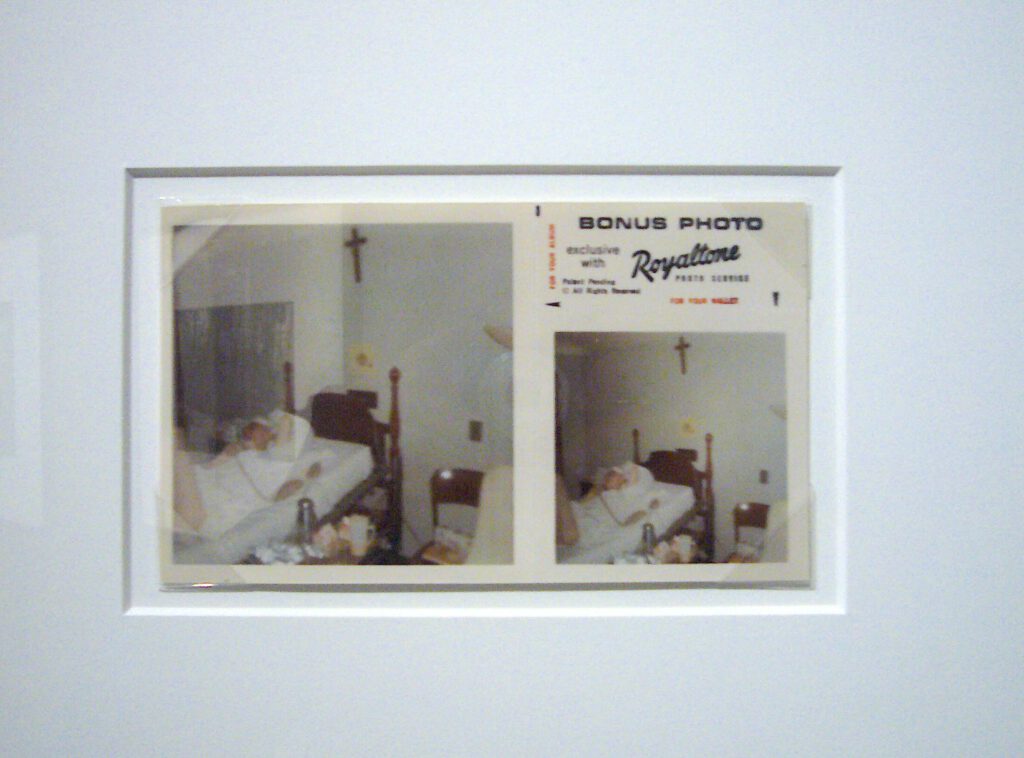
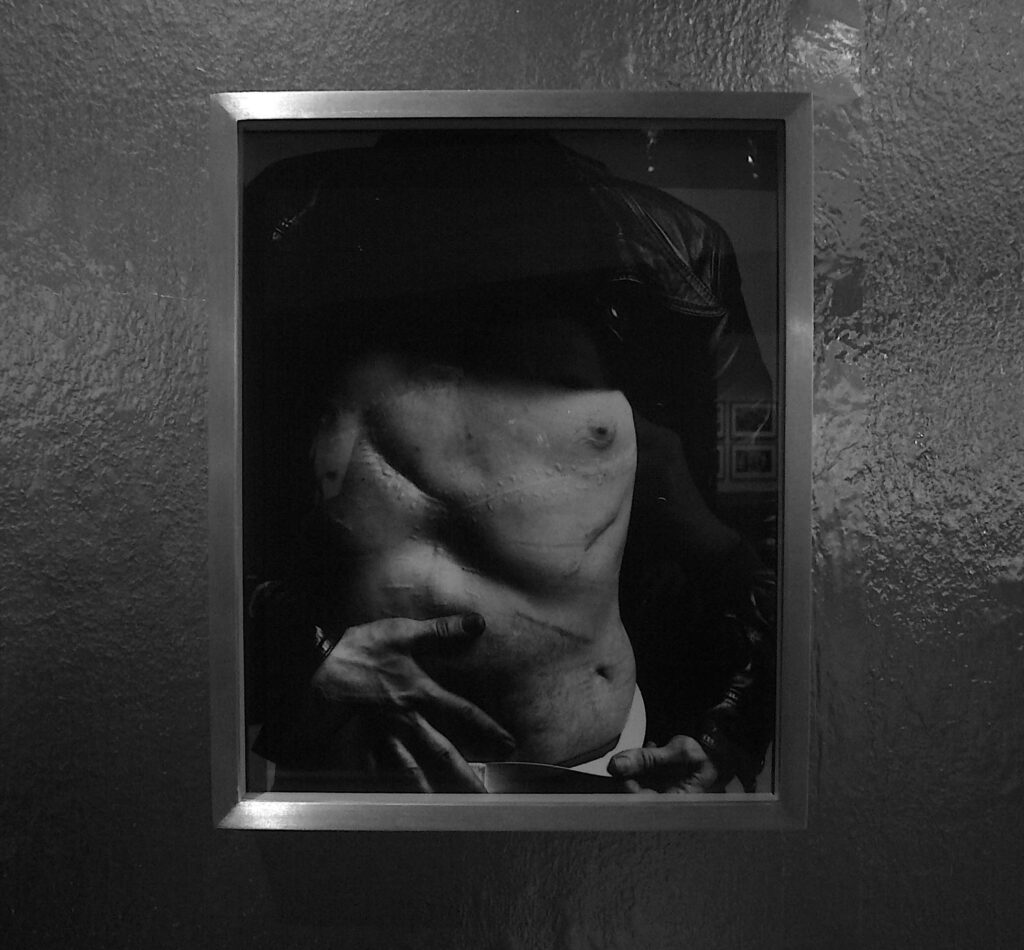
最後に。アンディ・ウォーホルは生前、ジャン=ミシェル・バスキアと共に、無関係で人気のない存在となった。(4)
Last. During his lifetime, Andy Warhol, along with Jean-Michel Basquiat, became irrelevant and unpopular. (4)
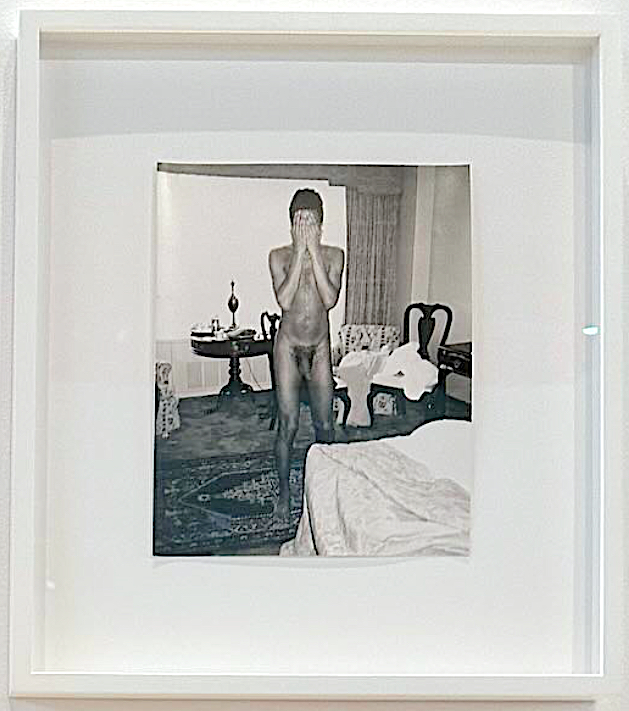
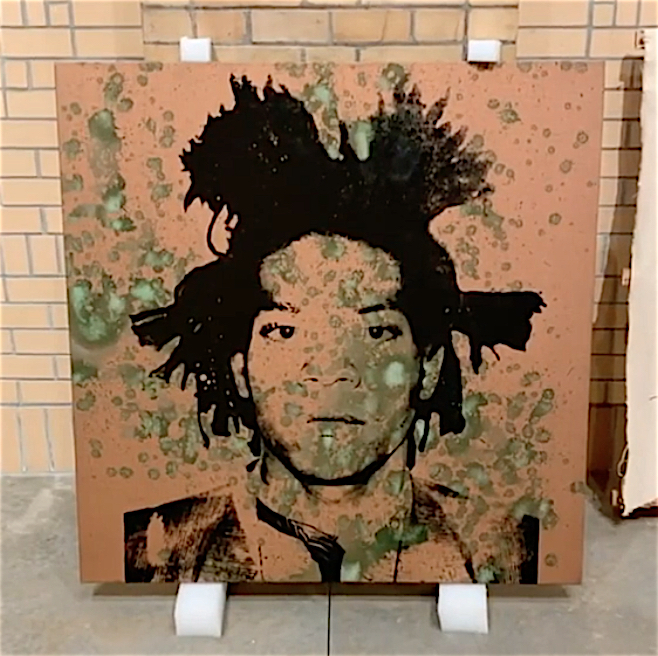
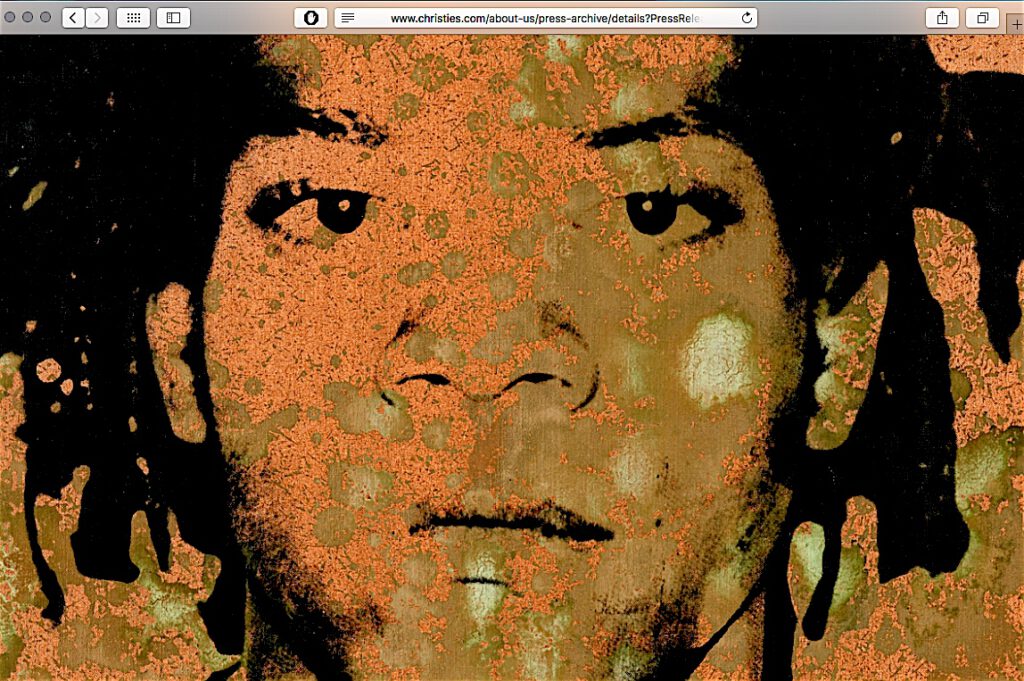
排尿による酸化:白人アーティスト、アンディ・ウォーホルが黒人アーティスト、ジャン=ミシェル・バスキアの顔に小便をかける。
私はこの作品を迷わずこう呼ぶ:U.S. ARTY BULL SHIT。#USABS。
Oxidation through pissing: White Artist Andy Warhol Pisses On The Face Of Black Artist Jean-Michel Basquiat.
And I don’t hesitate to call this work: U.S. ARTY BULL SHIT. #USABS.
彼の突然の死後、投機家たちが安価に作品を買い占め、投機の対象として買いだめした。ホセ・ムグラビら投機家たちは、アート市場でウォーホルの作品が希少性を保つよう素早く仕組んだ。推定50億ドルの資産を持つムグラビ家は、800点もの作品を有するアンディ・ウォーホルの筆頭コレクターである。
その結果、ジャクリーン・オナシス、エリザベス・テイラー、マリリン・モンローや花のプリント作品はニューヨークのオークションハウスにとって格好の獲物となった。
After his sudden death, his works were bought up cheaply by speculators and hoarded as objects of speculation. Jose Mugrabi and other speculators quickly ensured that Warhol’s works remained scarce on the art market. With an estimated family fortune of US$5 billion, the Mugrabi family is the leading collector of Andy Warhol, with 800 works of art.
As a result, Jacqueline Onassis, Elizabeth Taylor, Marilyn Monroe and flower prints became easy prey for auction houses in New York.
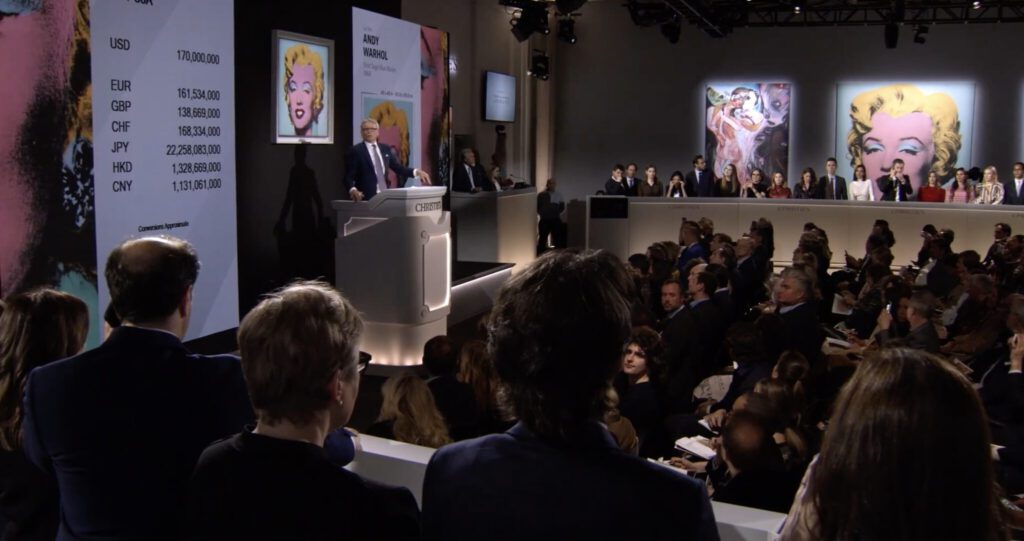
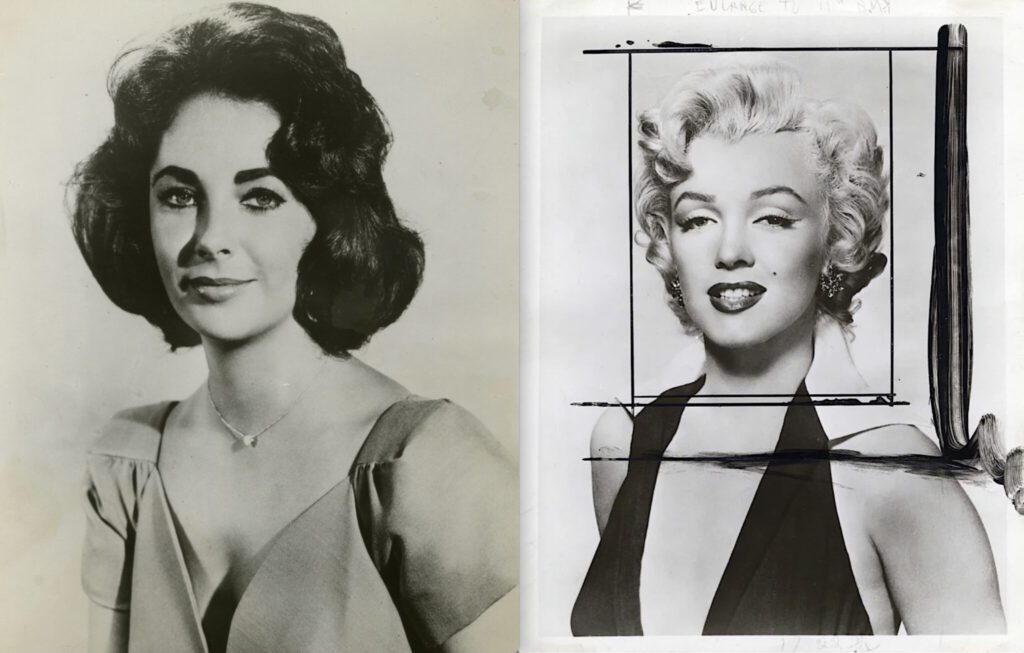
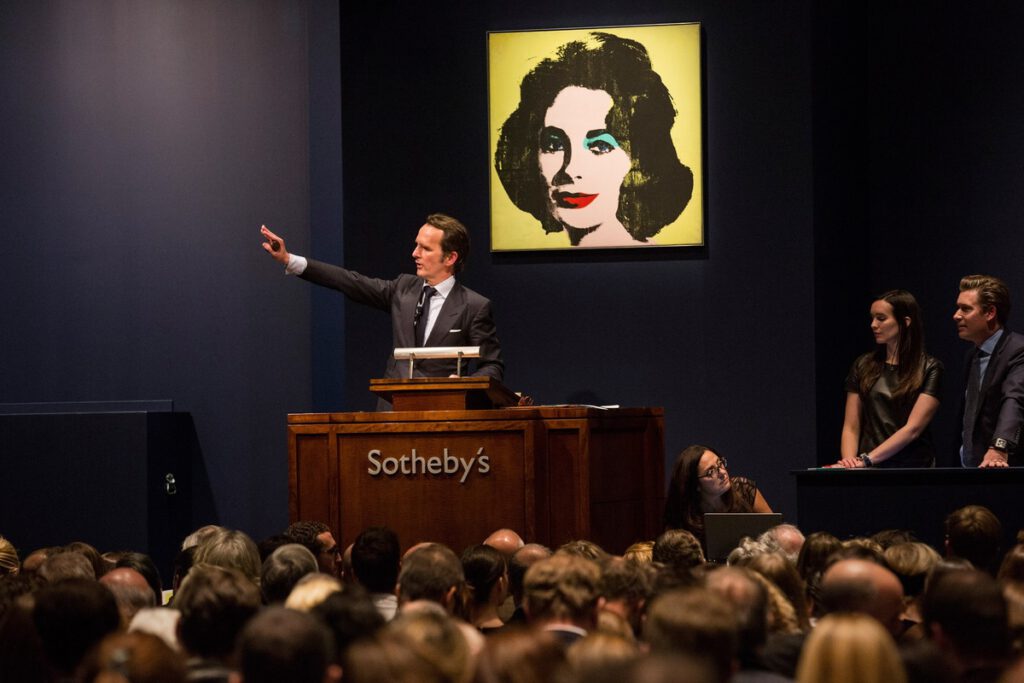
ART + CULTUREが現代日本美術のNo.1ウェブサイトとなった理由は、統計データからも明らかである。
その理由の一つは、ART + CULTUREがアート業界における内的因果関係とグローバルな繋がりを解説していることである。ウェブサイトチームは、広告主や、他者への懸念、そして贔屓といった外部要因に左右されることなく、独立して活動している。(つまり、「この日本のアーティストとセックスしたい」というワケ。)
2013年11月にサザビーズでオークションにかけられたアンディ・ウォーホルの1963年の作品「Silver Car Crash (Double Disaster)」(シルバー・カー・クラッシュ(ダブル・ディザスター))は、特にコレクターへの委託 (consignment・出品)という観点から、「現代アーティスト」の世界的な価格構造における「決定的な瞬間」を象徴している。
この重要な美術史的転換点は、日本のアートメディアにおいてこれまでも、そして今もなお、意図的に隠蔽され続けている。
Statistics have shown why ART+CULTURE has become the No. 1 website for contemporary Japanese art.
One of the reasons is that ART+CULTURE explains internal causalities and global connections in the art industry. The website team works independently, without advertisers, fear or favour. (Aka: this is a Japanese artist I wanna have sex with.)
Andy Warhol’s work “Silver Car Crash (Double Disaster)” from 1963, auctioned at Sotheby’s in November 2013, represents a “critical moment” in the global price structure for ‘contemporary artists’; especially in the context of consignments with collectors.
This important art-historical turning point has been and continues to be deliberately concealed in the Japanese art media.
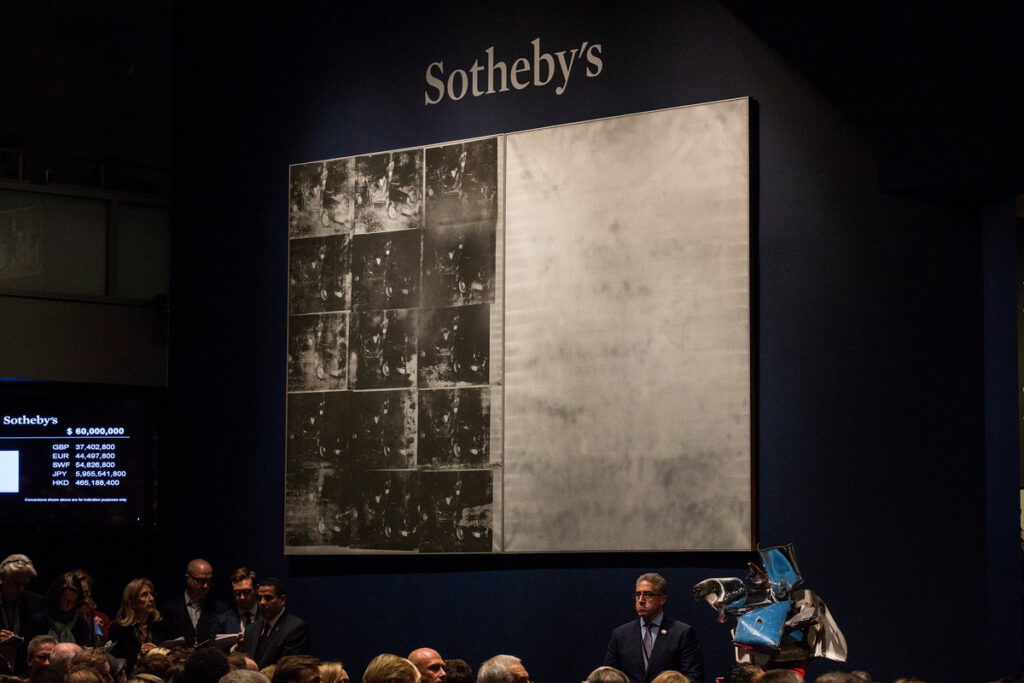
ドイツ生まれ、サザビーズのオークショニアであるトビアス・マイヤーは、編集締切直前まで、1963年のウォーホル作「Silver Car Crash (Double Disaster)」の出品について、ガンター・サックス、ジャン・エンツォ・スペローネ、チャールズ・サーチ、そして1993年に亡くなったトーマス・アマンという来歴を持つこの作品の出品をまだ承諾してなかった。
彼は、作品を売却したくなかったトーマス・アマンの妹でスイスのコレクターであるドリス・アマンを、ニューヨーク近郊のコネチカット州ニューミルフォードにある自宅に招待し、彼女を「説得」しようと試してみした。
この作品は、土壇場で出品されたが、同じオークションで美術商トーマス・アマン・ファインアート株式会社に買い戻された。その後、リーエンのバイエラー財団(2000年)で展示され、現在はチューリッヒ美術館(2025年)で展示されている。
トビアス・マイヤーは神経衰弱に陥り、サザビーズの株主からの激しい圧力に公衆の面前で泣き崩れ、2013年11月のオークション終了後にオークションハウスを去った。(5)
ウォーホルの「ダブル・ディザスター」は、出品者の前にひざまずき、オークショニアが奴隷のように涙を流しながら懇願する様子を鮮やかに描いている。
ニューヨークのサザビーズでのウォーホルの作品は、美術史に轟くジョークとなった。まさに世界的な美術史の皮肉である。
スイス人コレクター、ドリス・アマン(2021年死去)は、自身にとって長期的な利益を予見していたため、洗練されたディプロマシーを発揮した。
ウォーホルのオークションは、彼女自身のプライベートアートコレクションに収益性の高い価値と持続可能性をもたらし、彼女の美術品取引会社トーマス・アマン・ファインアート株式会社にとって、他のアーティスト作品との将来のプライベート取引を暗示するものだった。
オークショニア、トビアス・マイヤーは公衆の面前で恥をかき、職を辞した。
金に貪欲で愚かなニューヨークのヘッジファンド・マネージャー、ダン・ローブは、サザビーズ社の9.3%の株主として、ズボンを脱がざるを得なくなり、大衆の前で恥をかき、世間から忘れ去られた。
この二重の災難は(ウォーホルのDouble Disaster)三重の災難へと変わった:サザビーズ、トビアス・マイヤー、ダン・ローブ。
サザビーズの株主はその後、パトリック・ドライに株式を売却した。(6) その結果、このオークションハウスは再び私有化され、株主の投資満足のために四半期ごとに磨き上げられた決算で株価を吊り上げる必要がなくなった。
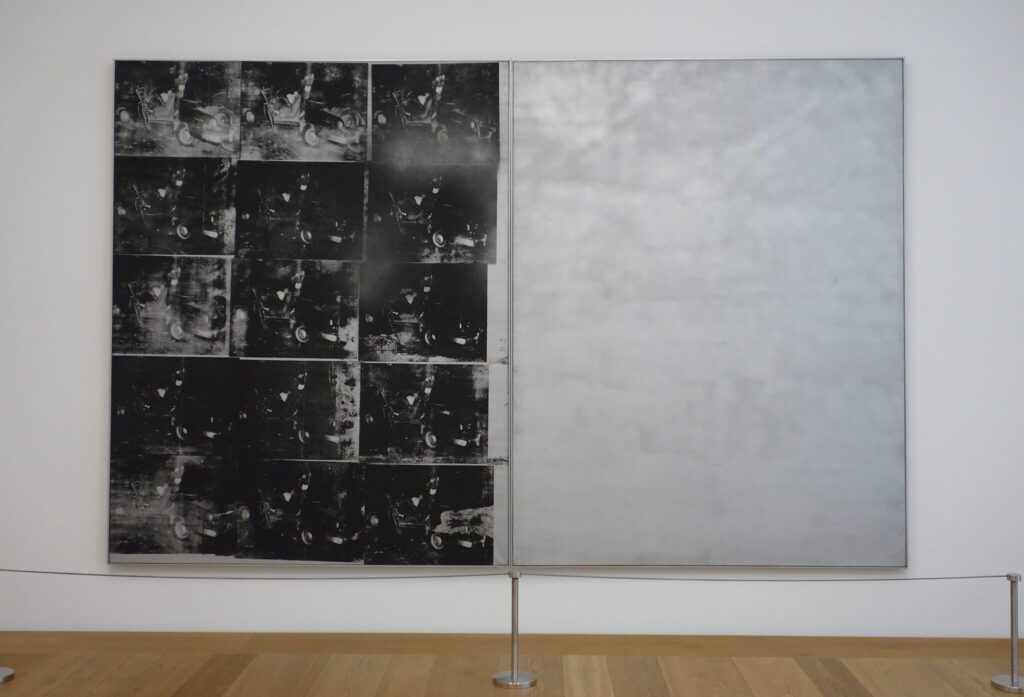
Until shortly before the editorial deadline for the auction catalogue, German-born Sotheby’s auctioneer Tobias Meyer had not yet been given the go-ahead for the consignment of Warhol’s 1963 work ‘Silver Car Crash (Double Disaster)’, with provenance from Gunter Sachs, Gian Enzo Sperone, Charles Saatchi and Thomas Ammann, who died in 1993.
He invited Doris Ammann, the Swiss collector and sister of Thomas Ammann, who was NOT willing to sell the work, to his home in New Milford, Connecticut (near New York), to “soften her up.” The work was consigned at the last minute, but was repurchased at the same auction by the art dealing company ‘Thomas Ammann Fine Art AG’. It has since been shown at the Beyeler Fondation in Riehen (2000) and now at the Kunsthaus Zürich (2025).
Tobias Meyer suffered a nervous breakdown, wept publicly due to the intense pressure from Sotheby’s shareholders, and left the auction house after this November 2013 auction. (5)
Warhol’s ‘Double Disaster’ graphically depicted the auctioneer’s slavish, tearful, pleading behaviour, his kneeling in front of the consignor.
Warhol’s work at Sotheby’s in New York became a resounding joke in art history. The irony of global art history par excellence. Swiss collector Doris Ammann (died in 2021) demonstrated sophisticated, diplomatic cleverness because she foresaw long-term advantages for herself.
The Warhol auction provided her with profitable value and sustainability for her own private art collection, implying future private deals with other art objects by other artists for her art dealing company ‘Thomas Ammann Fine Art AG’.
Auctioneer Tobias Meyer embarrassed himself in public and quit his job.
The money-hungry, stupid New York idiot, hedge fund manager Dan Loeb, as a 9.3% shareholder in Sotheby’s Company, had to drop his pants, also embarrassing himself in front of the public and disappearing into obscurity.
The double disaster turned into a triple disaster: Sotheby’s, Tobias Meyer, Dan Loeb.
Sotheby’s shareholders later sold their shares to Patrick Drahi. (6) As a result, the auction house is once again in private hands and no longer has to drive up its share price with well-polished quarterly results in order to satisfy shareholders in their investment.
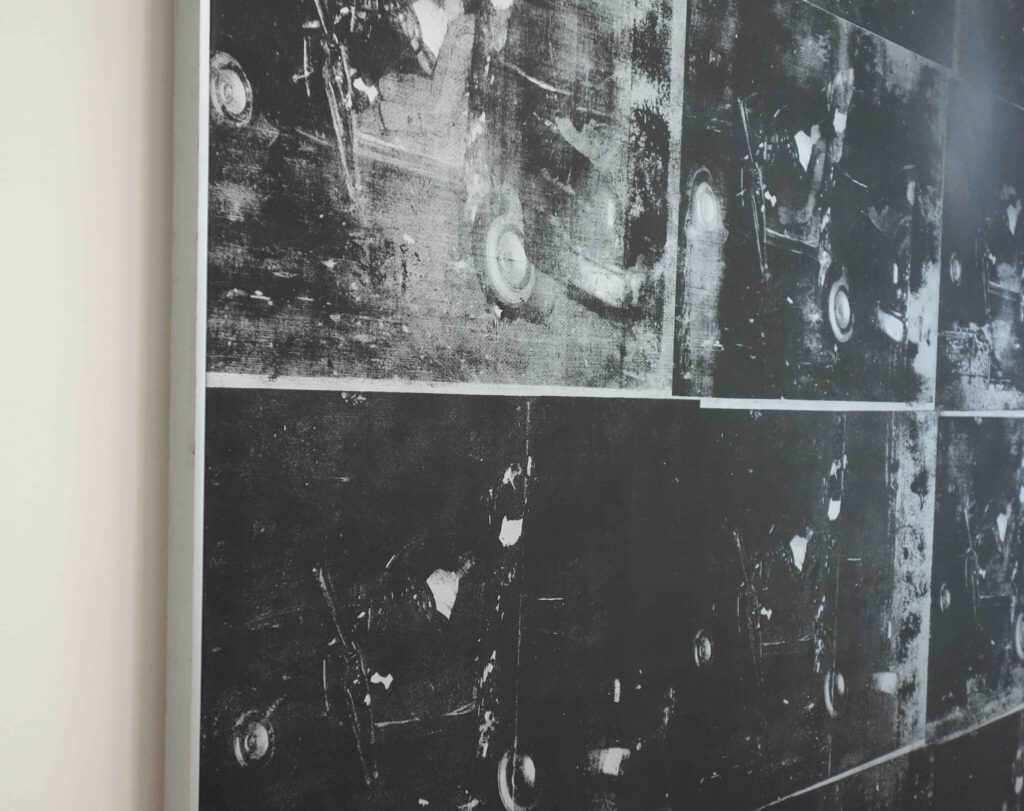
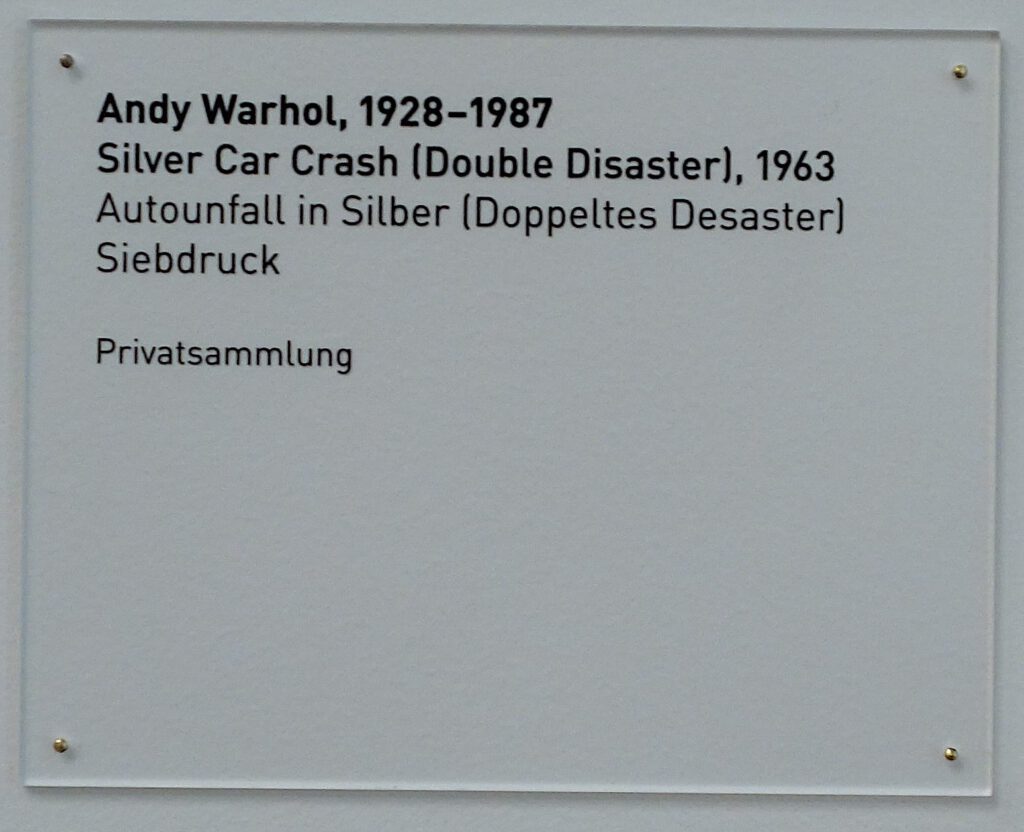 Photo taken in June 2025, Kunsthaus Zürich
Photo taken in June 2025, Kunsthaus Zürichムグラビ兄弟はマスコミの注目を集めるため、ウォーホルのプリント作品で偽装入札(「サクラ入札」Shill Bidding)を頻繁に行っている。では、アートコレクターにとって、これは一体何を意味するのか? ウォーホル作をヘッジしなければならない。2003年の私の油彩作品『HEDGE WARHOL』を参照のこと。(7)
また、美術愛好家の記憶に残っているのは彼のプリント作品のみで、ウォーホルのビデオ作など他の作品は今日に至るまでオークションハウスにとって魅力のない存在であることも明らかになっている。
さらに、ウォーホルの作品からは、芸術投機家 (art flippers) やオークションハウスの内部ロジックが意図せずに明らかになっている。キャンバスに印刷されたまったく同じモチーフは、紙に印刷されたものよりも100倍も高く取引されているのだ。
The Mugrabi brothers often engage in sham (shill) bidding on Warhol’s tableaux in order to attract the attention of the mass media. Ergo, what does that for an art collector mean? You have to hedge Warhol. See my oil on canvas work from 2003 “HEDGE WARHOL”. (7)
It has also become apparent that only his tableaux have remained in the memory of art lovers, but not other works such as Warhol’s videos, which remain uninteresting to auction houses to this day.
Furthermore, Warhol’s works inadvertently reveal how the inner logic of art speculators (art flippers) and auction houses works: the identical motif printed on canvas is traded at a hundred times the price of the same motif printed on paper.
AI・IG時代の現代において、ウォーホルのようなアート・プラクティスはもはや通用しなくなっている。
さらに、アートブックのようなアナログ出版物は無視されても構わない。ウィキペディア、グーグル、AI、ユーチューブ、ヴィメオ、そしてART+CULTUREといった情報源は、アーティストの作品全体を概観するのに十分な情報を提供してくれるからだ。
しかし同時に、以下の点を明確にしておく必要がある。
アメリカメディアの典型として、ウォーホルのドキュメンタリーも中立的な客観性を欠いている。
意図的に偏った自己検閲的な映像記録は、ウォーホルにとって重要な影響源でありインスピレーションの源であった草間彌生(彼女はまだ生きている!)とヘンリー・ゲルツァーラーを編集で排除し、計画的に無視している。
これは、しばしば一方的で、隠されたコードによって差別する傾向のあるアメリカのアート界における、スキャンダラスな状況である。
本日は、特に日本のアーティストの皆様に、ウォーホルの総合芸術(Gesamtkunstwerk)の、これまで見えてこなかった新たな側面を提示できれば幸いです。
時間が経つにつれて、トンネルビジョン(視野狭窄)に陥るのは当然のことである。私たちの受容性は場所や時間によって制限され、個人的に興味深いと思える側面に焦点を絞るようになる。
添付写真は全て私が撮影したものである。全体的な文脈を理解しやすくするため、ごく一部の例外を除いている。
In our AI-IG age, art practices such as Warhol’s have become obsolete.
Furthermore, analogue publications such as art books can be disregarded, as Wikipedia, Google, AI, YouTube, Vimeo, and ART+CULTURE provide sufficient information to gain an overview of an artist’s entire oeuvre.
At the same time, however, I must clarify the following.
Symptomatic of the American media, Warhol’s documentaries also lack neutral objectivity.
The deliberately one-sided, self-censoring video documentaries have edited out KUSAMA Yayoi (who is still alive!) and Henry Geldzahler as important influences and sources of inspiration for Warhol, intentionally ignoring them.
A scandalous situation in the American art world, which is often biased and tends to discriminate through hidden codes.
Today, I hope to offer, especially to Japanese artists, a new side of Warhol’s Gesamtkunstwerk that hasn’t been apparent until now.
It’s only natural that over time, we develop tunnel vision.
Our receptivity becomes limited by location and time, and we develop a focus on aspects that seem personally interesting.
The accompanying photos were all taken by me. A few exceptions exist to make the overall context easier to understand.
ウォーホルの作品に対して批判的すぎるだろうか? いいえ。ウォーホル自身も日記に記している通り、同じ文章を書いただろう。(8) 最後に強調しておきたいのは、彼の巨大なキャンバスに「描かれた」事故・ダブル・ディザスターの版画が極めて見事に仕上げられている点だ。
このアイデアはヘンリー・ゲルツァーラーの発案である。
ゲルツァーラーに称賛を。(9)
Am I being too critical of Warhol’s work? No. Warhol himself would have written the same sentences, as can be seen in his diaries.(8) Finally, I would like to emphasise that I find his huge accident, Double Disaster, prints on canvas extremely well executed. The idea for them came from Henry Geldzahler.
Kudos to Geldzahler. (9)
Tokyo, 10.10.’25
Mario A 亜 真里男
ご参照:
(1)
市原研太郎「マリオ・A 永久革命家としての日本のアーティスト」2004年
マリオ・A 日本美術家、解説・市原研太郎、論創社、2004年、ページ130〜143 より
ICHIHARA Kentaro “Mario A An Artist of Japan as an Eternal Revolutionary”
from: Mario A The Japanese Artist, critical text by ICHIHARA Kentaro, Ronsosha Publishing House 2004, pages 130-143
https://www.amazon.co.jp/マリオ・-日本美術家-マリオA/dp/484600435X
https://ronso.co.jp/book/マリオ・a%E3%80%80日本美術家/
(2)
私 (亜 真里男) と草間彌生、長い芸術の旅、アンプラグド
I (Mario A) and KUSAMA Yayoi, a long artistic journey, unplugged
https://art-culture.world/reviews/mario-a-kusama-yayoi-草間彌生-亜真里男/
〜〜〜〜〜〜〜
Collector Hanford Yang had been interviewed in 2021, to comment on Kusama’s years in New York.
Quotes from “Inside ‘Infinity Mirrors’ artist Yayoi Kusama’s tragic years in NYC”
April 18, 2021
But when Kusama first came to New York City in 1958, she struggled to draw crowds.
During her 15 years here, she made some of the work that she’s famous for today, like the Infinity Net paintings that go for as much as $8 million. Early on, Kusama begged galleries to show her work. Most declined.
She believed that male peers — including Andy Warhol, whom she called a “close friend” — were copying her work.
It all led to a suicide attempt.
“Kusama faced terrible prejudice in the art world,” her old friend Hanford Yang, an architect and longtime Pratt professor, told The Post. “She was so good, but none of the big galleries would show her because, one, she was Japanese, and, two, she was a woman . . . She struggled in New York. She had no money. I used to see her cry.”
…
And she was “aggressive” when pushing her art, Yang said.
…
Yang credits Judd for introducing him to Kusama at Judd’s apartment on Park Avenue South and 19th Street.
“He said he wanted to introduce me to a ‘wonderful artist who will be a great artist in the future,’” Yang said. “And that was Kusama!”
Her first solo show, in October 1959, was at a gallery started by artists. Judd glowingly reviewed it for ARTNews and bought one of the pieces for $200. The support of a well-respected male peer went a long way.
In 1962, Kusama began showing soft-sculpture pieces, covering sofas and ironing boards with hand-sewn phallic forms. “Nobody was doing soft sculpture,” she says in the documentary. Later that year, her peer Claes Oldenburg debuted soft sculptures. Kusama felt he had stolen the idea. “His wife pulled me aside and said, ‘Yayoi, forgive us,’ ” Kusama has claimed.
In 1963, she landed a solo show at Gertrude Stein Gallery, her first-ever installation. “Aggregation: One Thousand Boats Show” showcased a boat covered with soft phallic forms; she also wallpapered the space with repetitive images of the boat. In her autobiography, she wrote that when Warhol, her “close friend” and “rival,” came to see the show he shouted “Yayoi, what is this? It’s fantastic!” A few years later, when Warhol plastered the walls and ceiling at the famed Leo Castelli Gallery with repetitive cow wallpaper, Kusama was crushed.
“She was very upset,” Yang said. “It was very similar . . . and nobody gave Kusama any credit.”
full text:
https://nypost.com/article/infinity-mirrors-artist-yayoi-kusamas-tragic-years-in-nyc/
(3)
ウォーホルとゲルツァーラーの親しい友人関係は1965年には既に著しく冷えており、ゲルツァーラーが1966年のヴェネツィア・ビエンナーレで現代アメリカン・アートのキュレーターに任命されたことで深刻な危機に瀕した。ゲルツァーラーはウォーホルにこのことを知らせず、このグローバル、重要な展覧会にウォーホルの一作も選ばなかった。
The close friendship between Warhol and Geldzahler cooled noticeably as early as 1965 and was seriously jeopardized when Geldzahler was appointed curator of contemporary American art at the 1966 Venice Biennale; he neither informed his friend of this nor selected any of his works for this globally important exhibition.
(4)
#USABS U.S. ARTY BULL SHIT: White Artist Andy Warhol Pisses On The Face Of Black Artist Jean-Michel Basquiat
#USABS ジャン=ミシェル・バスキアの顔に小便をかけるアンディ・ウォーホル
https://art-culture.world/art-world/andy-warhol-pisses-on-the-face-of-jean-michel-basquiat/
〜〜〜〜〜
日本の文化を象徴する「菊」:アナルセックスと皇室の紋章
木村了子 KIMURA Ryoko ・アンディ・ウォーホル Andy WARHOL ・トム・オブ・フィンランド Tom of Finland
https://art-culture.world/cultural-essays/japanese-imperial-emblem-chrysanthemum/
(5)
Can Sotheby’s Stay In The Picture? PUBLISHED NOV 14, 2013, UPDATED APR 22, 2014
quote:
“You know, I talk about the near-death experience,” Meyer says, recalling his hectic summer. He tells the story of how he put his heart and soul into winning the picture; how finally – right before the print deadline for the auction catalogue – he got word that the consignment was his. Meyer pauses for a moment, mid-tale, as though to add drama to his victory. Then, suddenly, something strange happens: His chest caves deeply, as though a huge weight has been dropped on him. He holds out his hand, as if reaching for support. His voice trembles into a deep, raw sob. “Let’s go somewhere else,” he finally says in a hoarse whisper. Meyer – renowned in the art world for his poise on the auction block – steps behind a wall and into a side gallery where privately, quietly, he wipes a few tears from his cheeks.
https://www.newsweek.com/can-sothebys-stay-picture-3248
(6)
When will Nathan Drahi from Sotheby’s get out of Hong Kong?
Patrick Drahi’s Extremely Capitalistic Way of Art Dealing And Speculating With Sotheby’s
https://art-culture.world/art-world/nathan-drahi-sothebys-hong-kong/
(7)
例年通り、「銀座の油絵画家」としての慣例に従い、次回の銀座での個展は2025年11月3日(文化の日)、銀座中央ギャラリーにて開催いたします。
As always, in keeping with the ritual of the “Ginza oil painter”, my next solo exhibition in Ginza will begin on Culture Day, 3 November 2025, at the GINZA CHUO GALLERY with the title: “5th A GINZA CONCEPT EXHIBITION”.
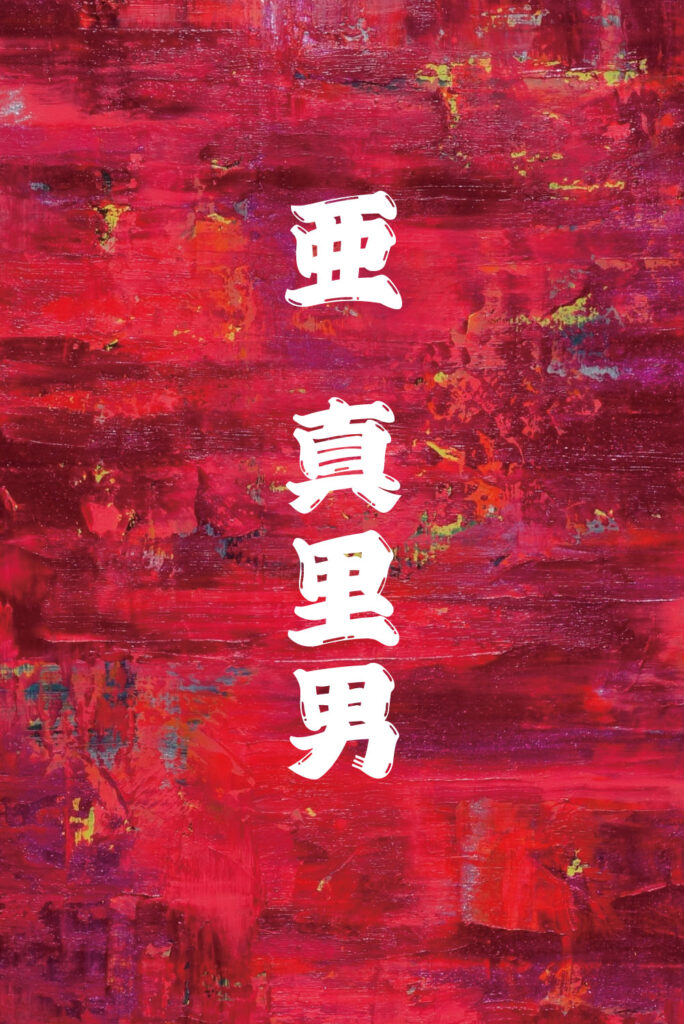
(8)
The Andy Warhol Diaries by Andy Warhol, 1989
https://archive.org/details/AndyWarhol1987
〜〜〜〜〜
The Satanic Diaries – is Andy telling the truth?
by Michael Gross, in New York Magazine, pp.48〜, May 29, 1989
https://books.google.co.jp/books?id=HegCAAAAMBAJ&dq=warhol+diaries+hackett+1989+jed&pg=PA48&redir_esc=y#v=onepage&q=warhol%20diaries%20hackett%201989%20jed&f=false
(9)
Who Gets to Call it Art?
Feature-length documentary on 1960’s art curator Henry Geldzahler, with David Hockney, Frank Stella, Robert Rauschenberg, James Rosenquist, Francesco Clemente, Larry Poons, Mark Di Suvero, John Chamberlain, Jonas Mekas, and other artists and writers of the art scene in downtown New York.
https://www.peterrosenproductions.com/productions/whogetstocallitart/
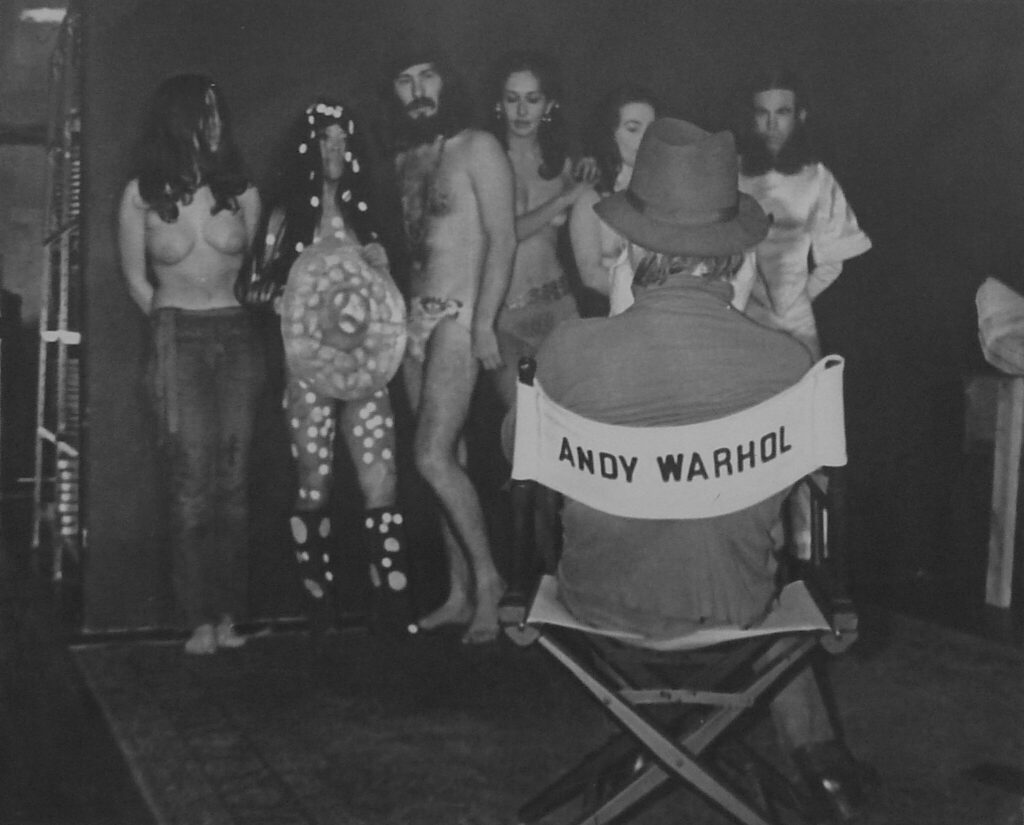
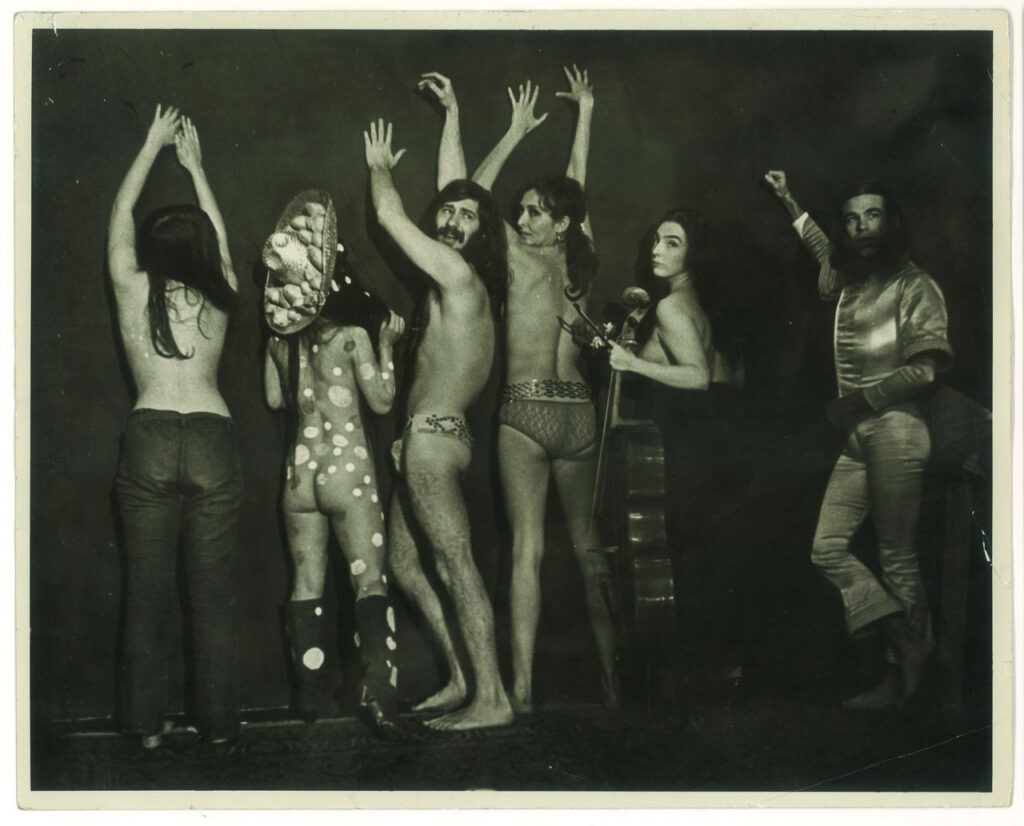
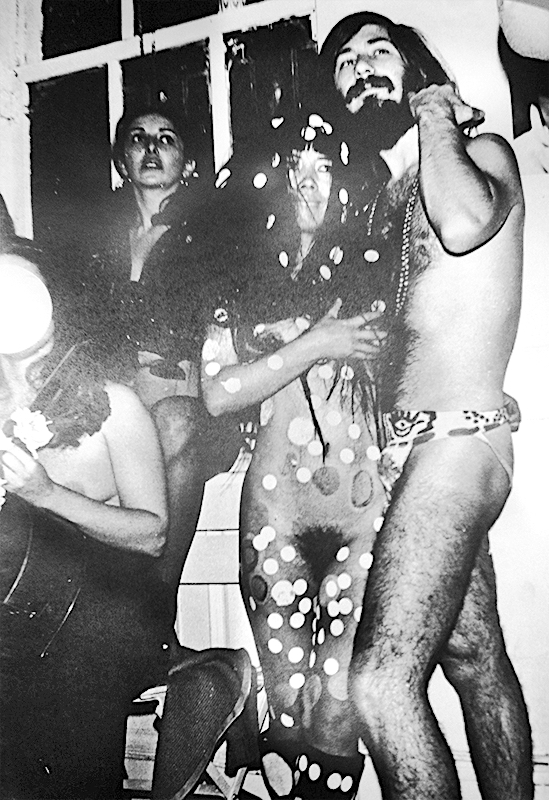
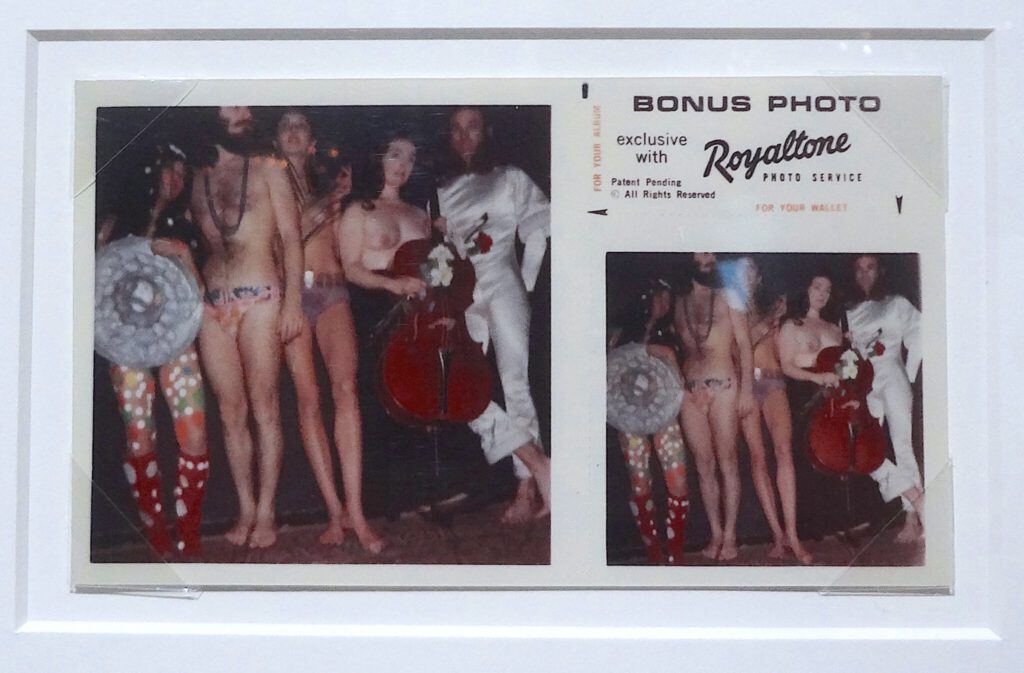
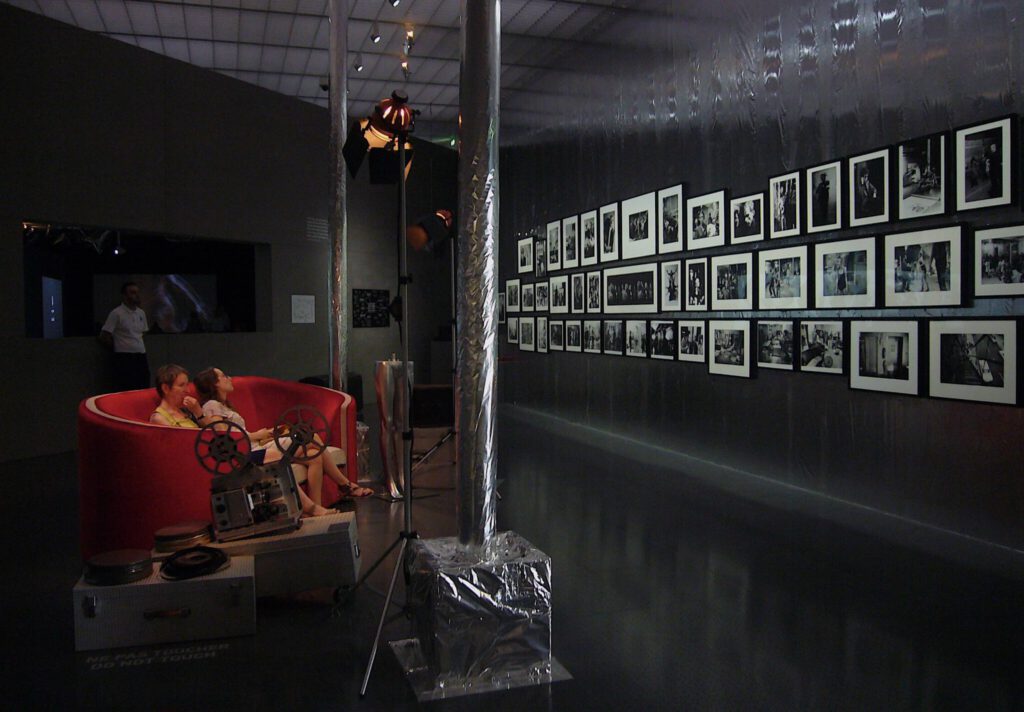
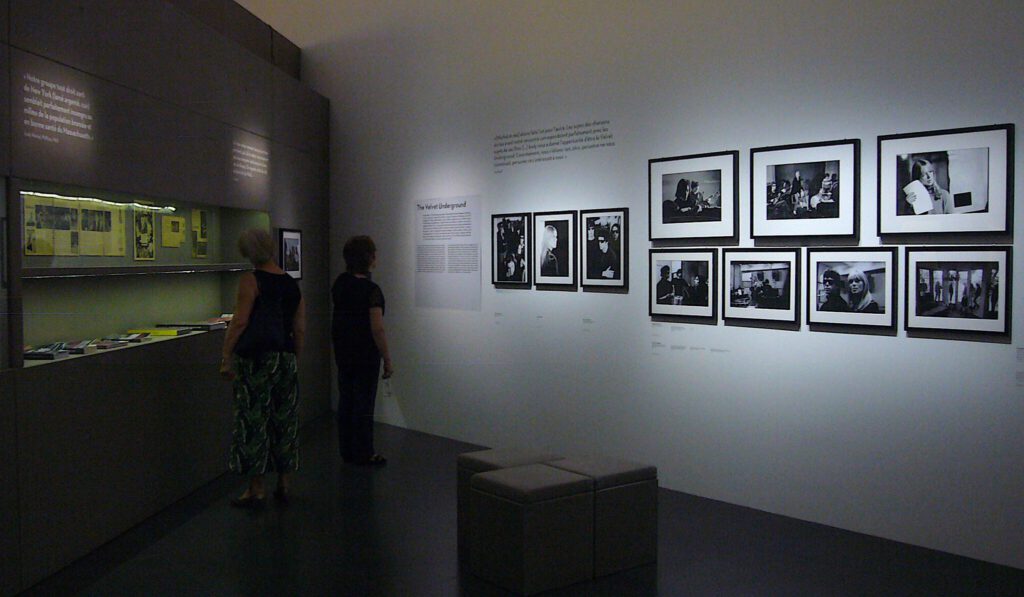
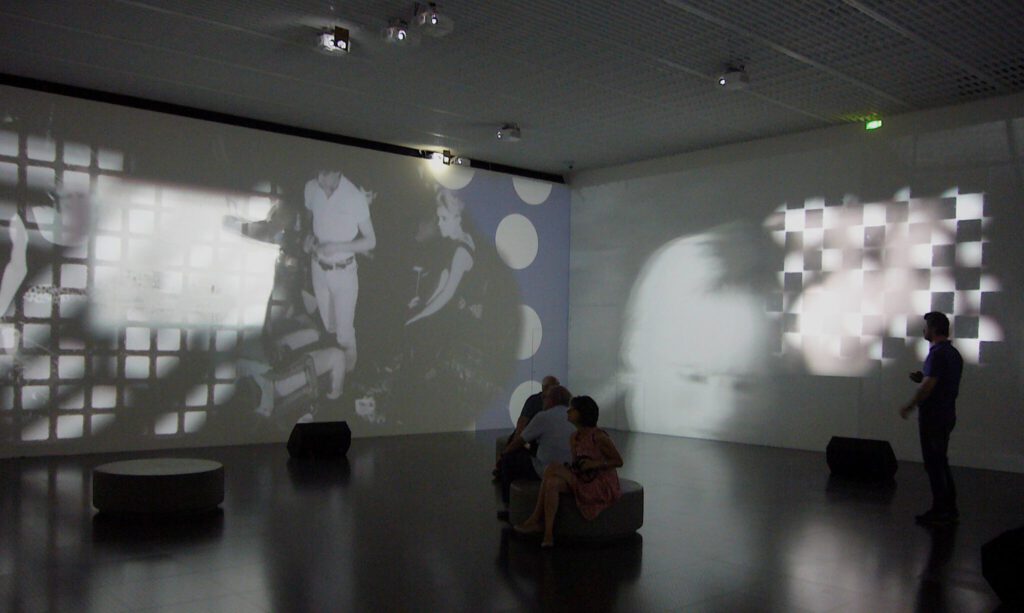
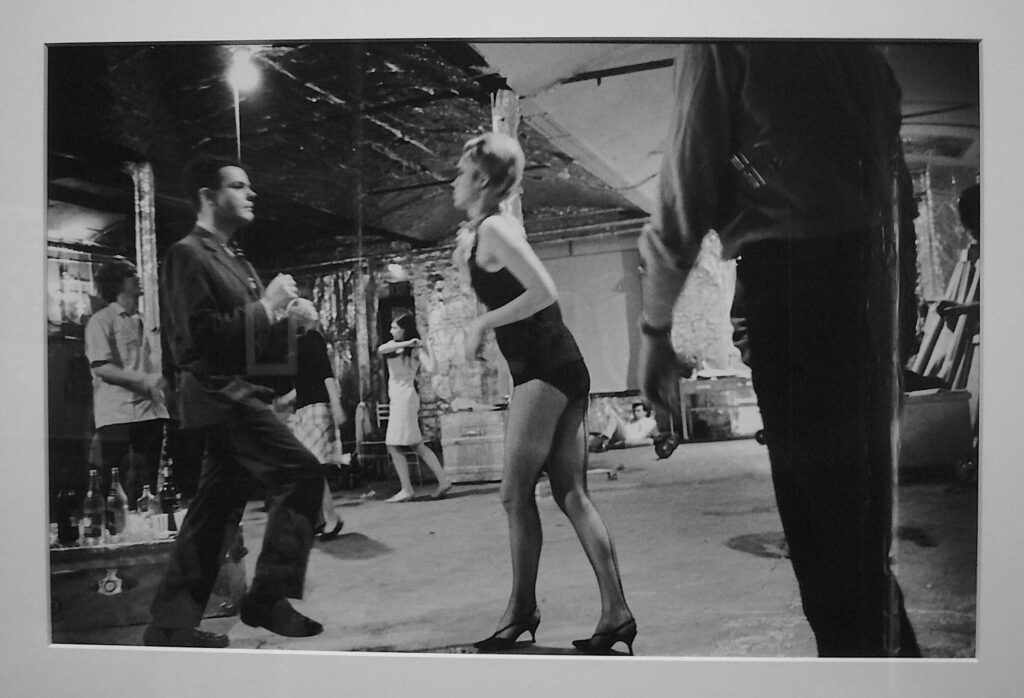
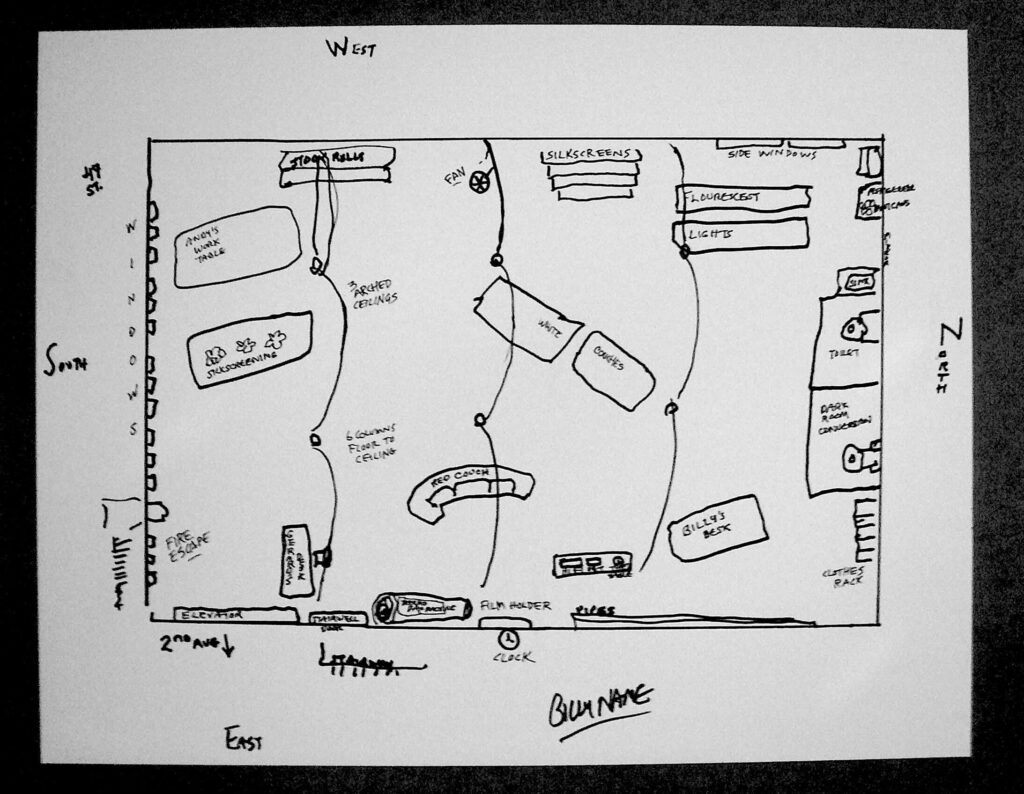
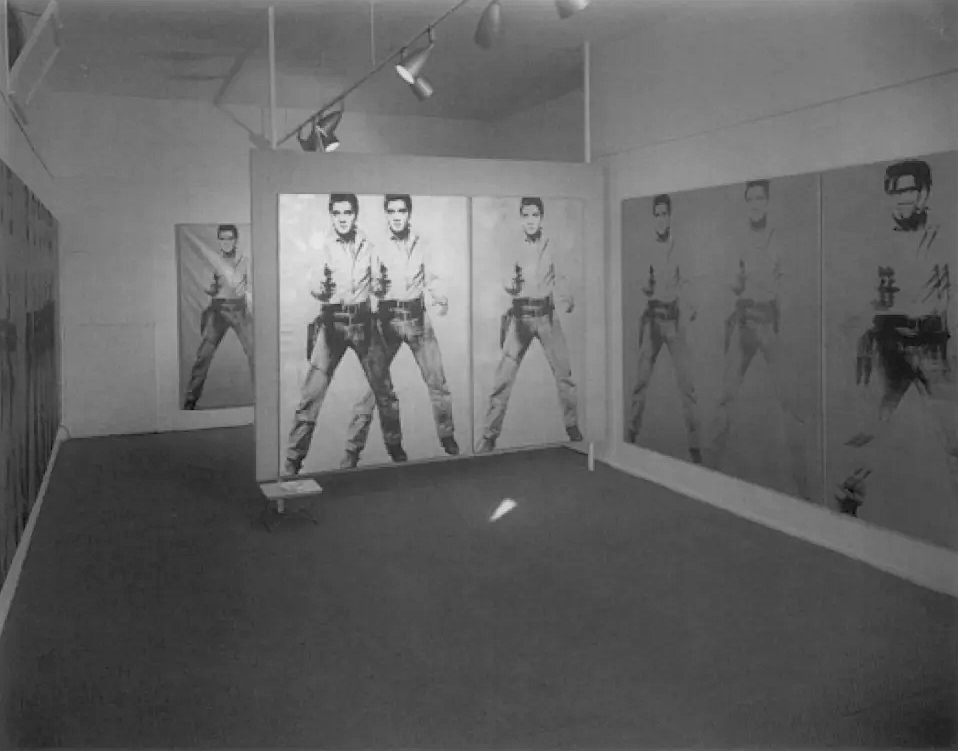
1963 @ Ferus Gallery L.A.
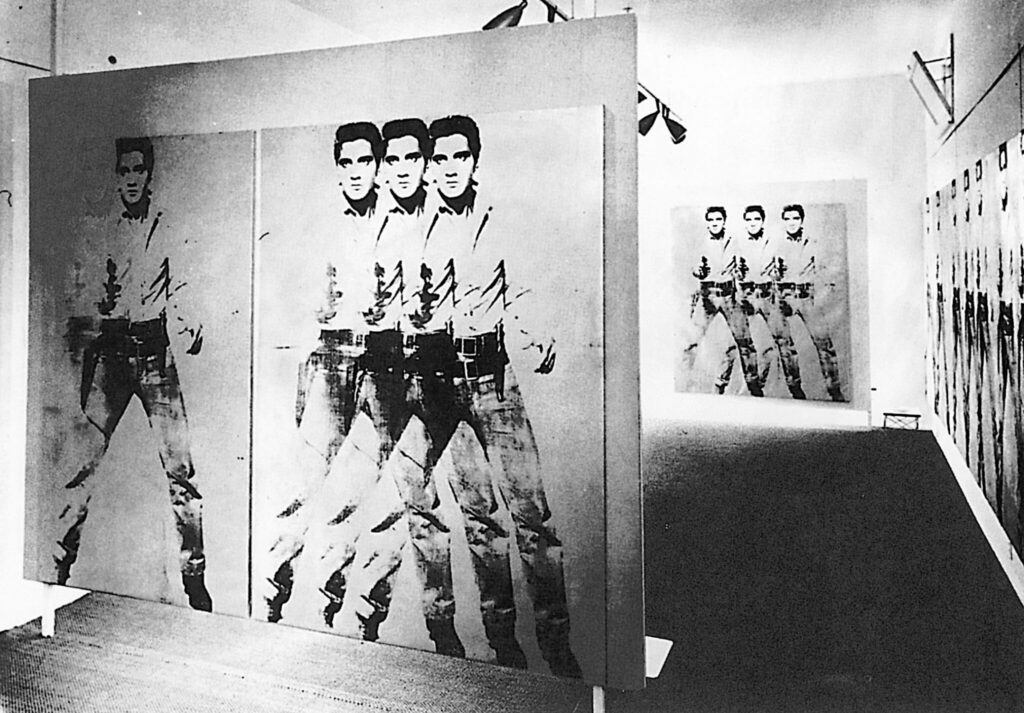
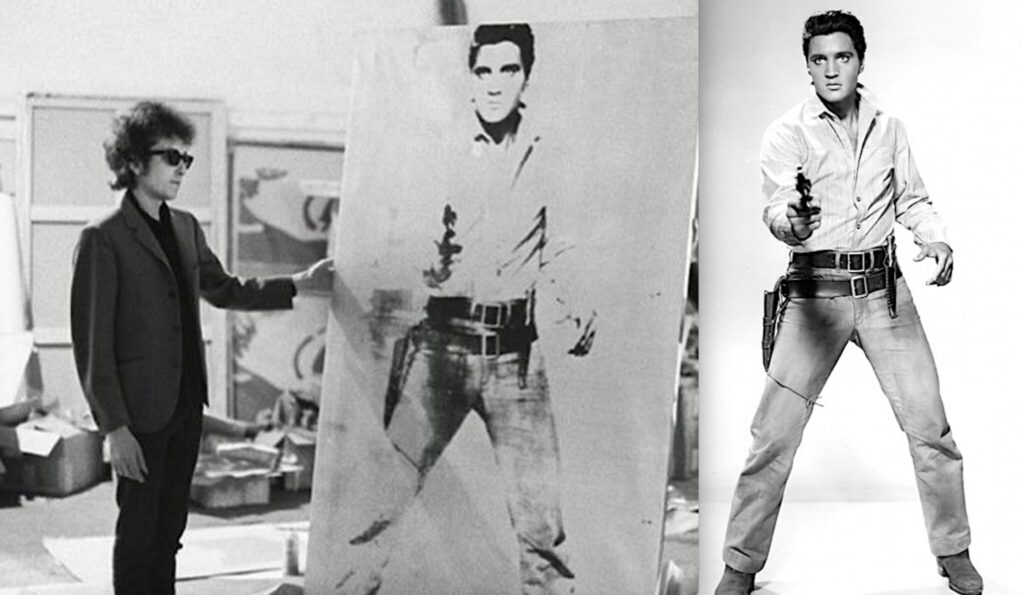
1965 @ Warhol Factory NY
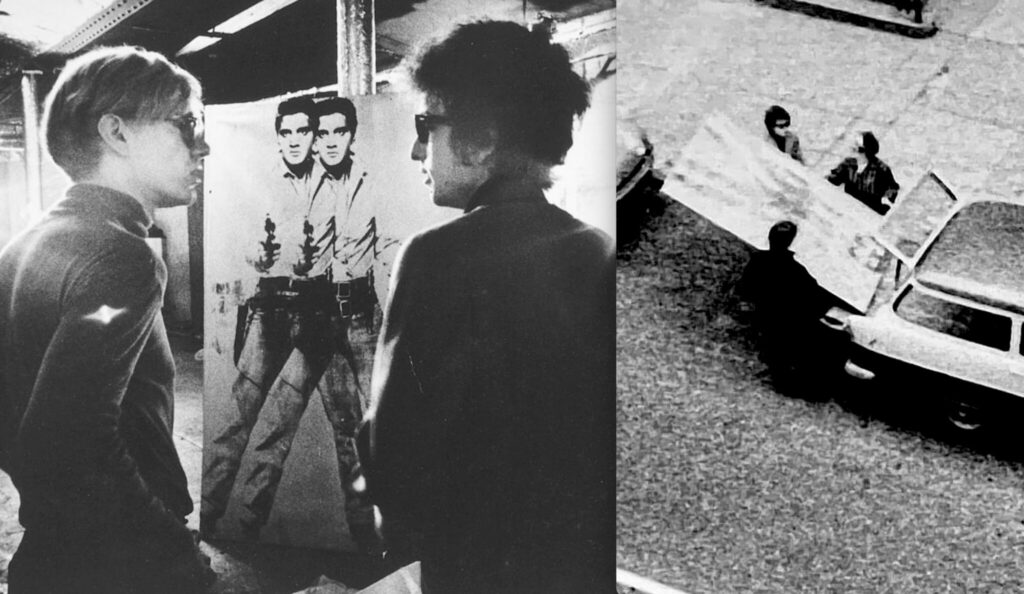
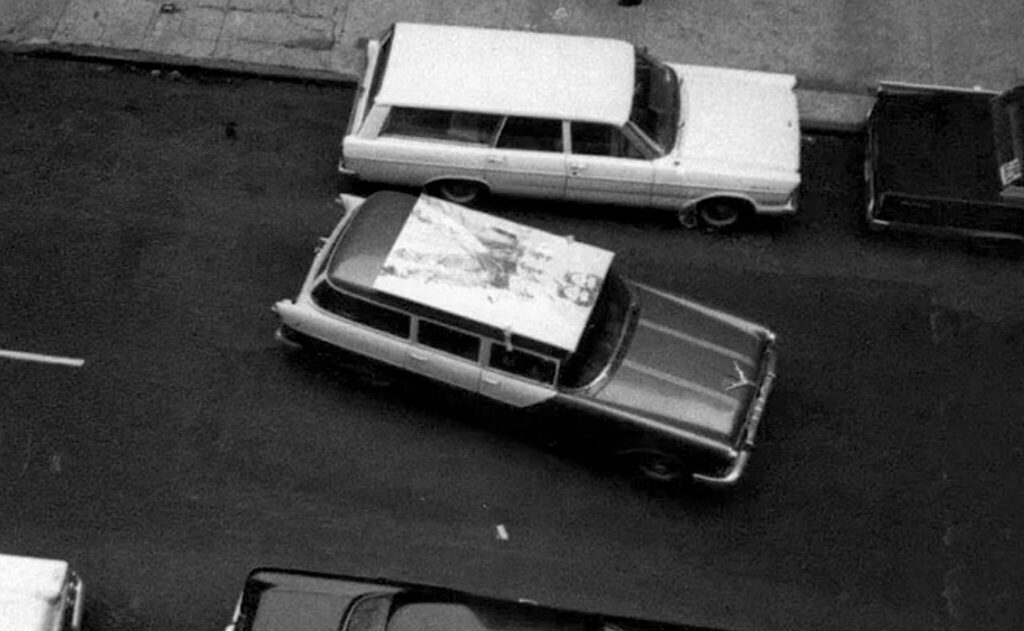
Bob Dylan disliked the “Double Elvis” print by Andy Warhol and traded it to his manager, Albert Grossman, for a sofa.
Story:
In 1965, Andy Warhol gifted Bob Dylan one of his Elvis silkscreens. Dylan ended up driving home with the painting balanced on the roof of his car after it wouldn’t fit in the trunk.
Dylan later decided he didn’t like the painting. He traded it with his manager, Al Grossman, for a sofa. In 1988, Grossman’s wife sold the painting for 720.000 US$.
A similar painting from the same Elvis series sold for 81.9 million US$ at Christie’s in 2014.
Warhol in his 1980 memoir, POPism, would later recount: “I liked Dylan, the way he created a brilliant new style… I even gave him one of my silver Elvis paintings in the days when he was first around. Later on, though, I got paranoid when I heard rumors that he had used the Elvis as a dart board up in the country… Ten years later, I ran into him at a party. He admitted that he’d given the painting away to his manager, Al Grossman, and then he shook his head regretfully and said, But if you ever gave me another one, Andy, I wouldn’t make that mistake again…’“
The painting is now in the collection of MoMA, New York.
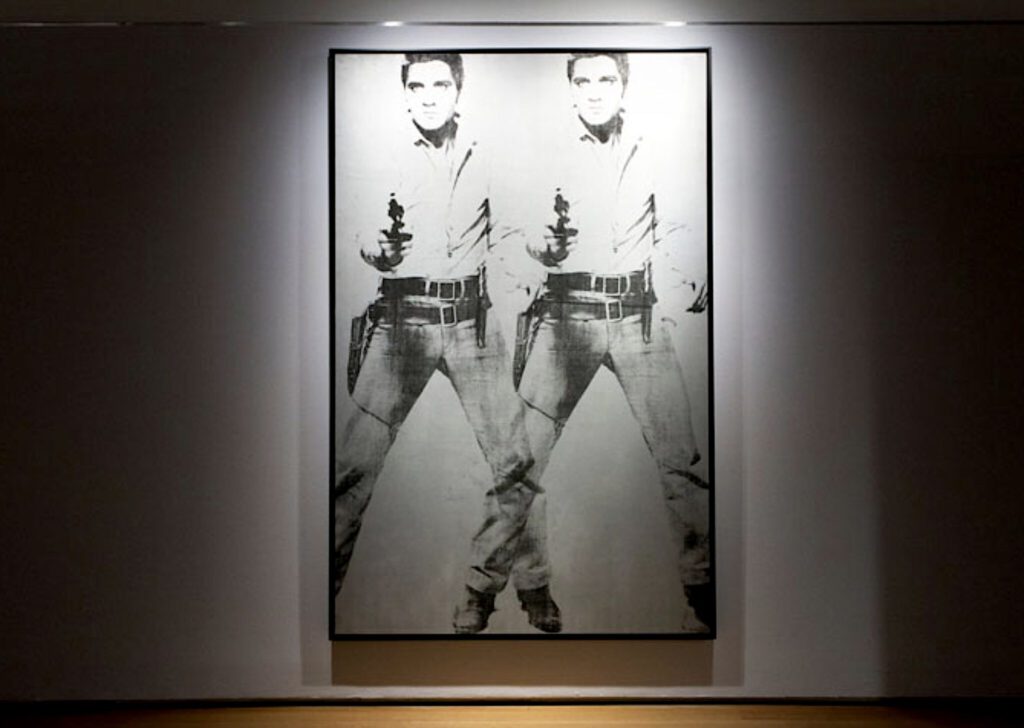
Andy Warhol (1928-1987), Double Elvis [Ferus Type], 1963. Silkscreen ink and silver paint on linen. 81 7⁄8 x 52 3⁄4 in (208 x 134 cm.) Offered in the Post-War and Contemporary Art Evening Sale on 15 May 2019 @ Christie’s in New York. Sold for US$53,000,000.
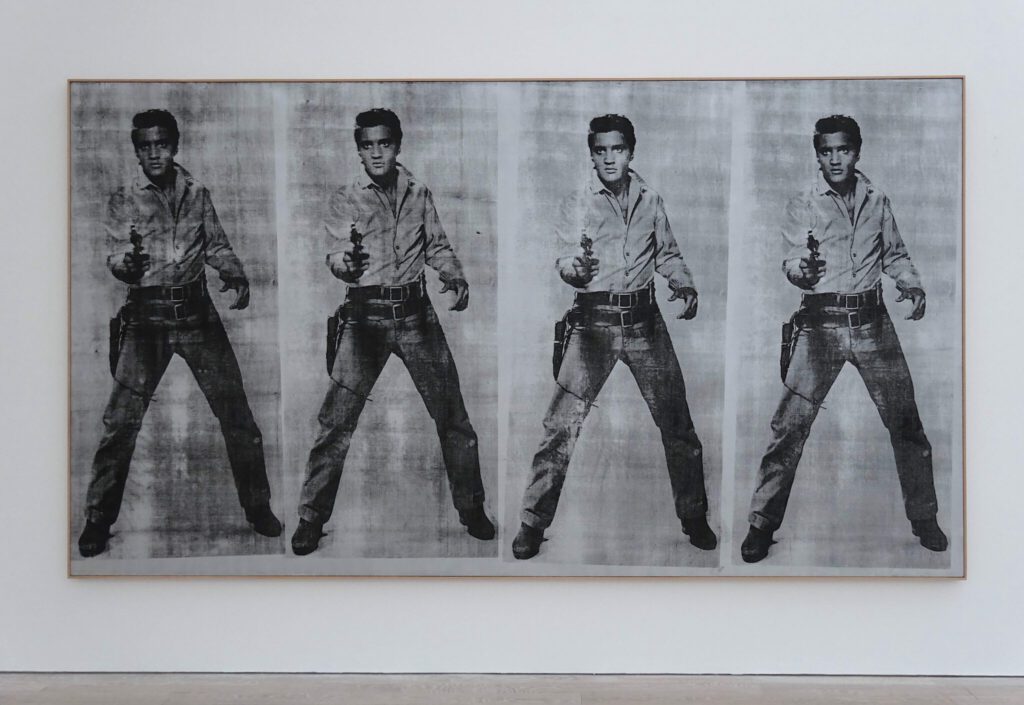
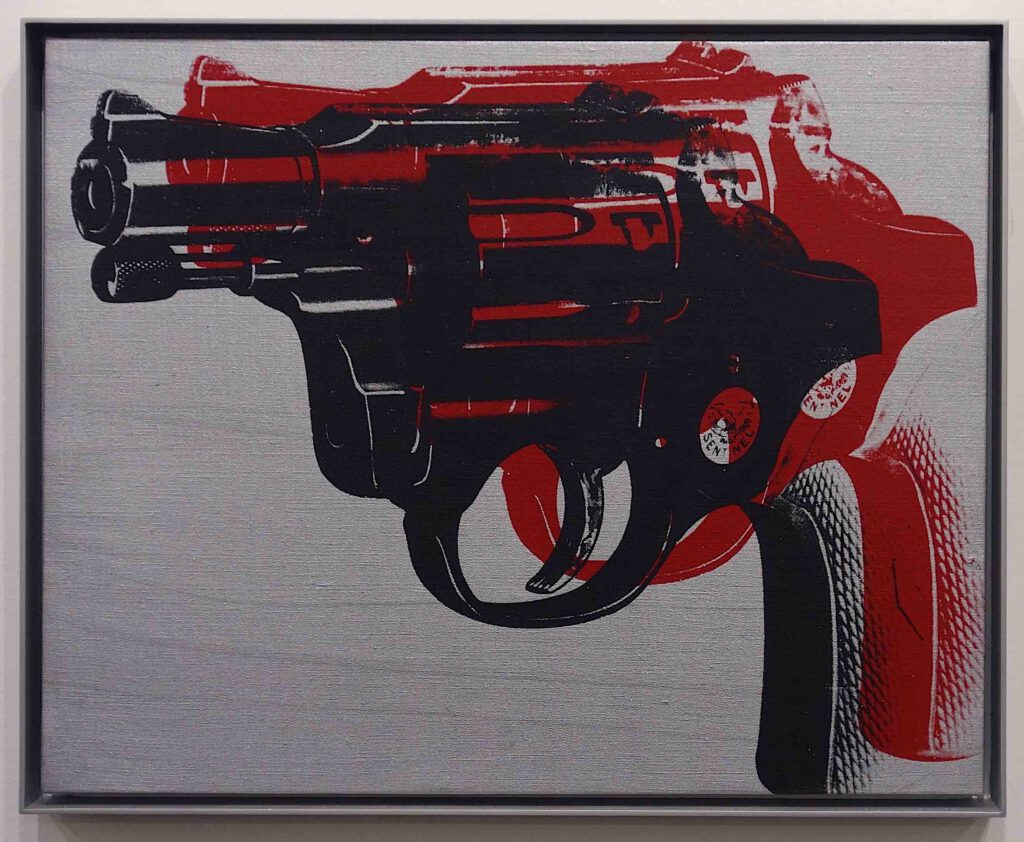
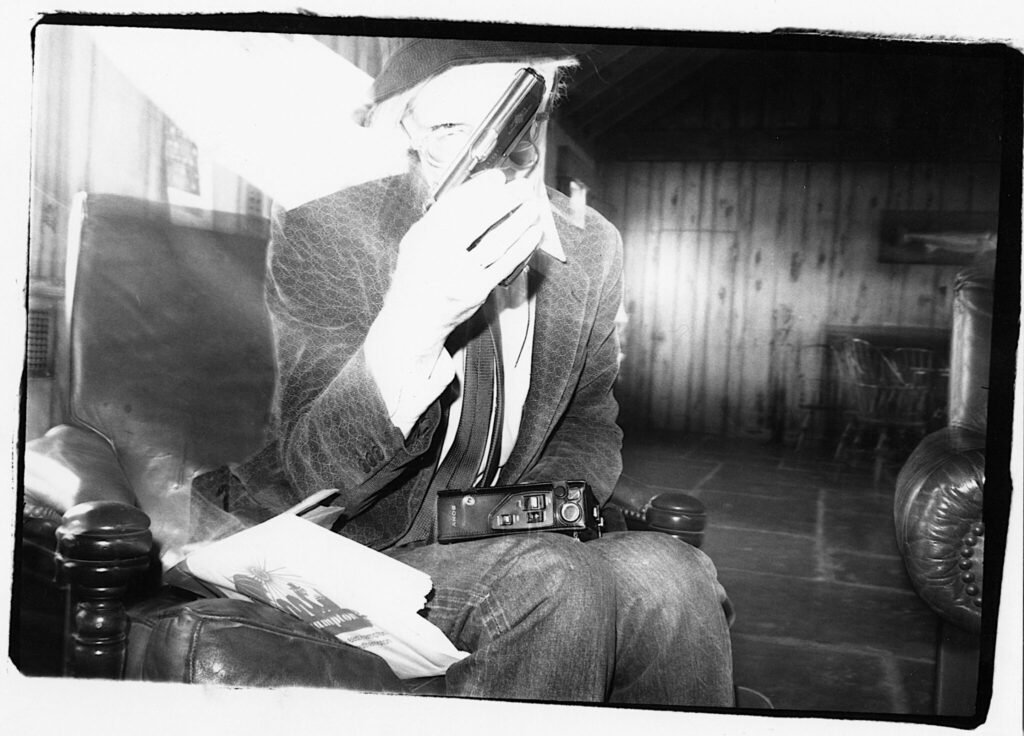
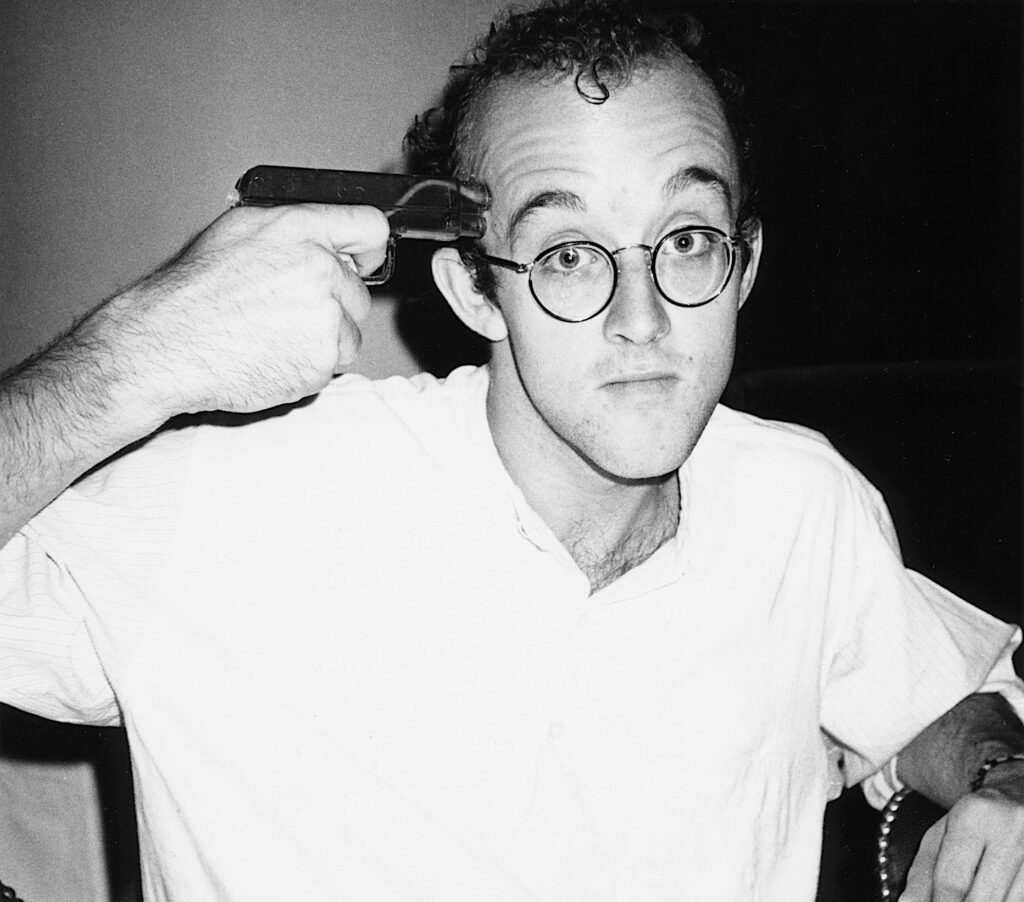
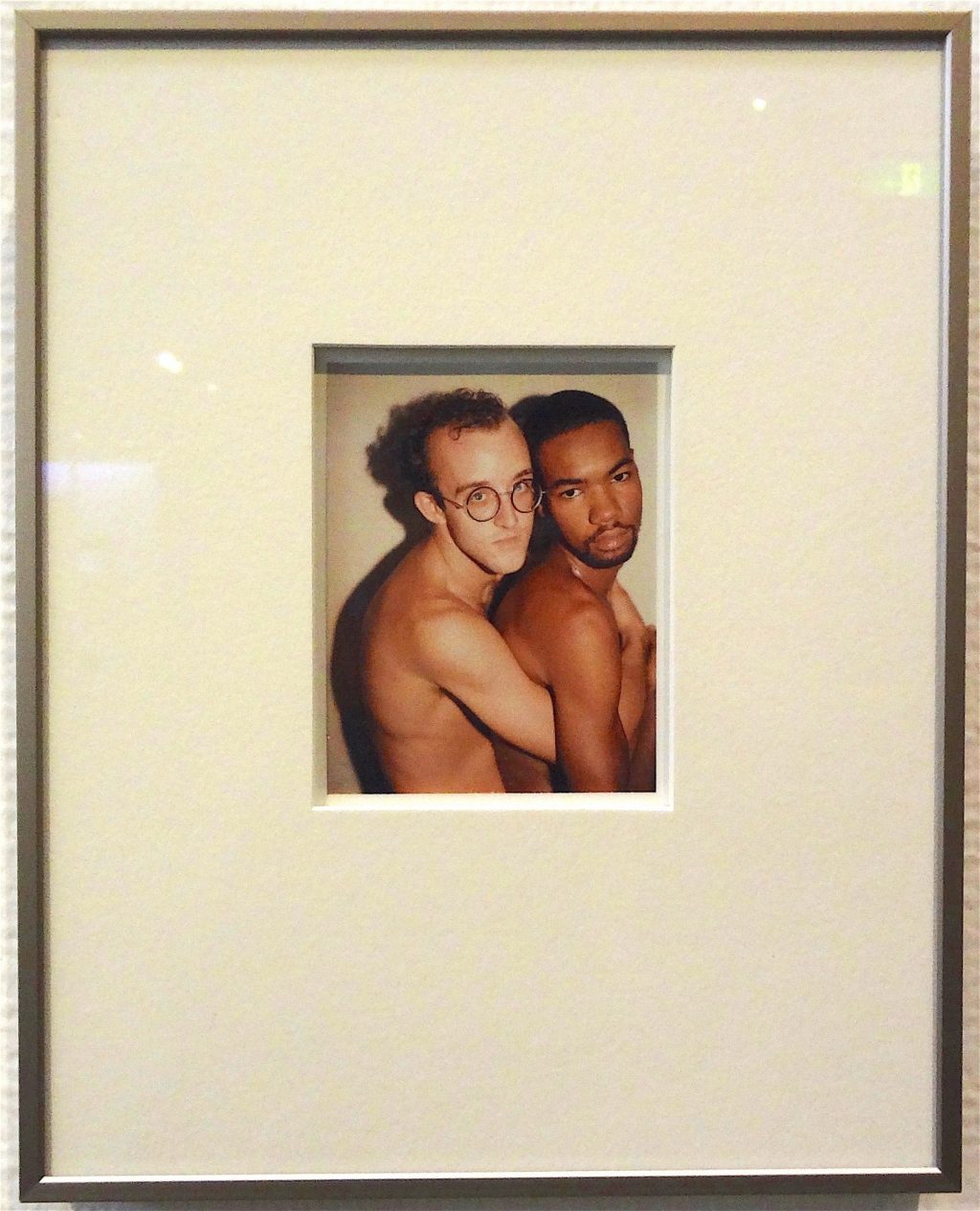
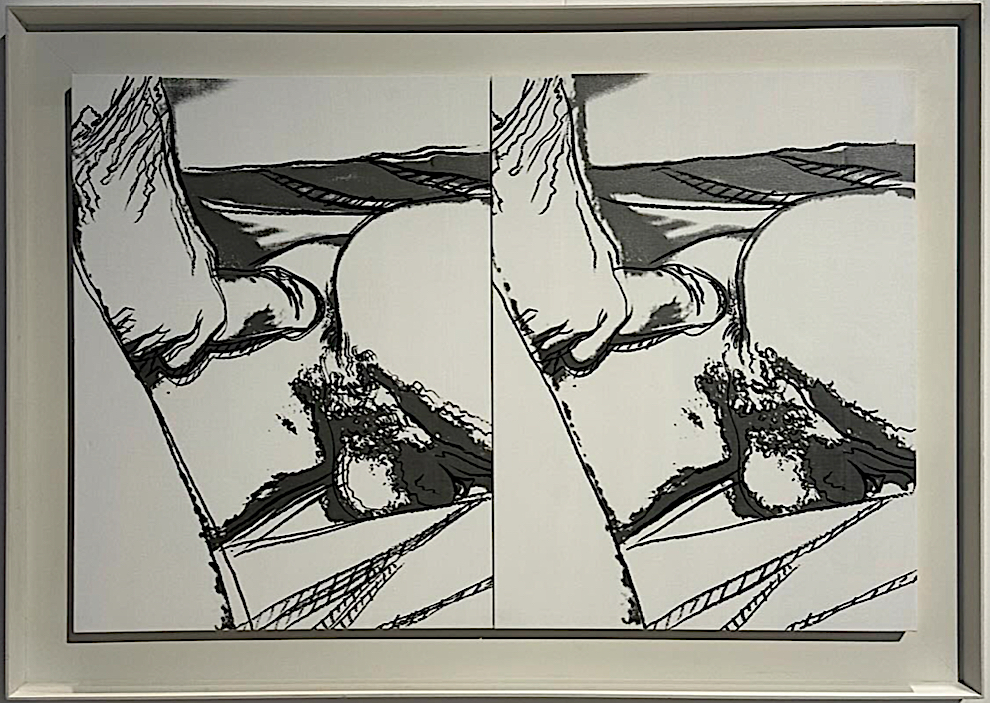
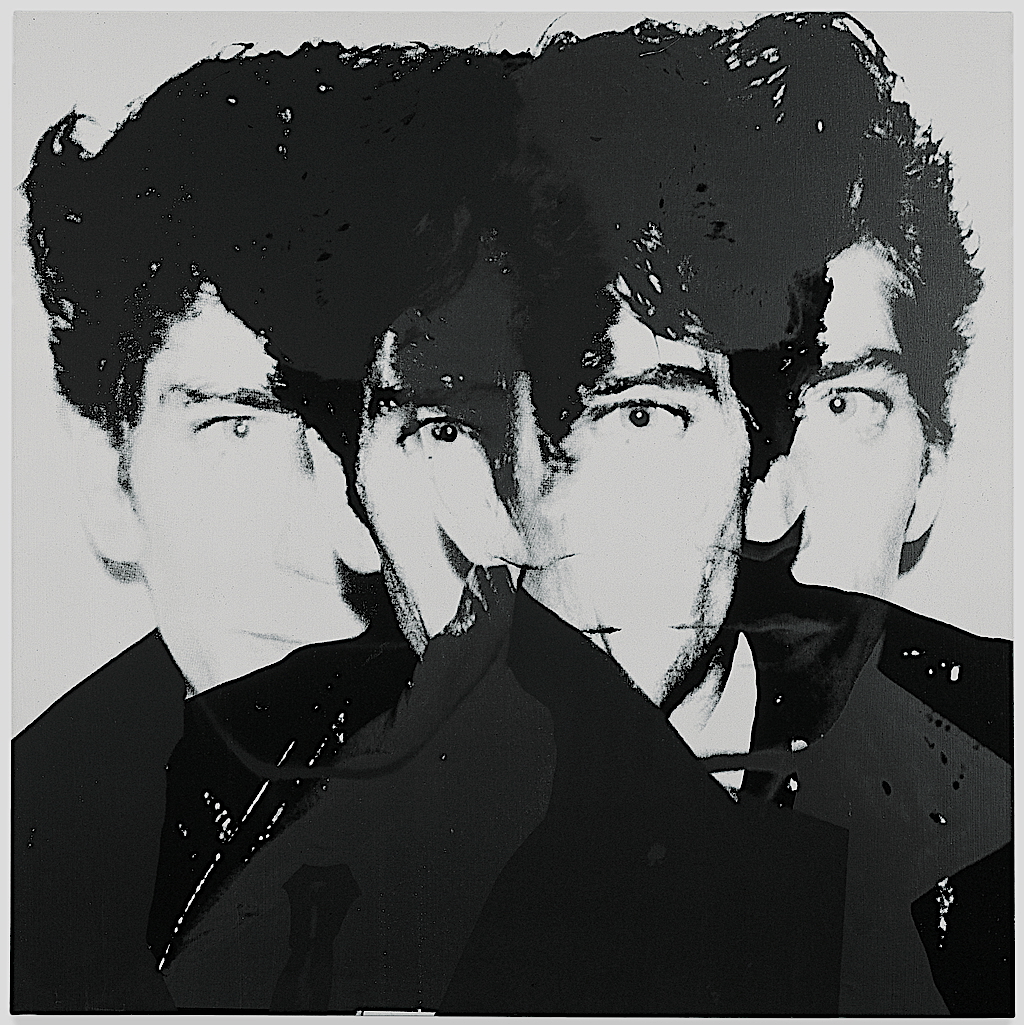
see:
アンディ・ウォーホル「ロバート・メイプルソープ」1983年作 @ ハウザー&ワース・チューリッヒ
Andy Warhol “Robert Mapplethorpe” 1983 @ Hauser & Wirth Zürich
https://art-culture.world/art-world/warhol-mapplethorpe/
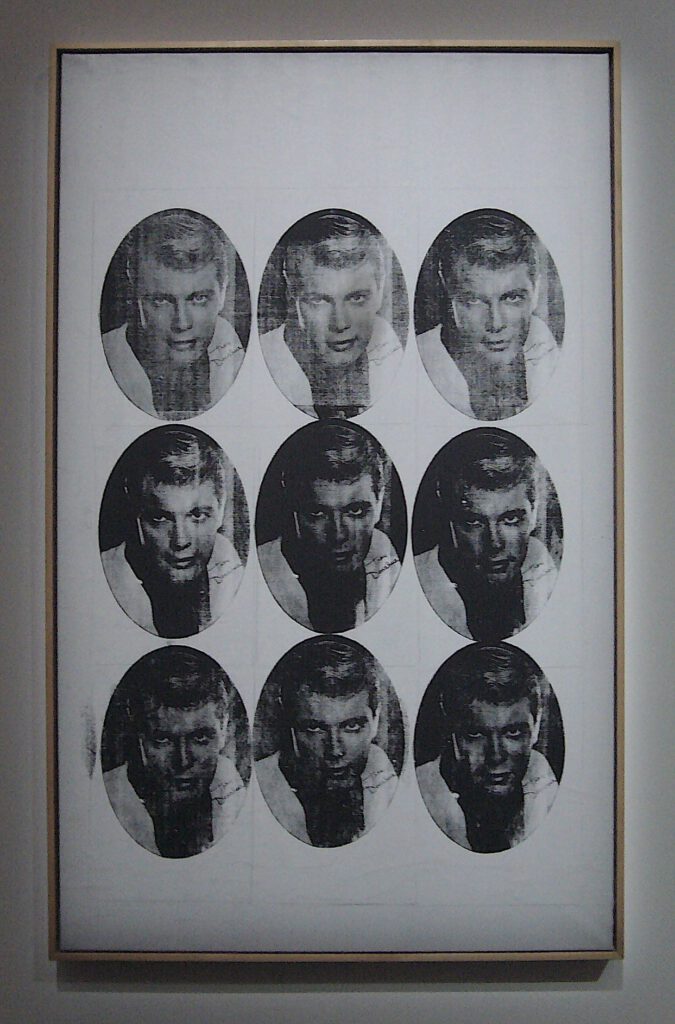
WARHOL UNDERGROUND @ Centre Pompidou-Metz, July 2015.
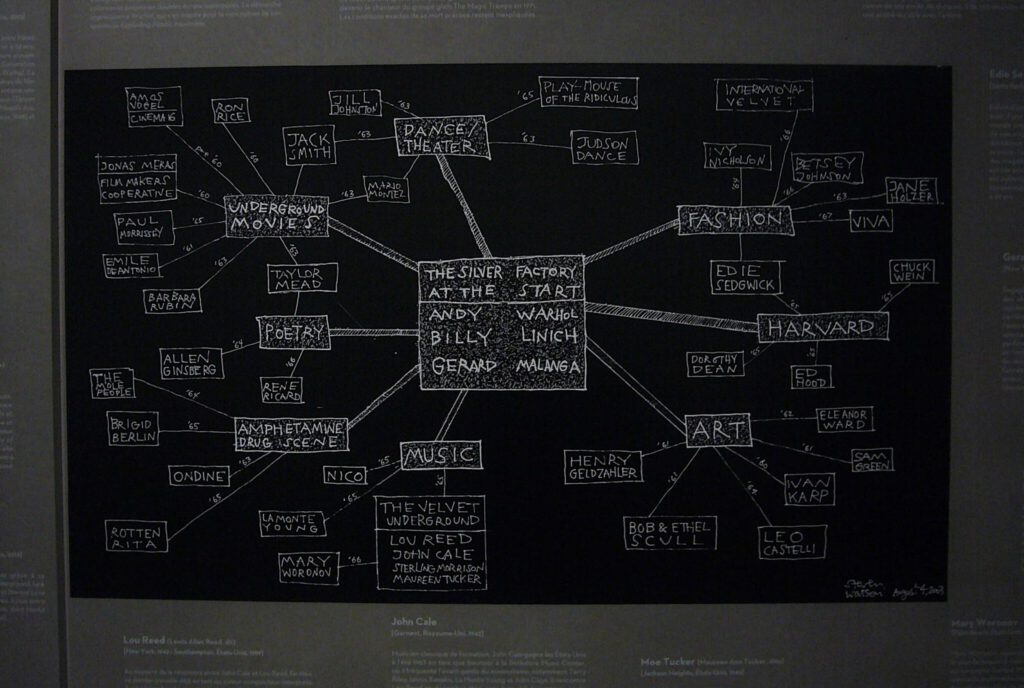
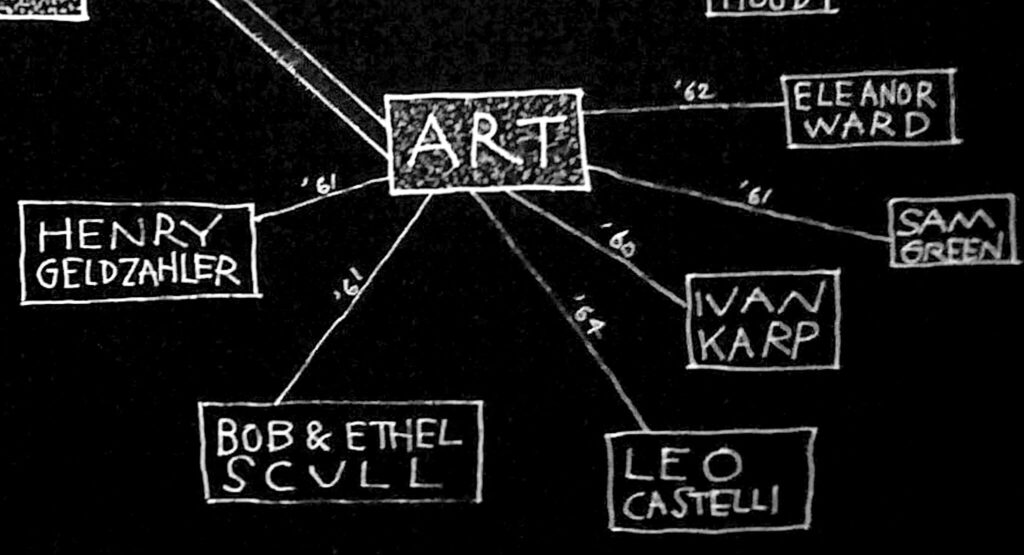
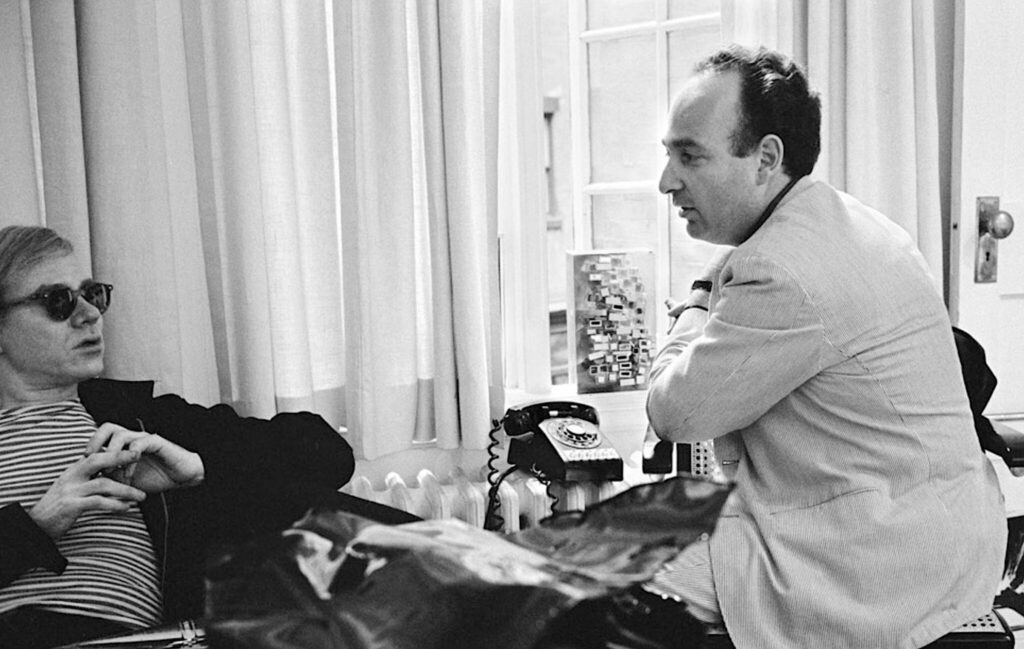
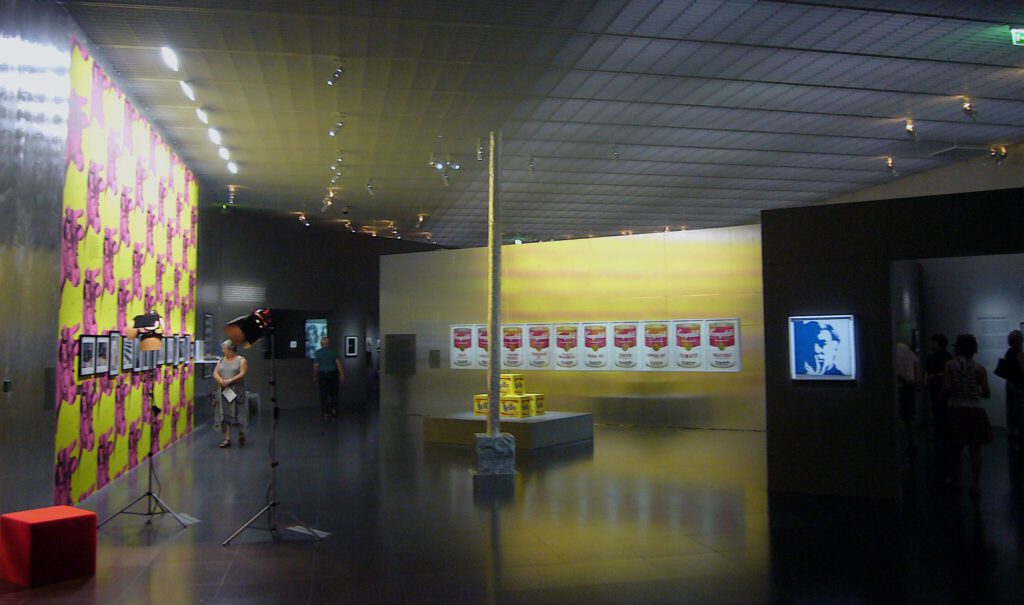
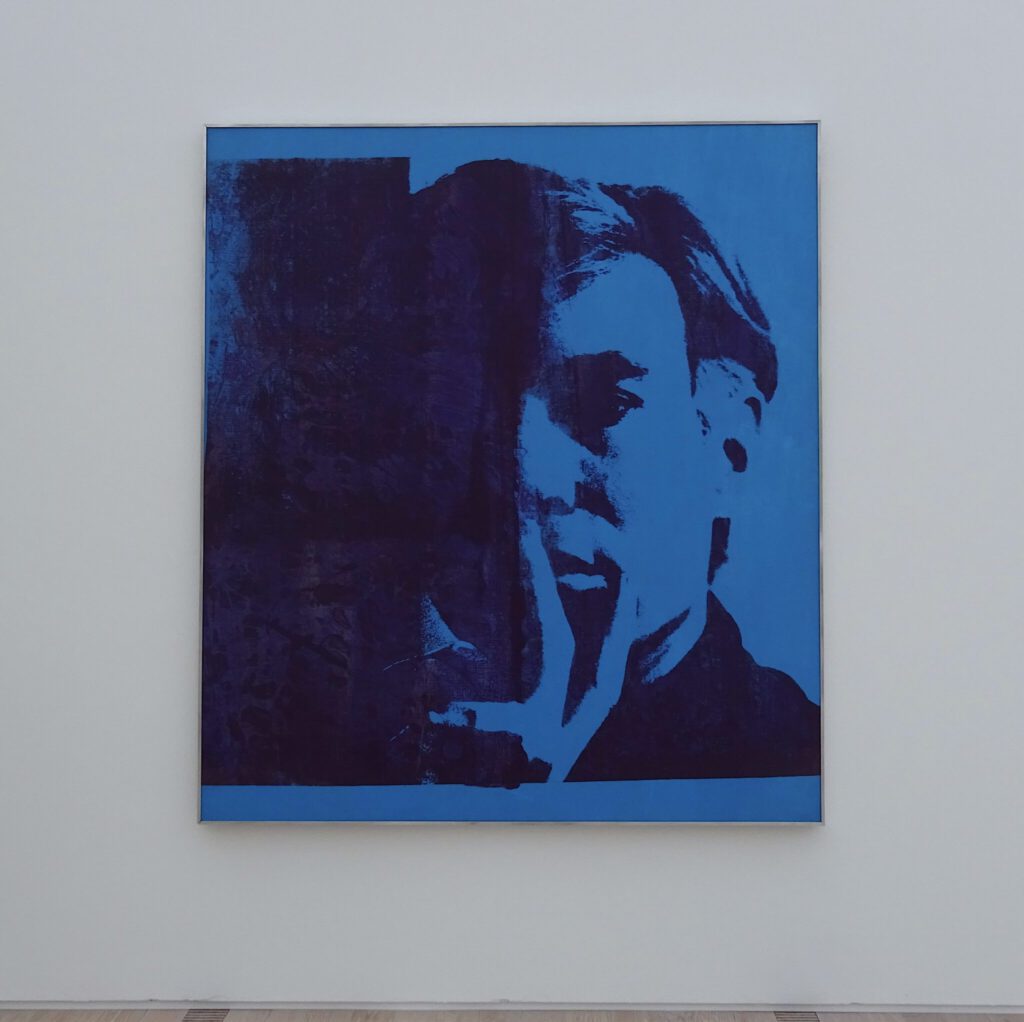
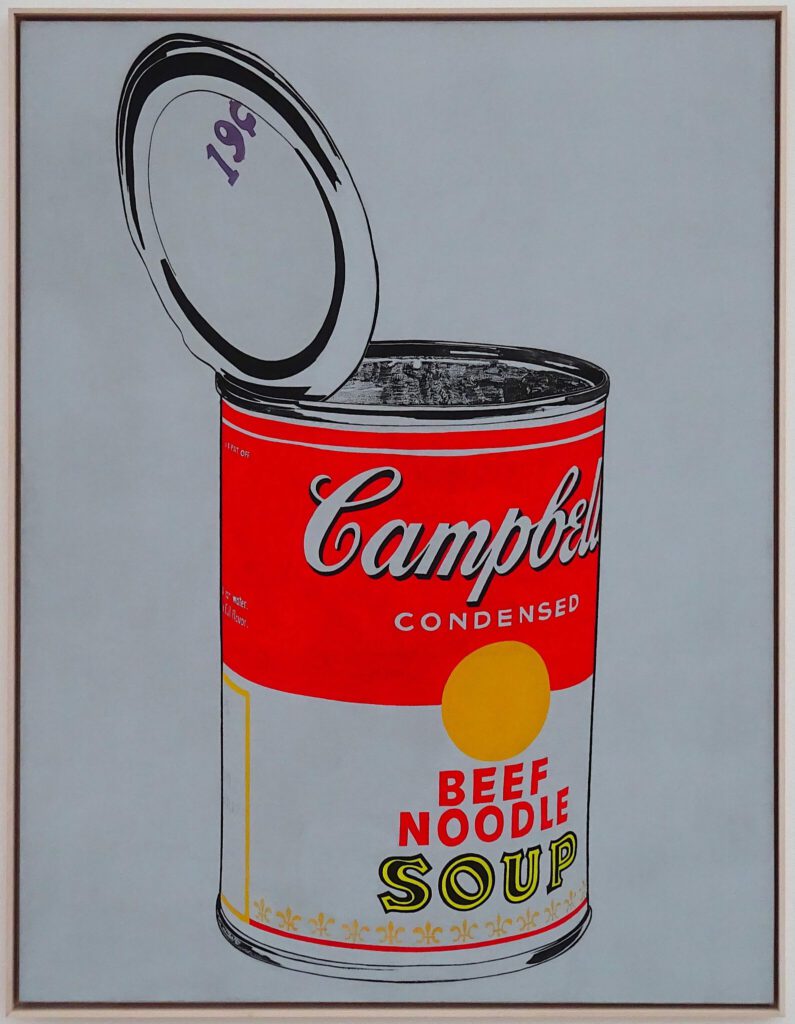
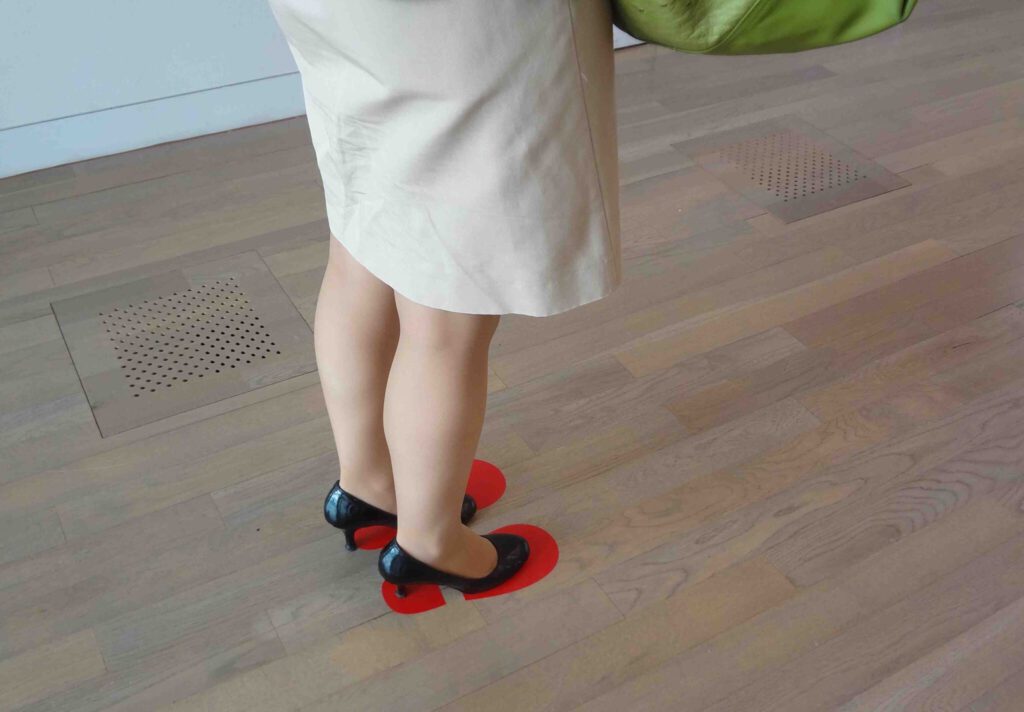
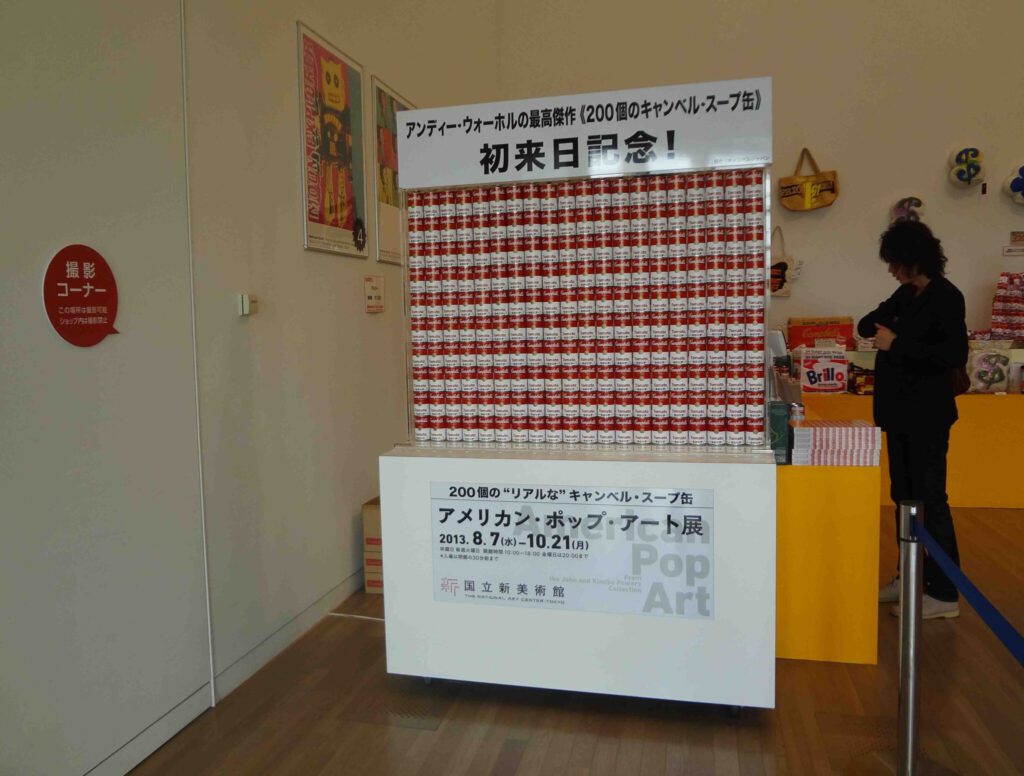

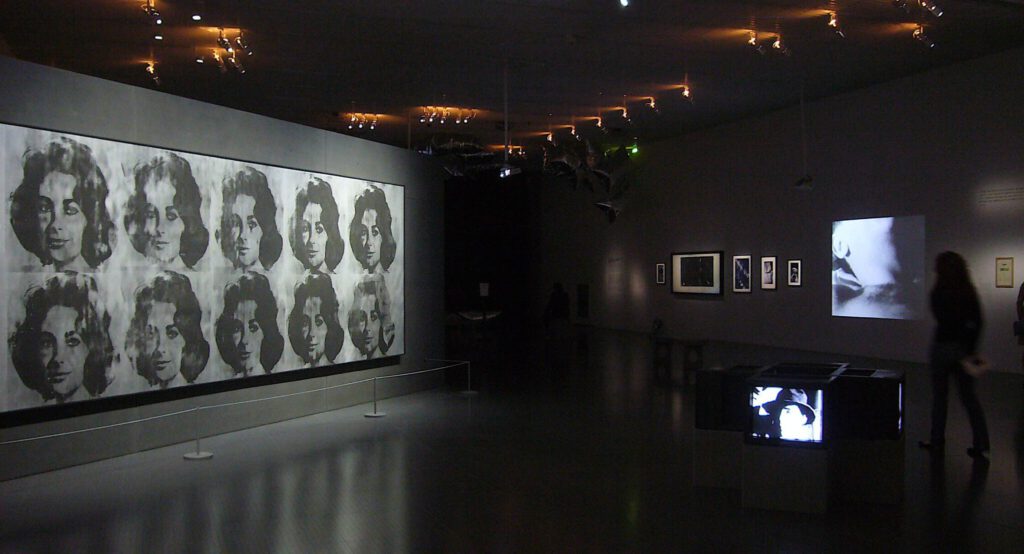
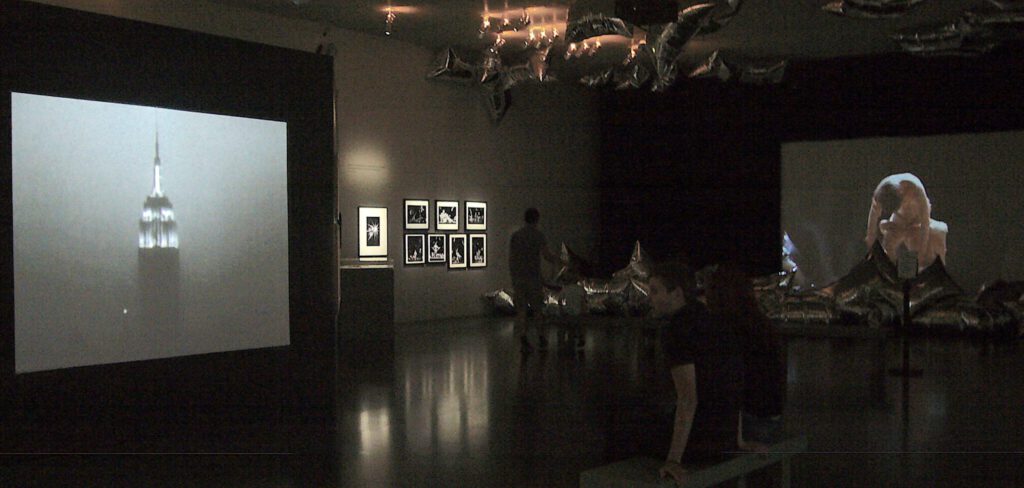
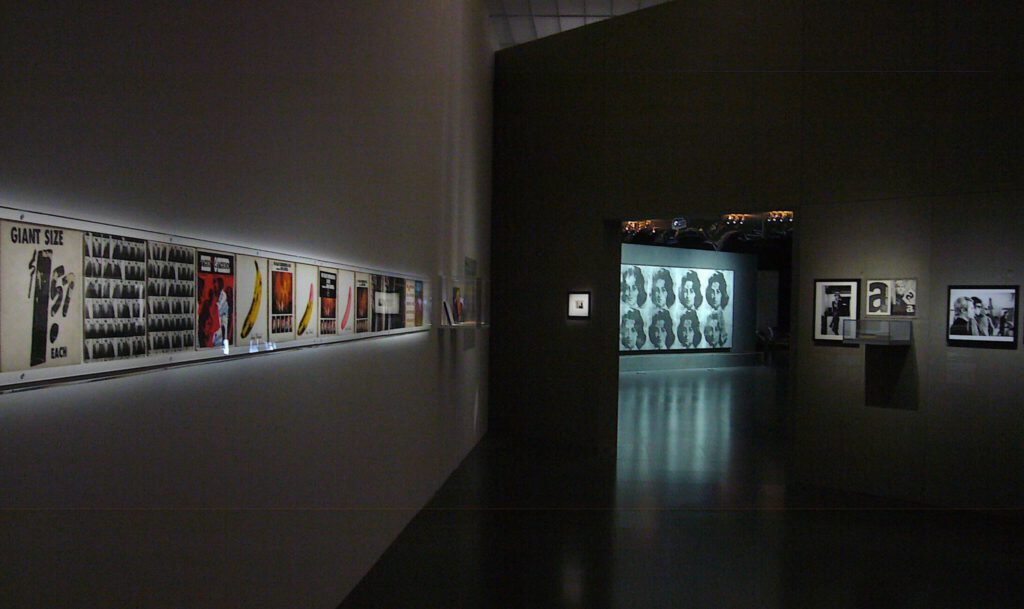
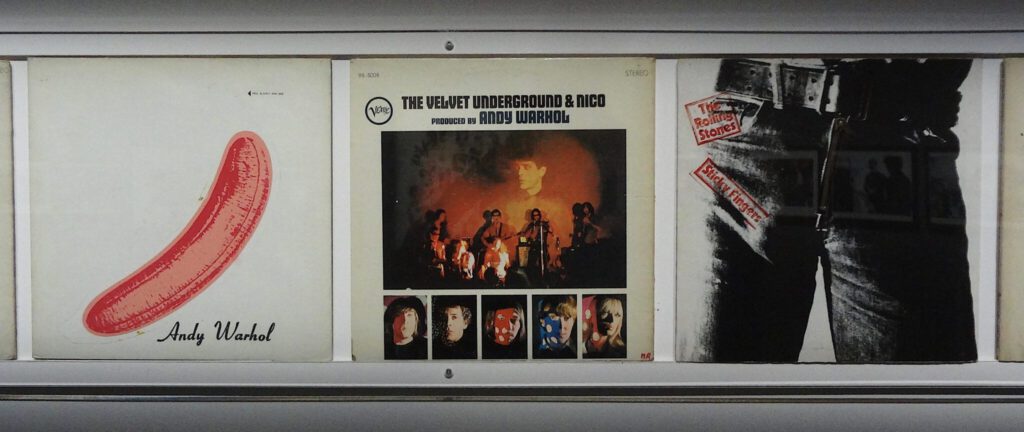
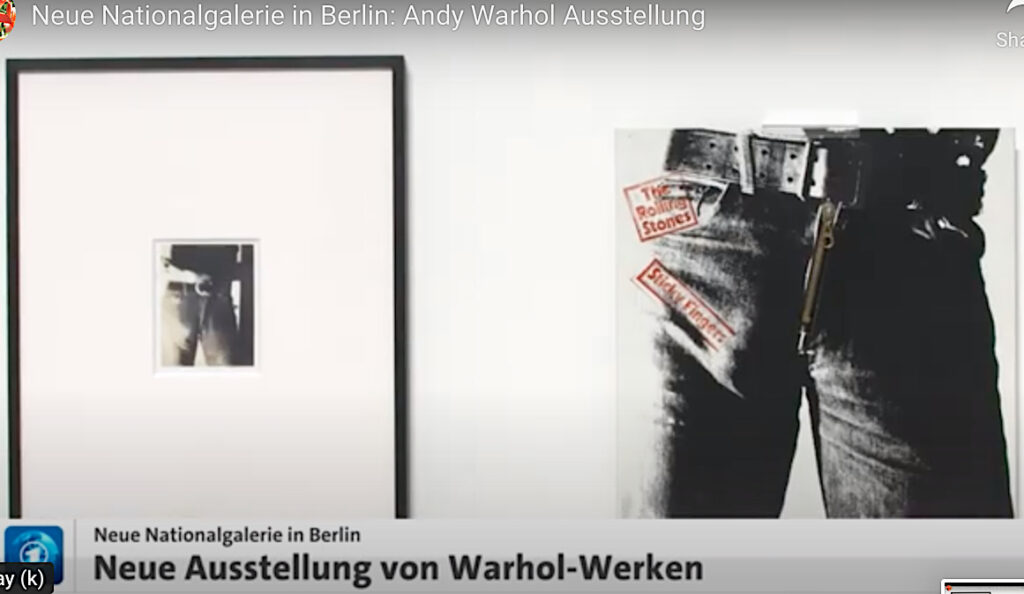
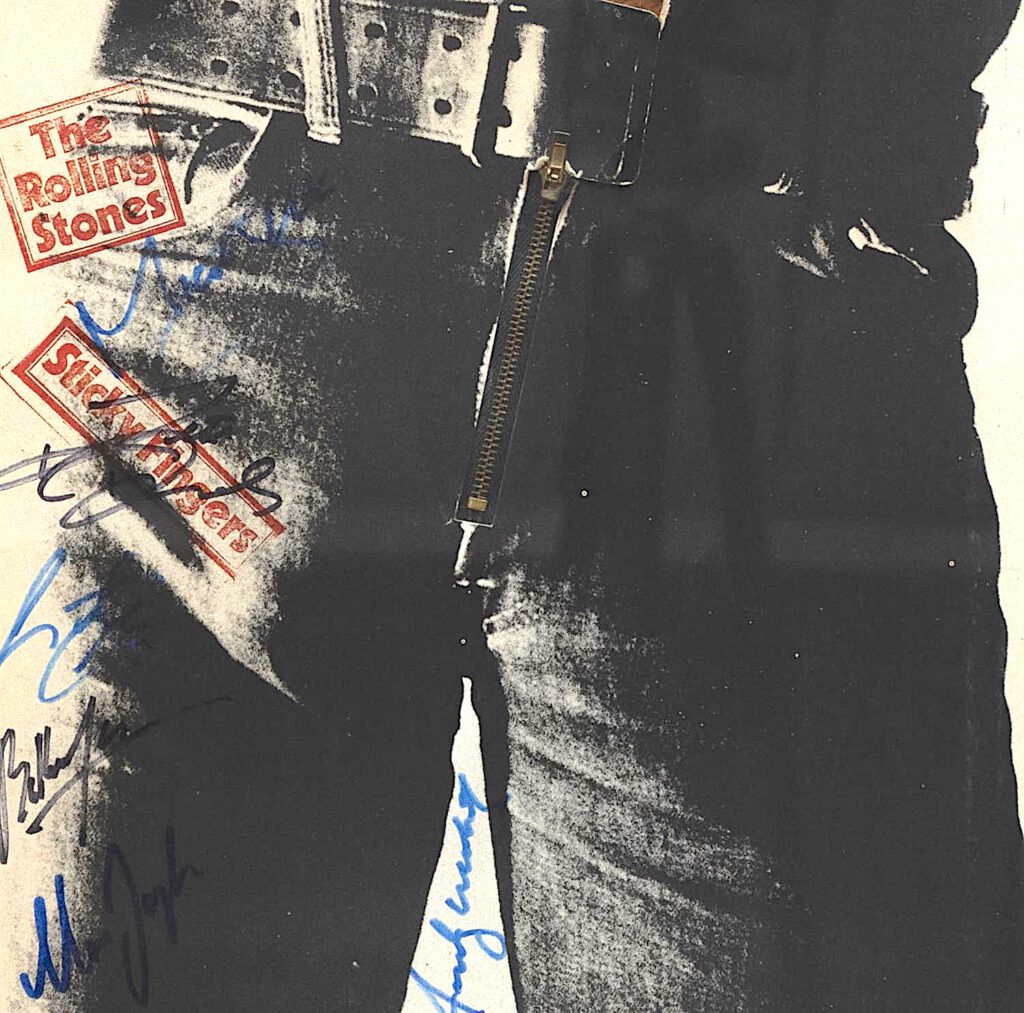
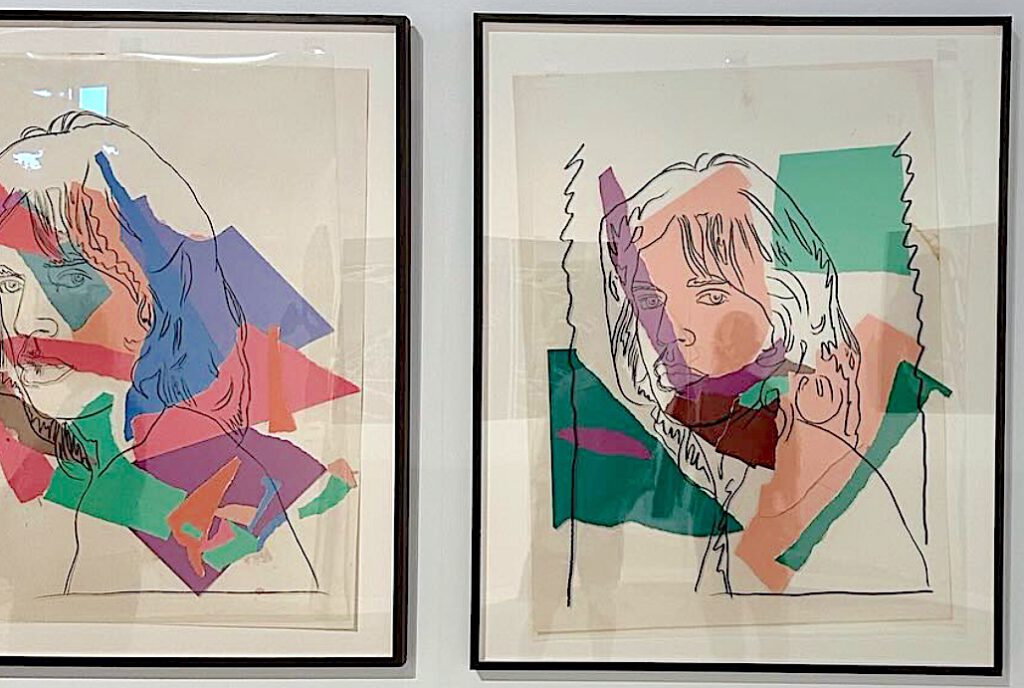
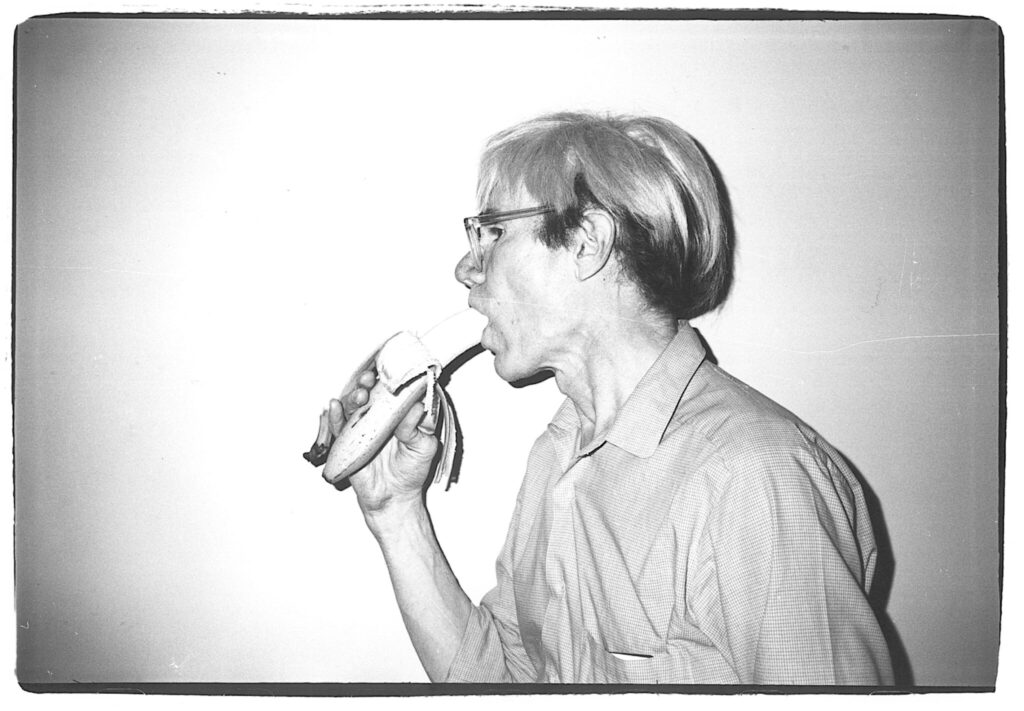
Try: “Just do it with your Banana” © Mario A 「Just do it with your Banana」© 亜 真里男
https://art-culture.world/art-world/just-do-it-with-your-banana/
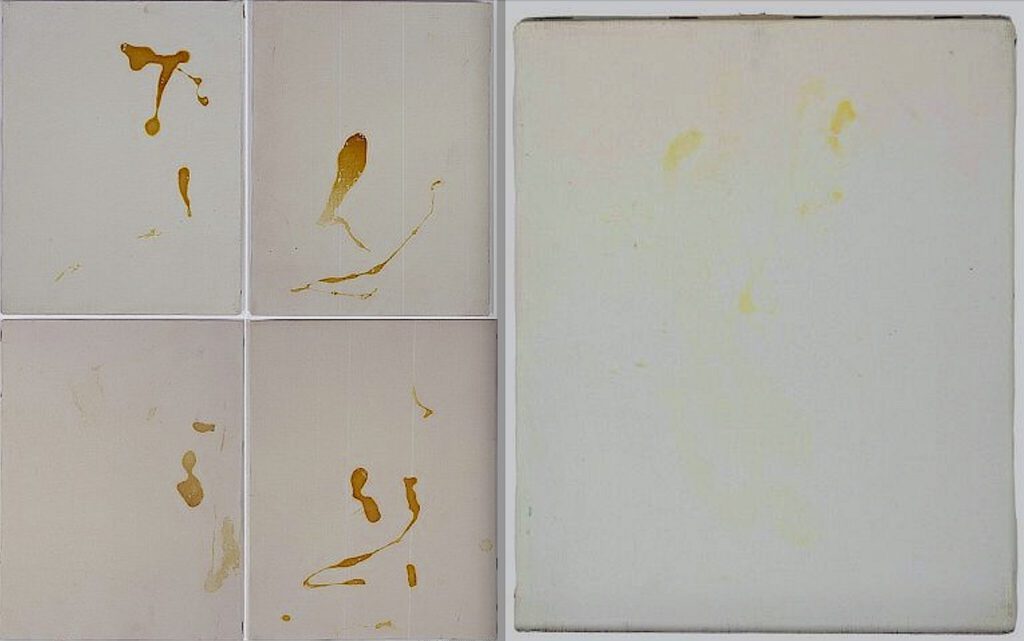
Kyoto, The National Museum of Modern Art
and Tokyo, The National Museum of Art,
“Traces Body and Idea in Contemporary Art”
November 2004-February 2005.
Left: Andy Warhol “Cum Painting” 1978. Semen on gesso on canvas, 4 panels: 24 x 18 inches overall
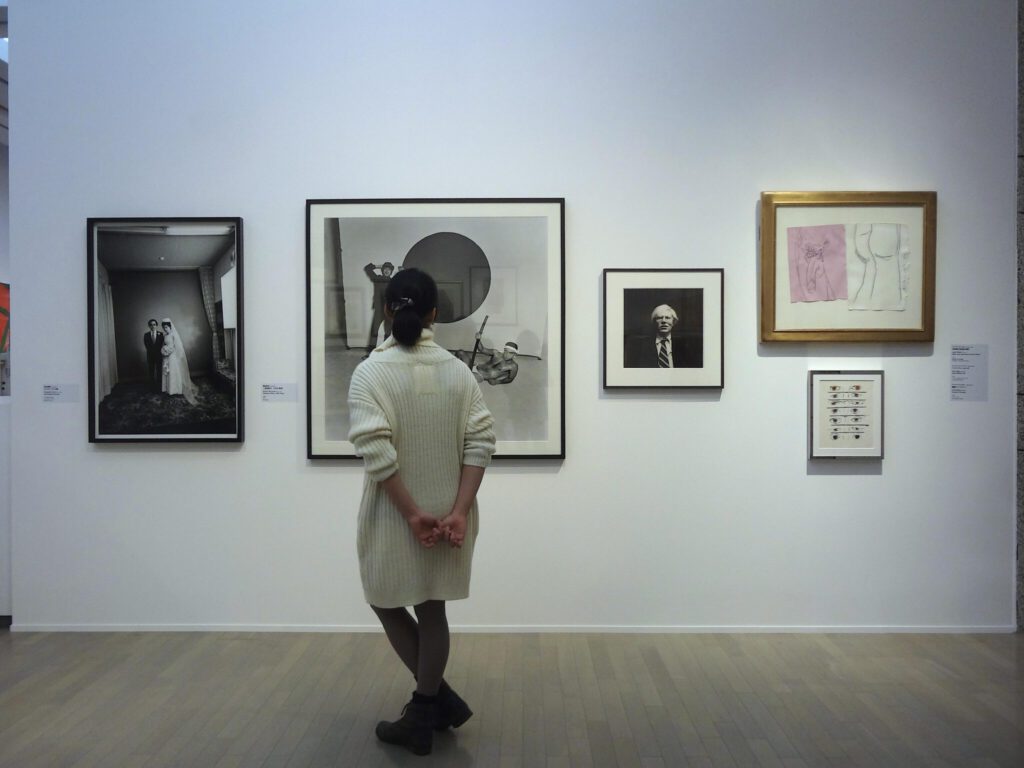
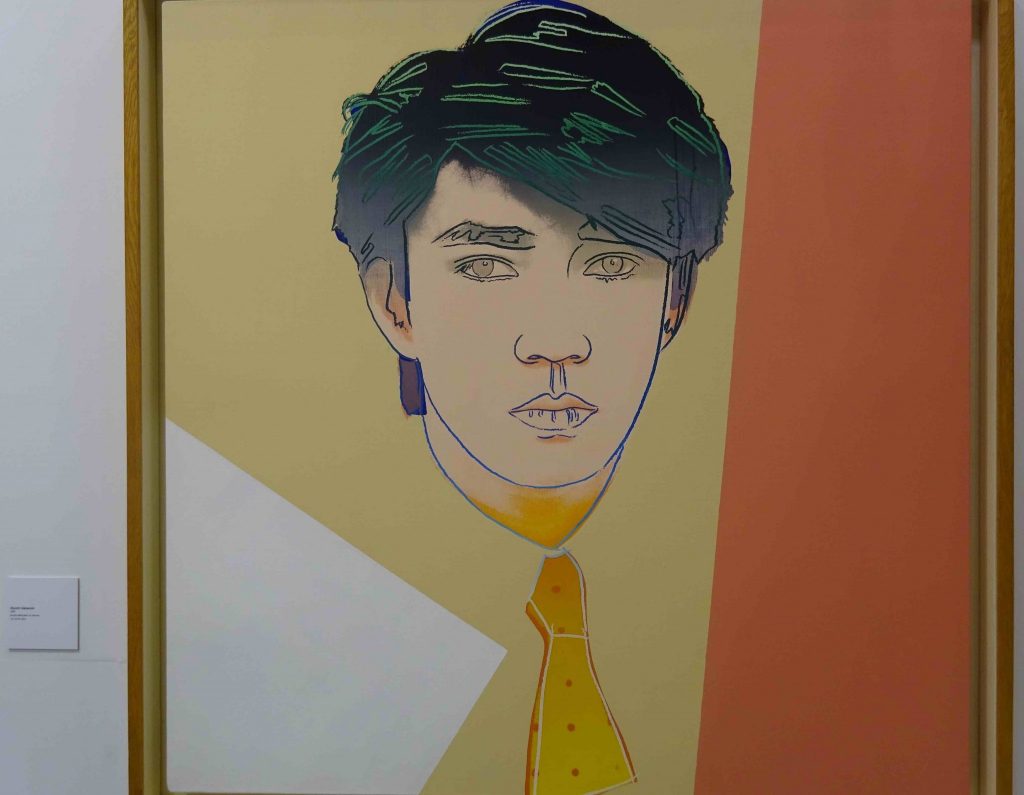
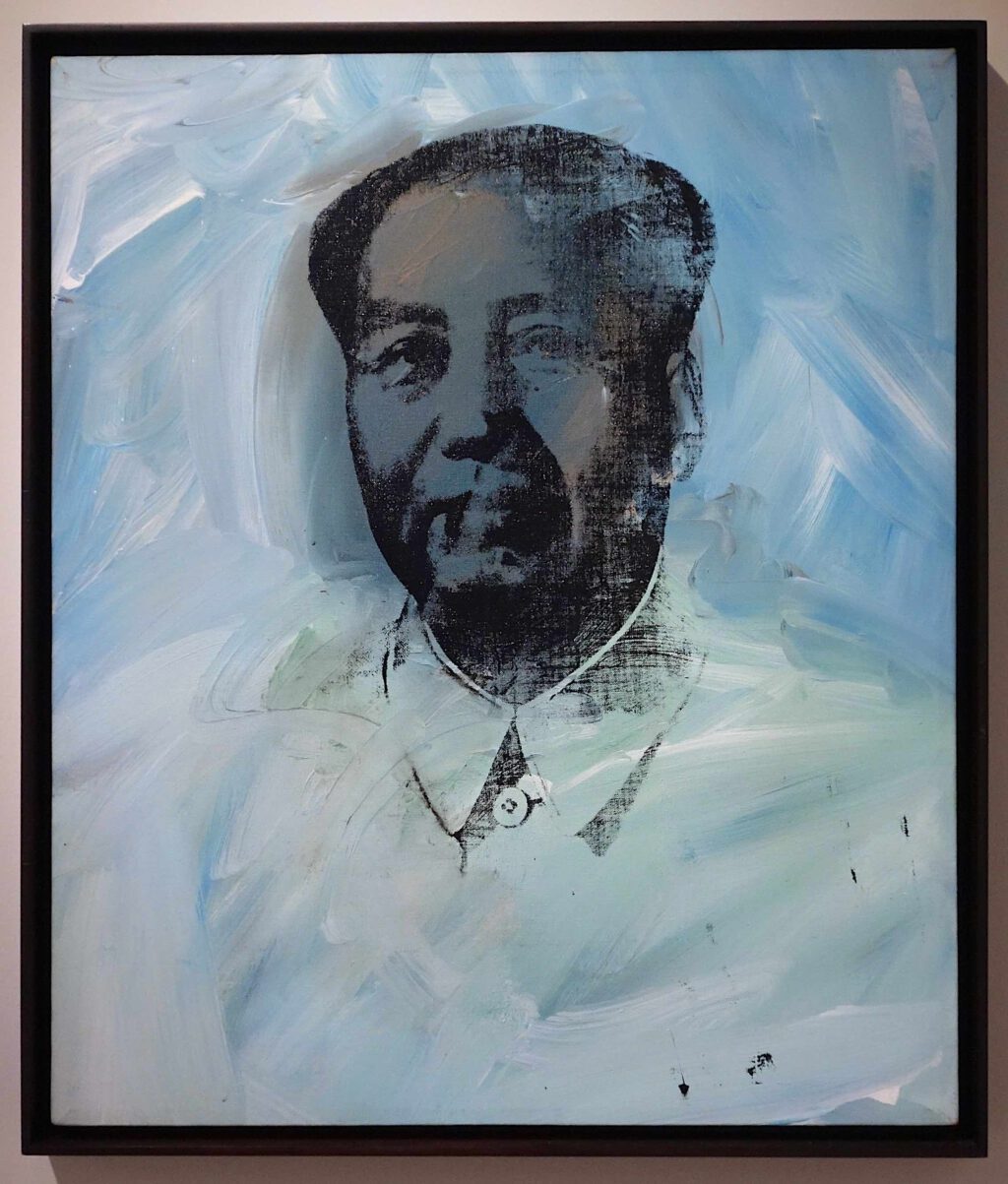
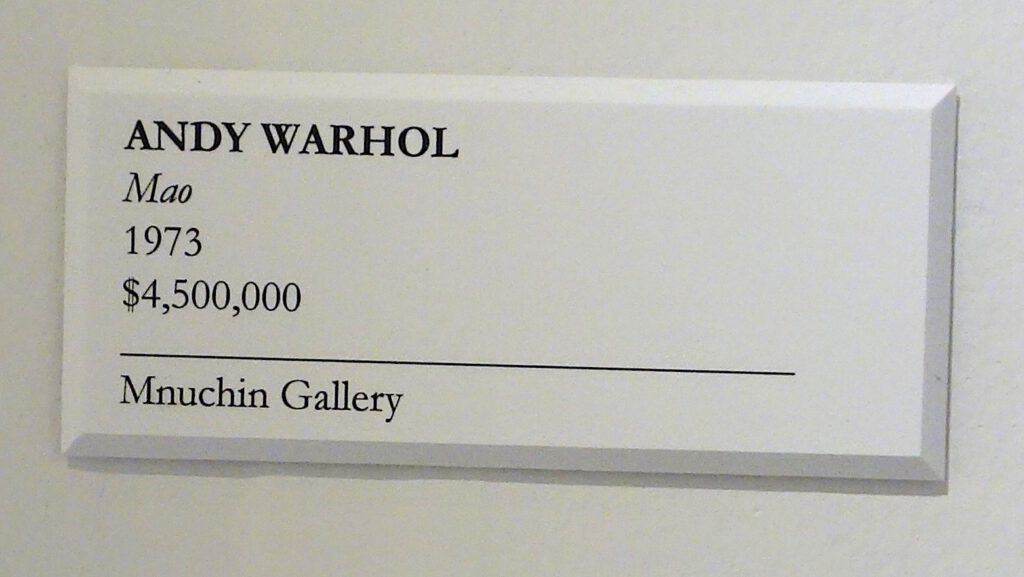
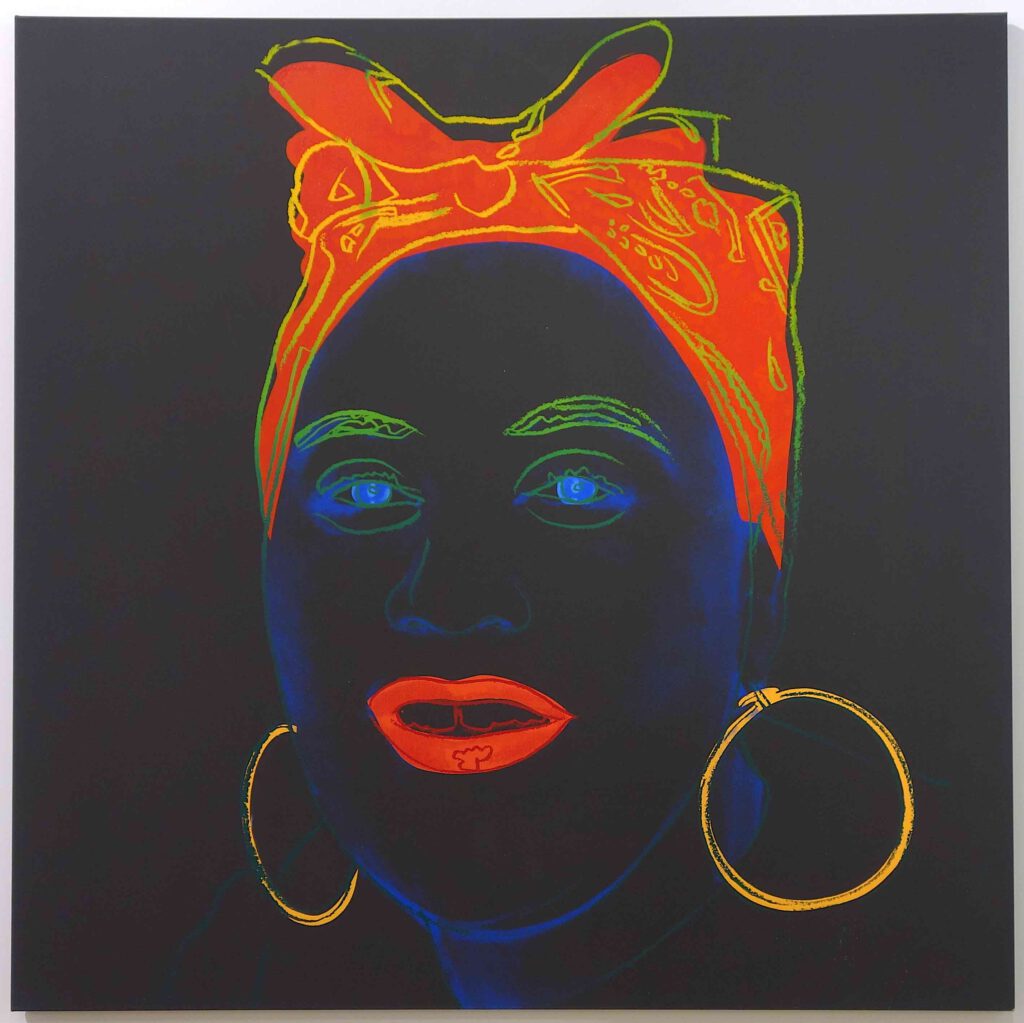
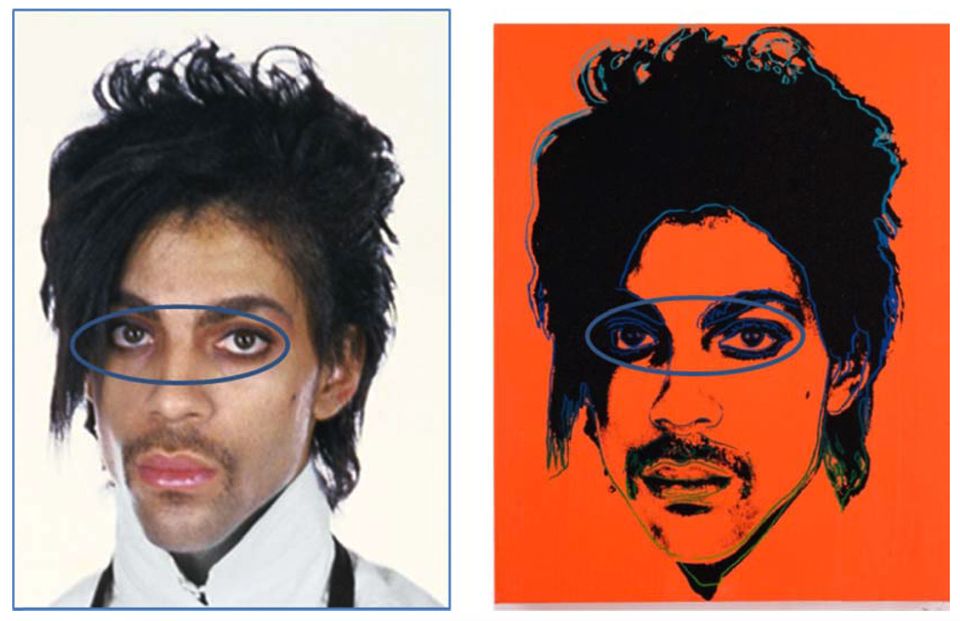
https://art-culture.world/reviews/richard-prince-and-copyright-issues-ex-sonic-youth-kim-gordon-blum-poe-tokyo/
https://art-culture.world/art-world/andy-warhol-prints/
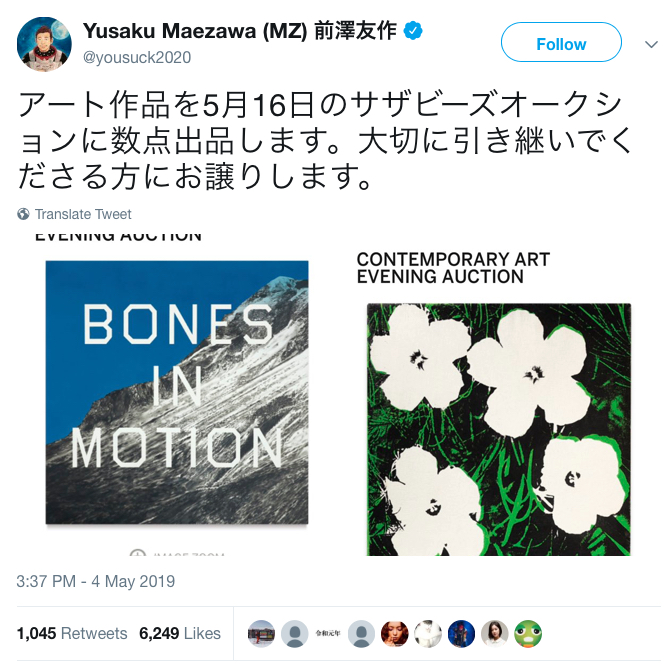
https://art-culture.world/art-world/yusaku-maezawa-art-is-liberty/
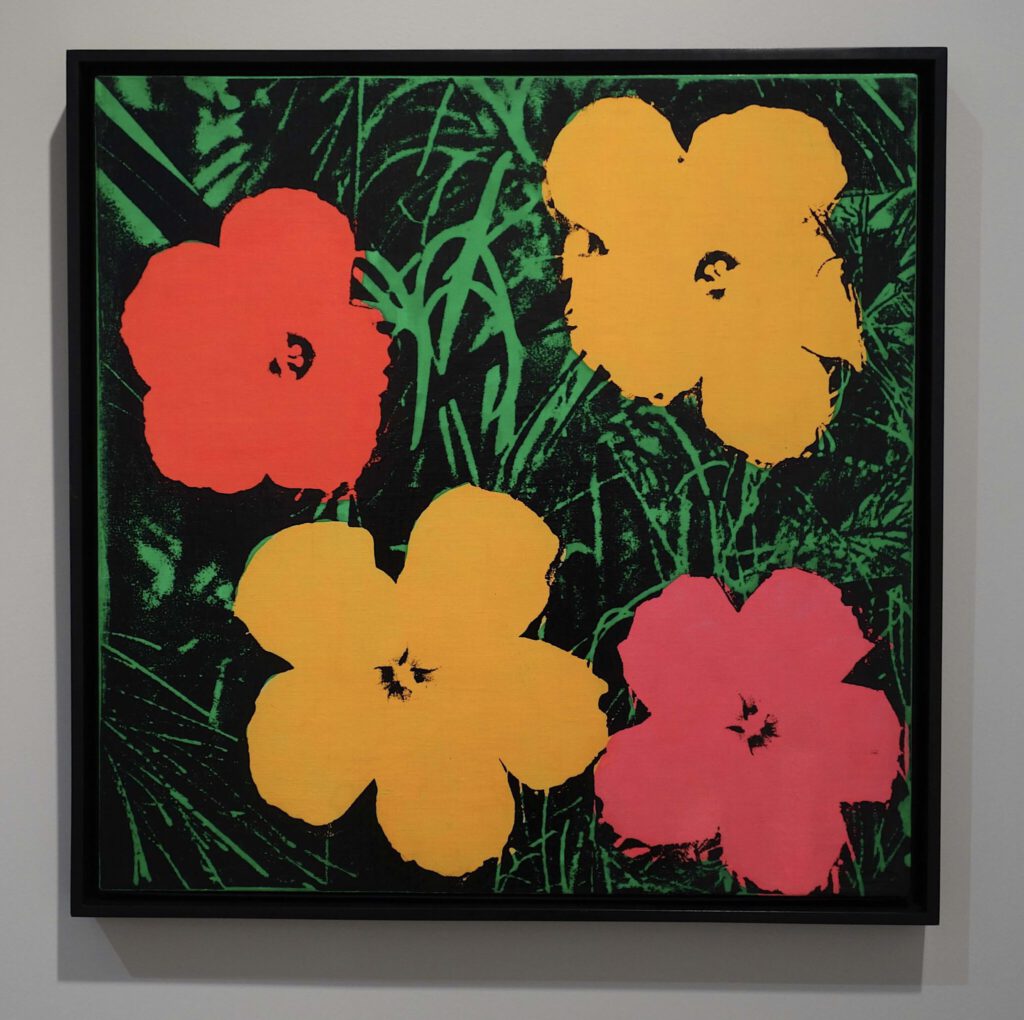
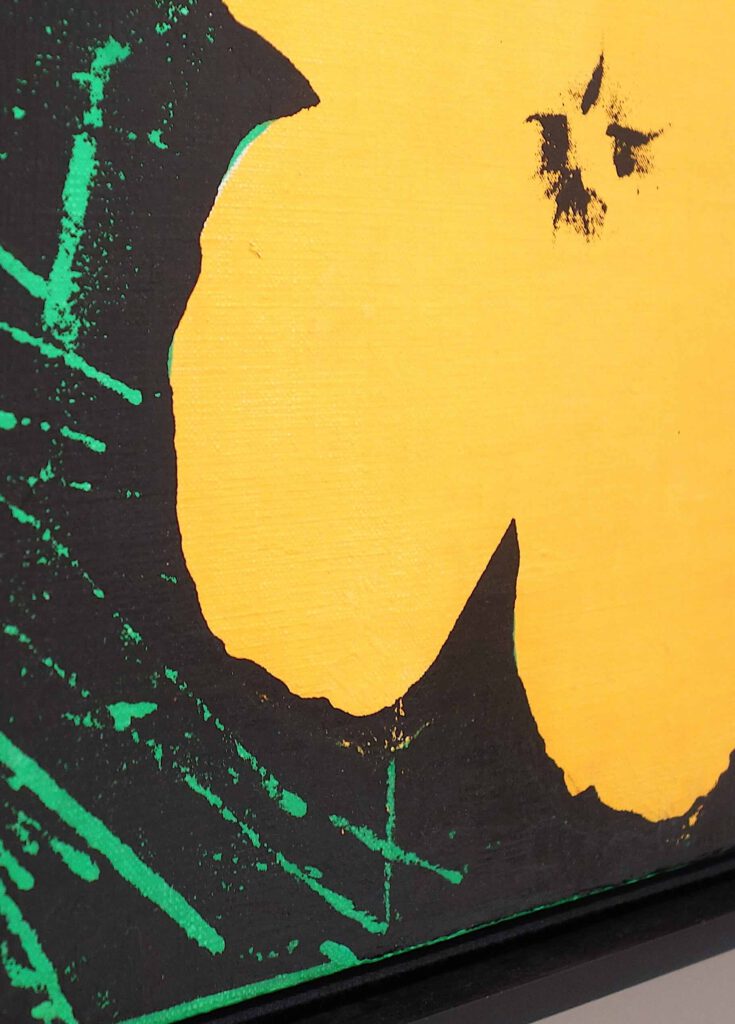
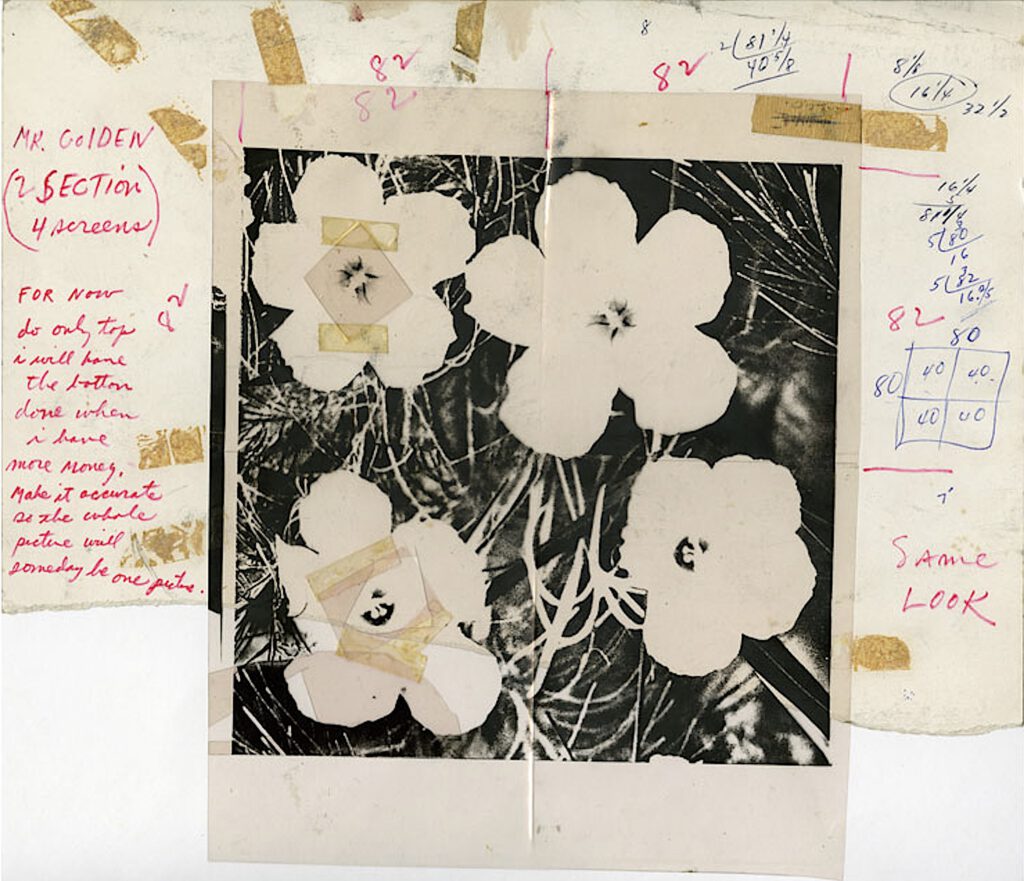
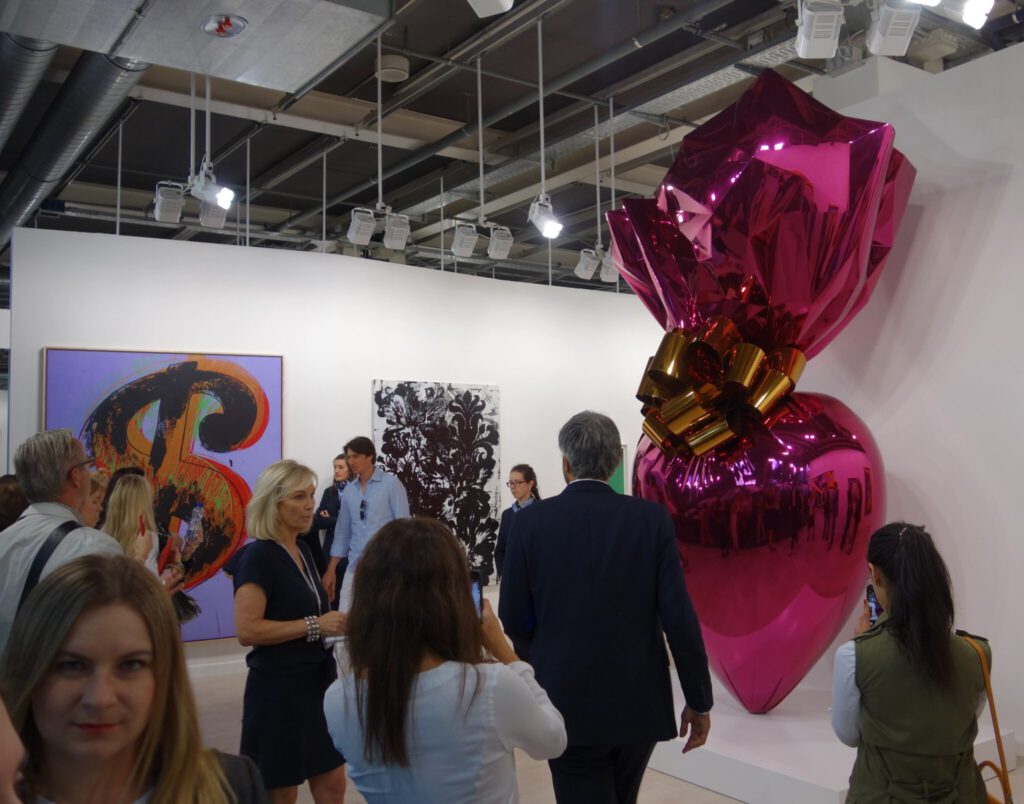
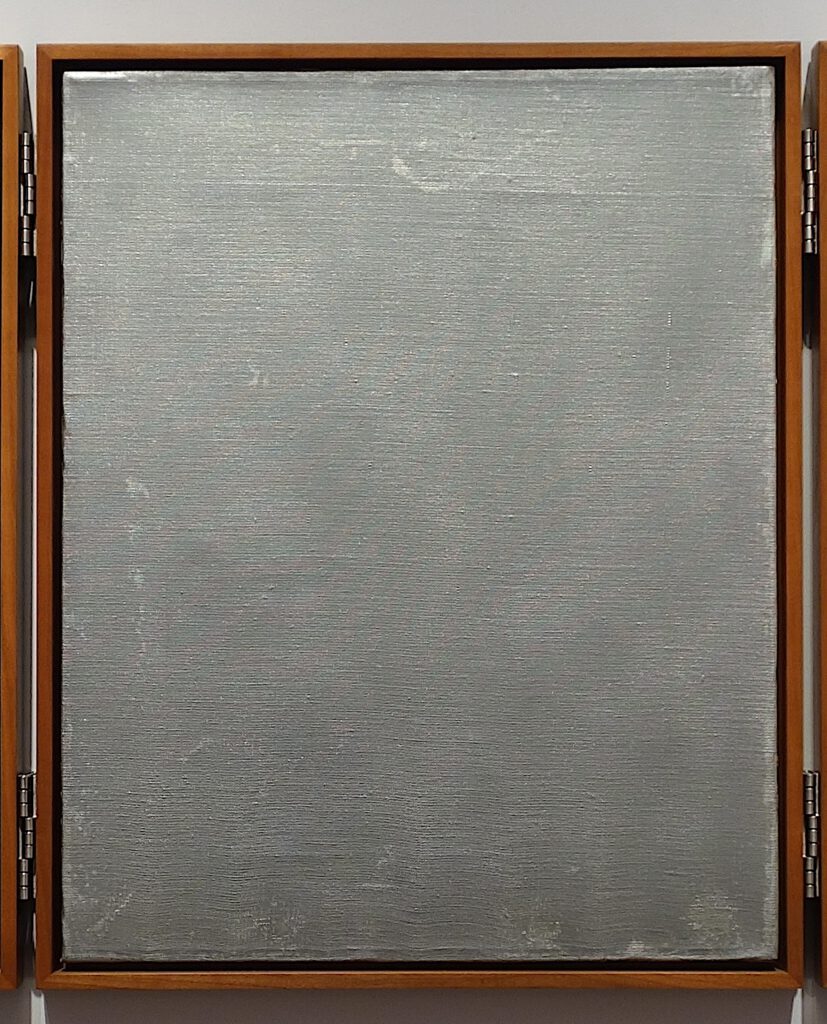
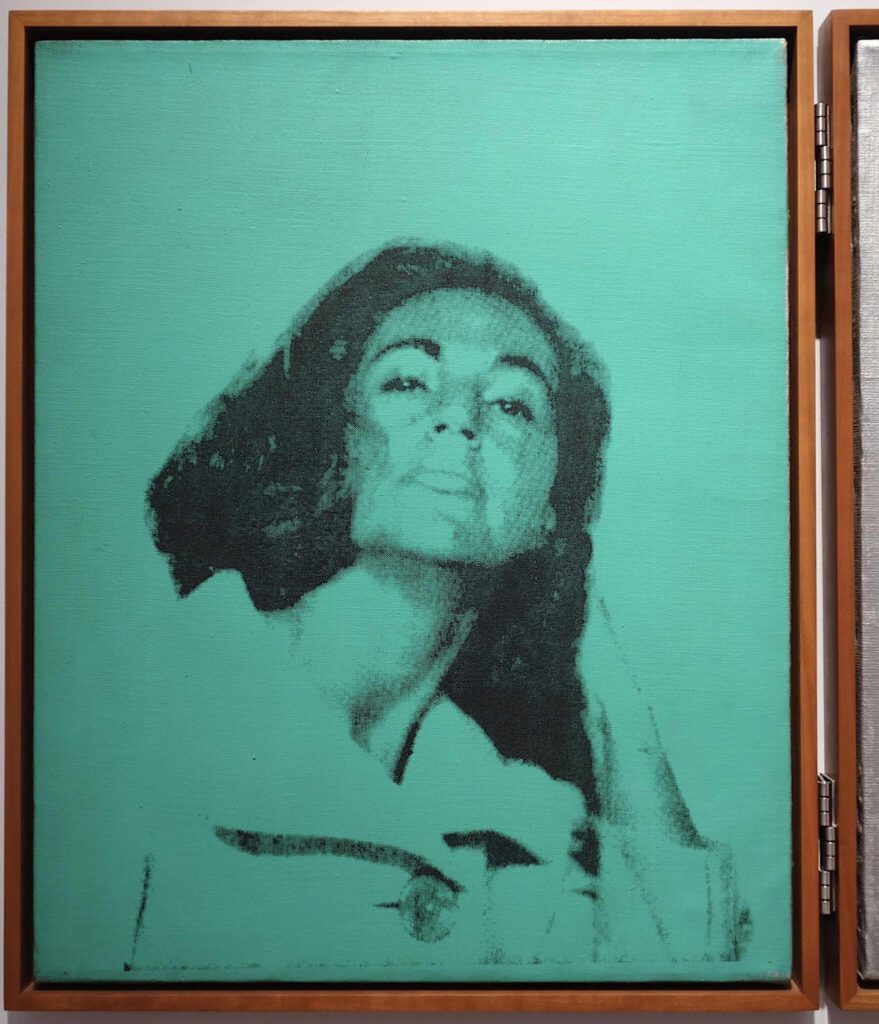
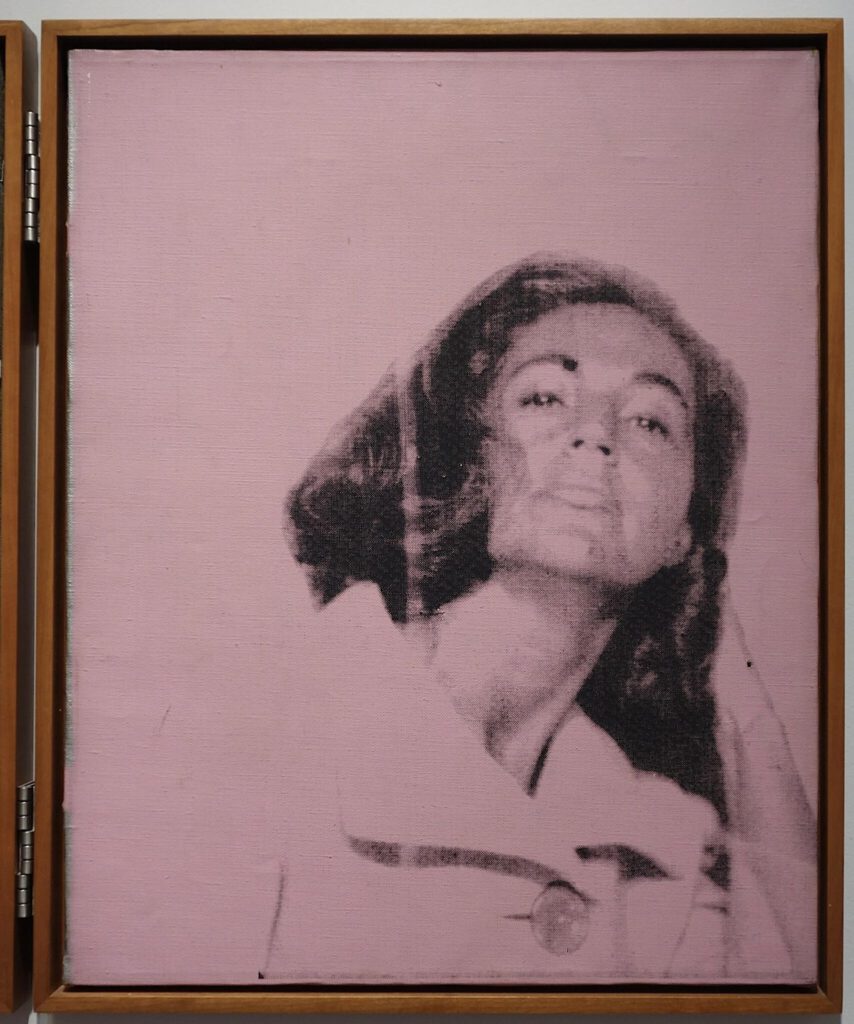
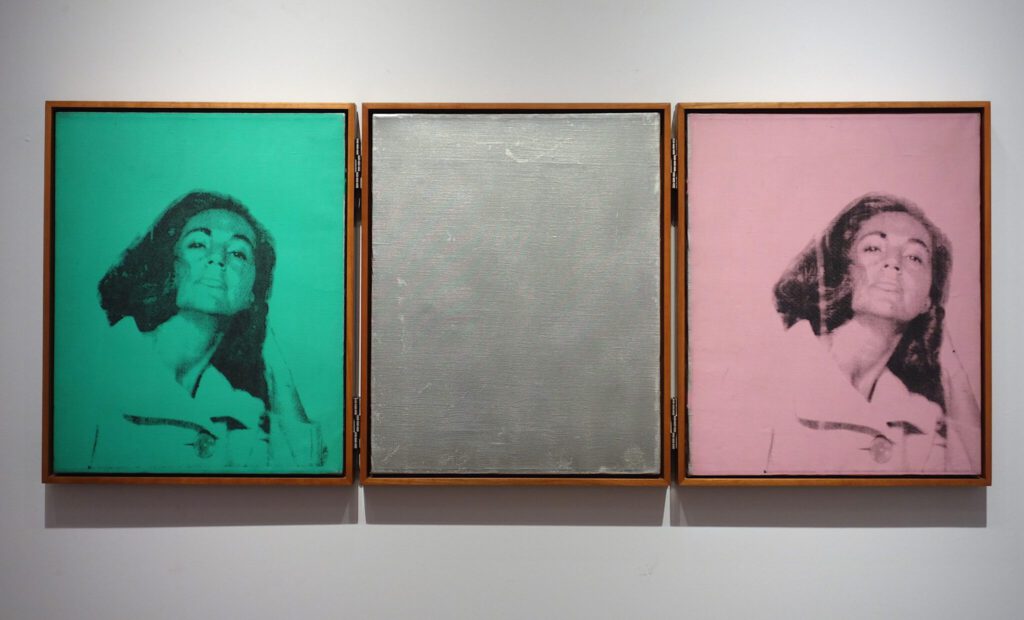
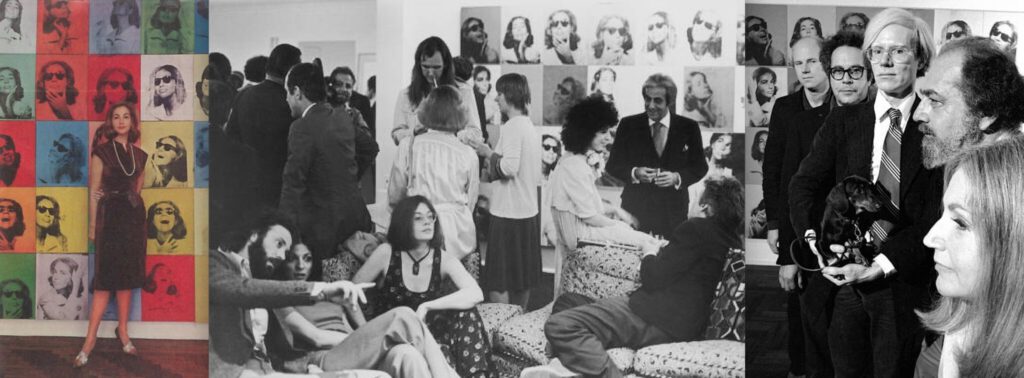
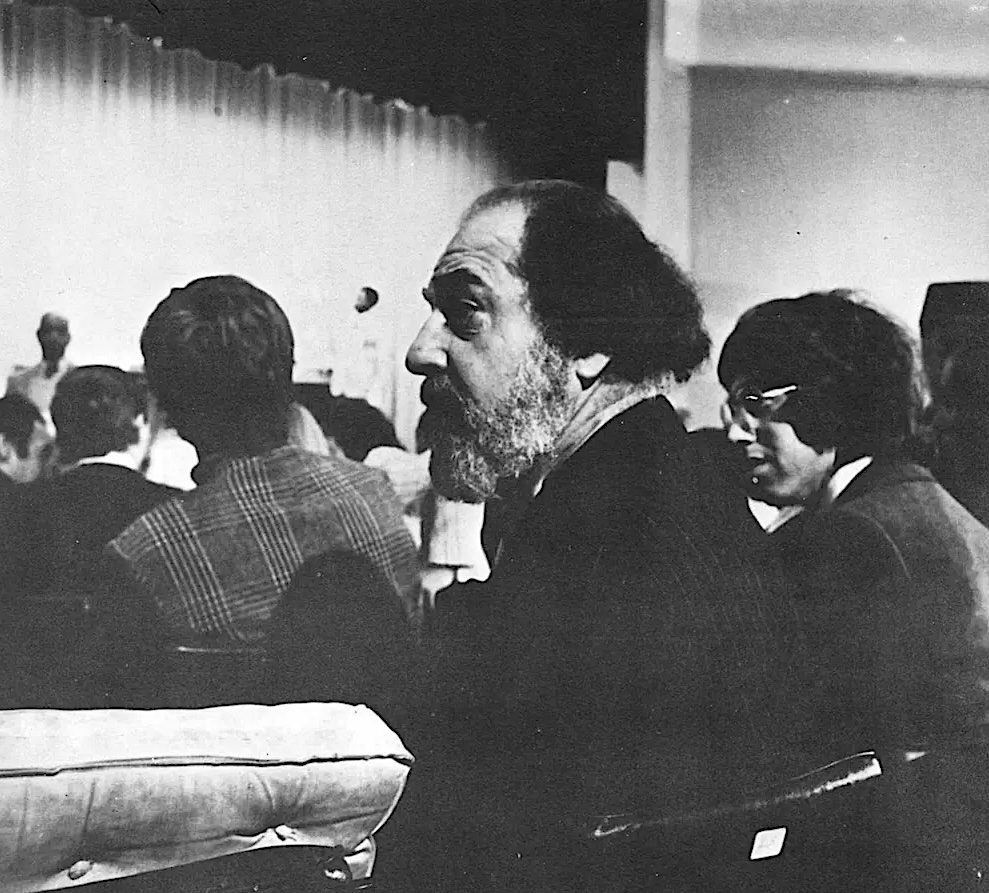
Scull, a New York taxicab impresario and passionate collector of Abstract Expressionist and Pop Art, sold 50 of his best paintings at Sotheby Parke Bernet on October 18, 1973, in an auction that “heralded” the beginning of a new era in the art world: a hyper-commercialized art market focused on promoting and selling.
The Sculls Were No Angels: The Patron Saints, And Sinners, Of Pop Art
https://jameslanepost.com/the-sculls-were-no-angels-the-patron-saints-and-sinners-of-pop-art/06/26/2023/Hamptons-News-Happenings
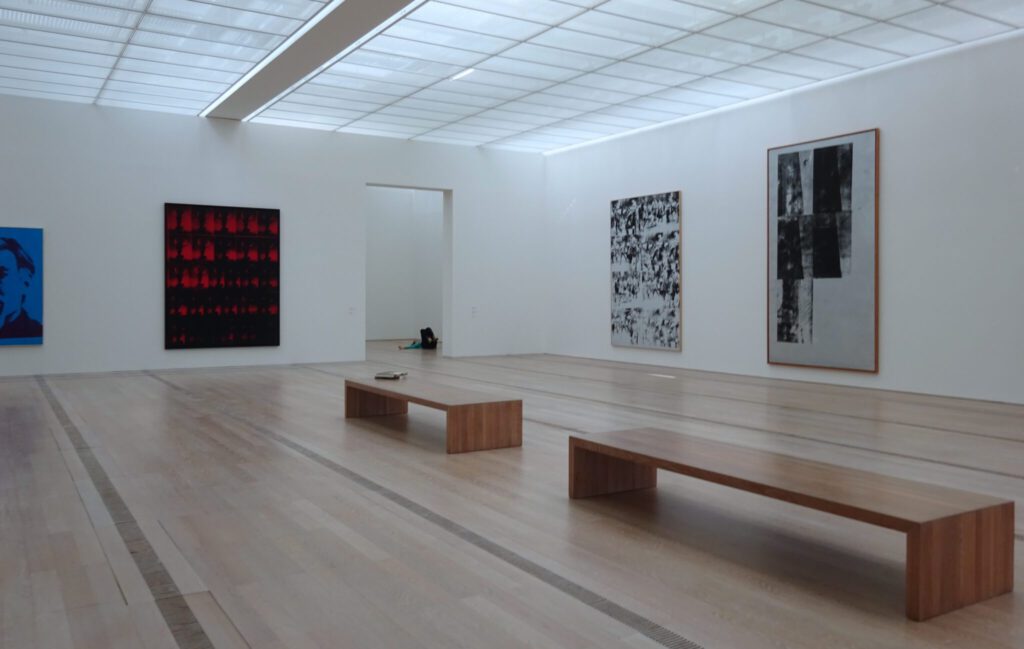
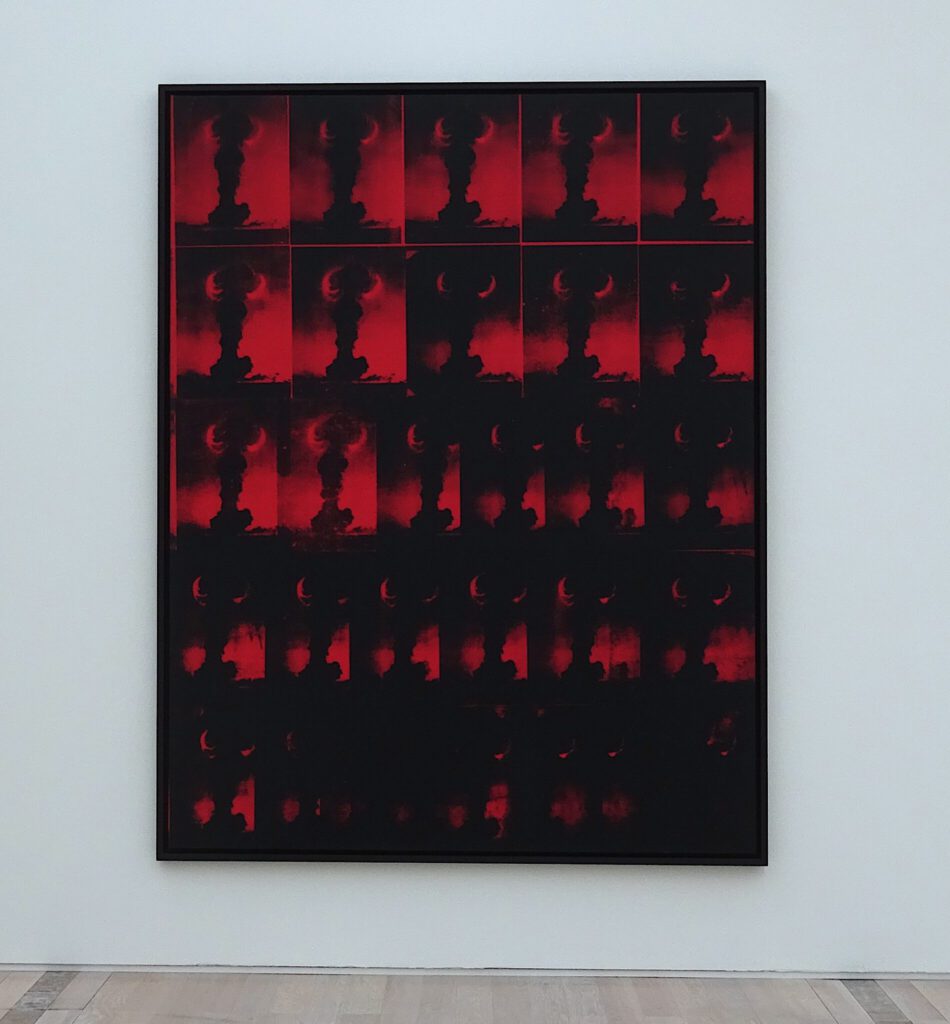
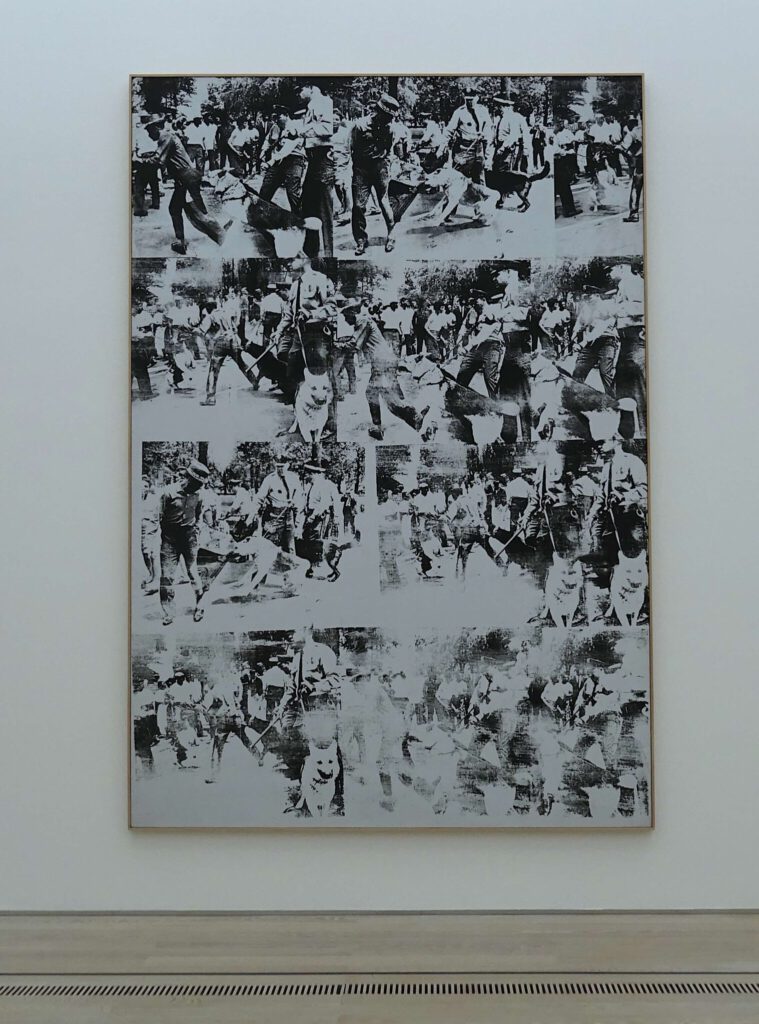
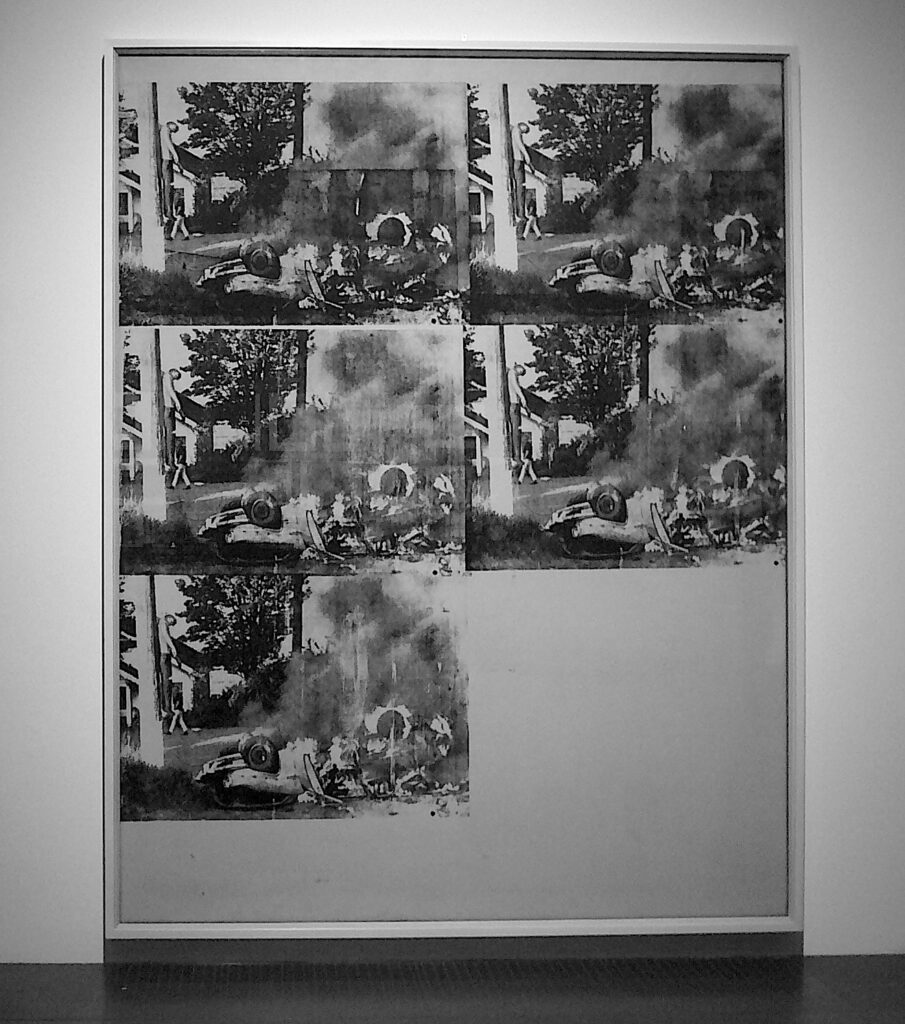
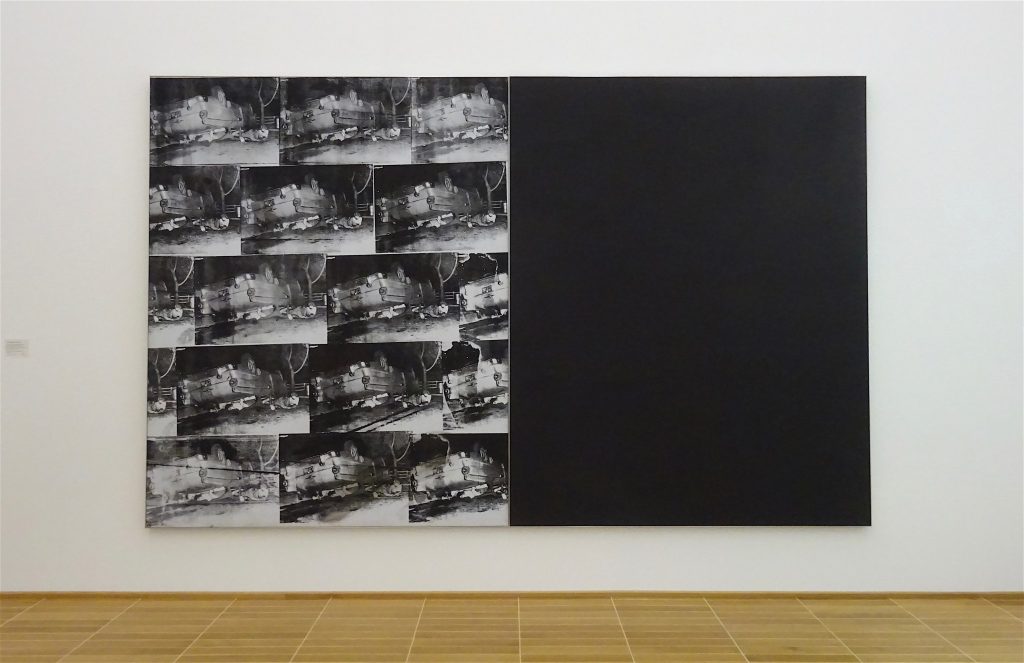
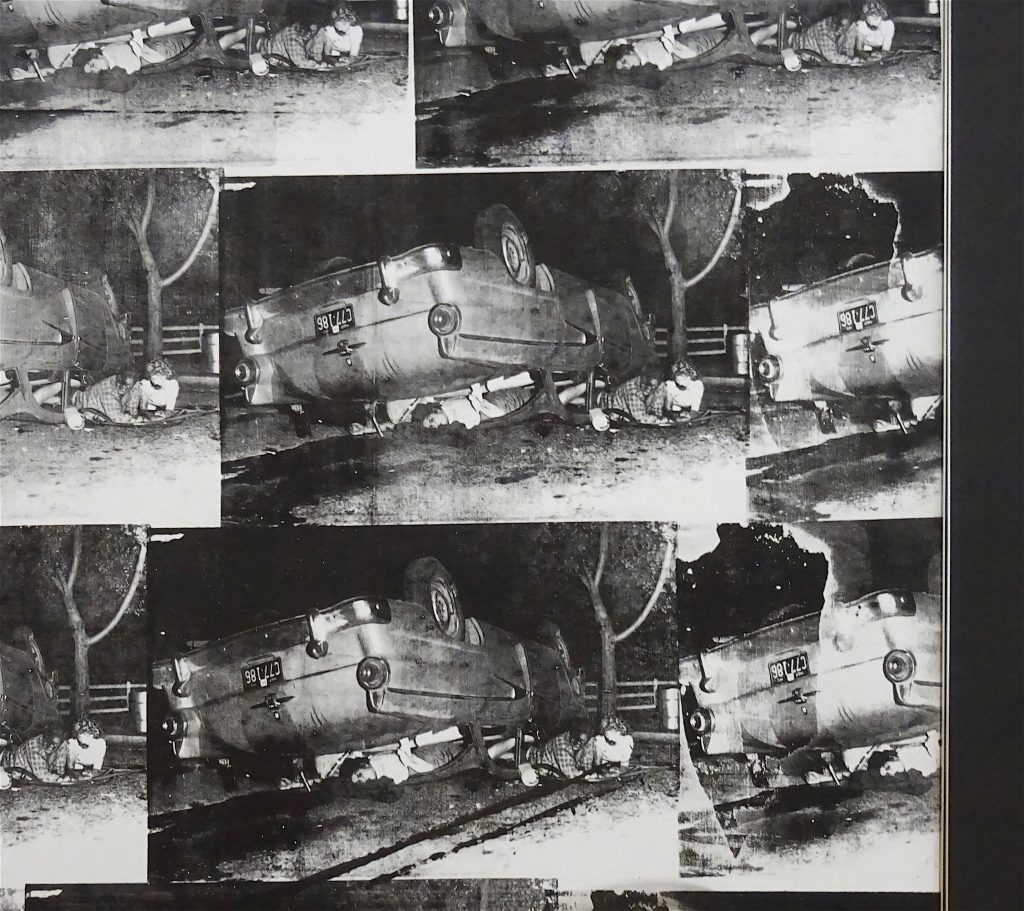
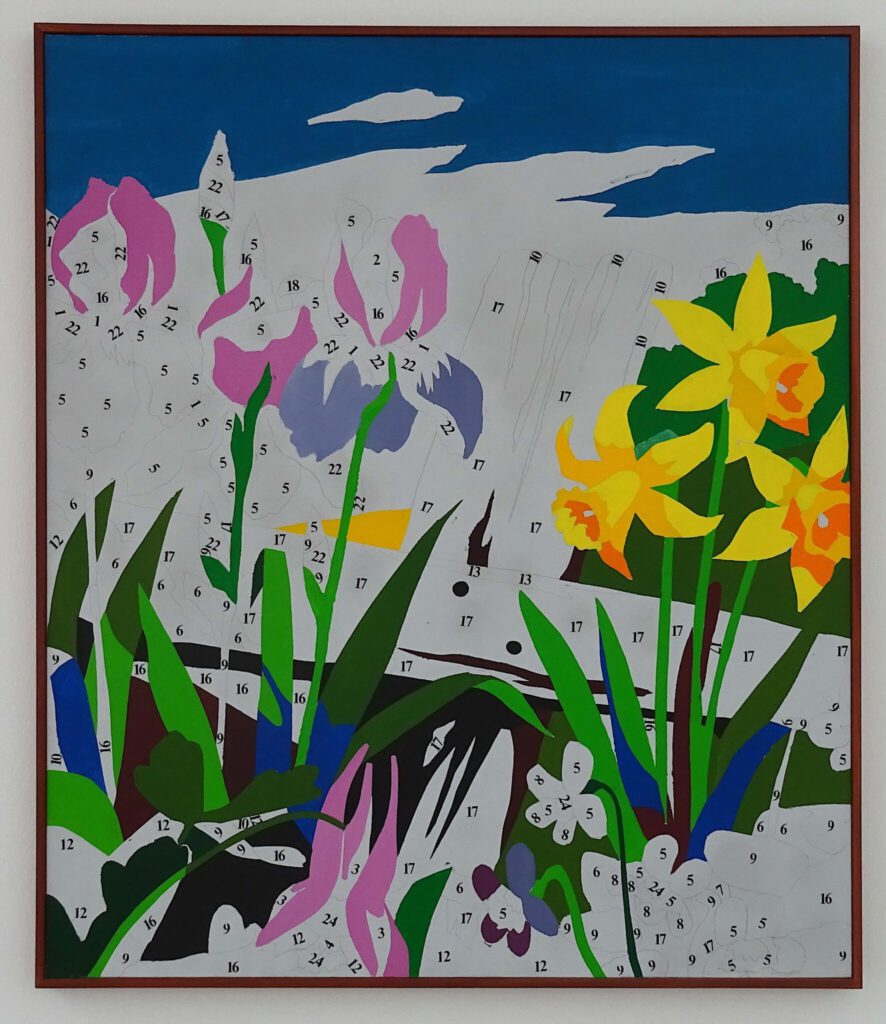
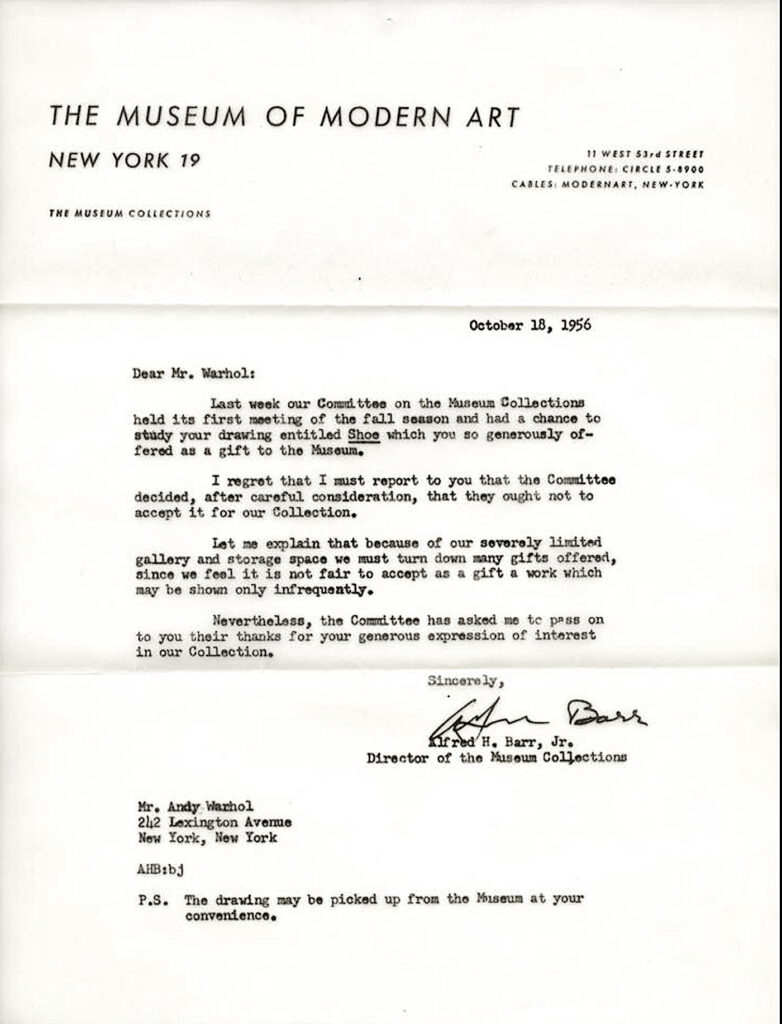
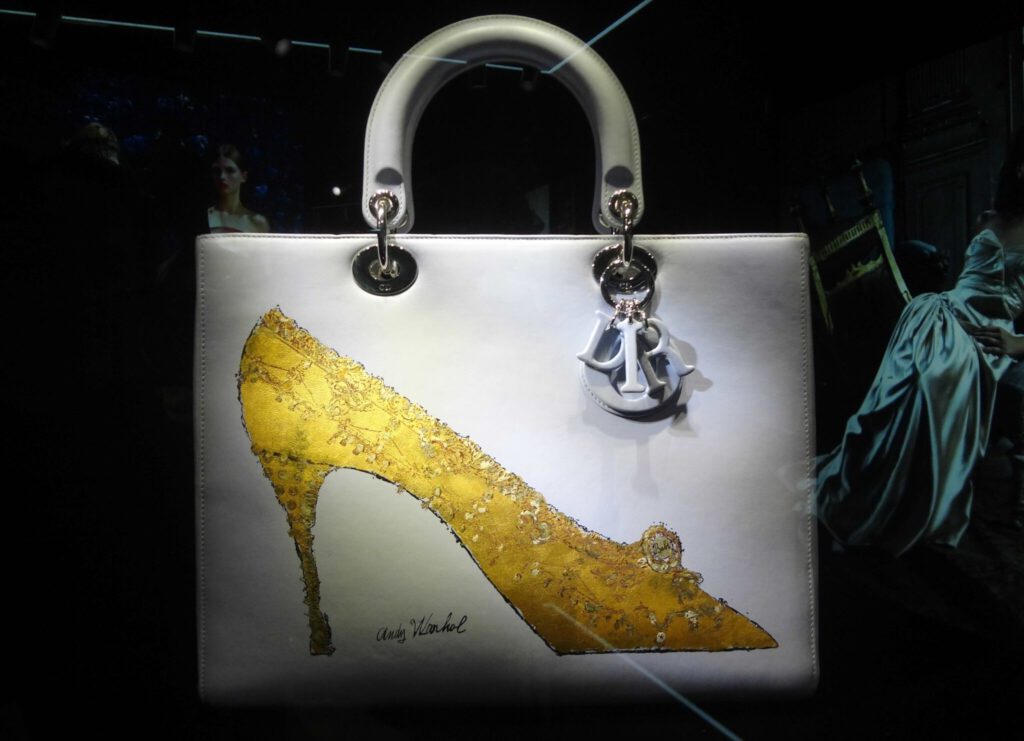
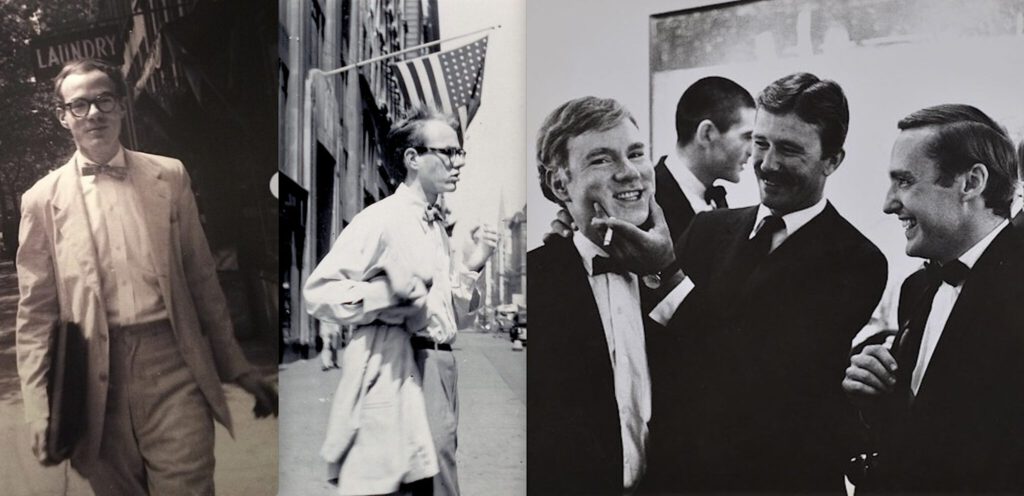
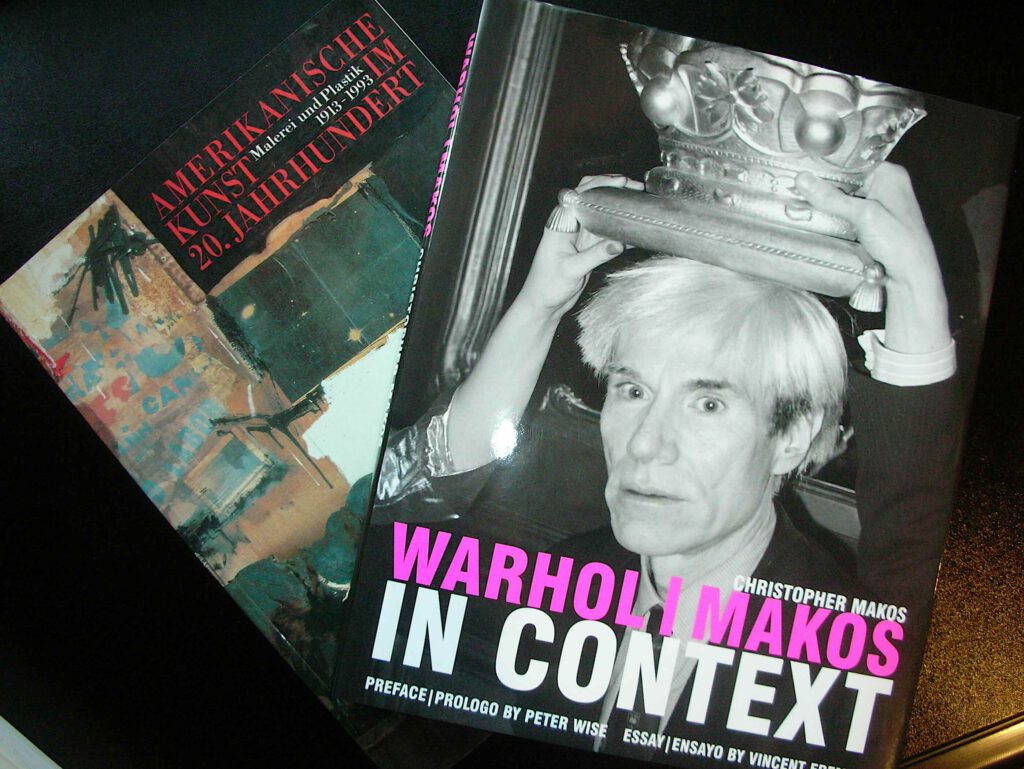
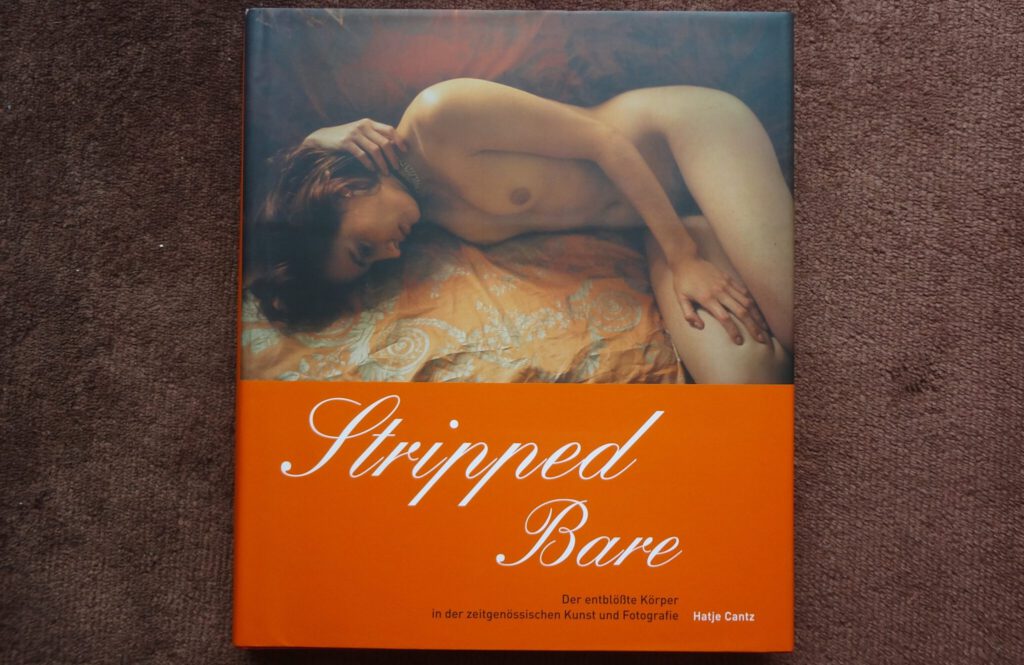
An art book which can NOT be published, seen in Japan and the USA.
“Stripped Bare – Der entblösste Körper in der zeitgenössischen Kunst und Fotografie” Hatje Cantz 2004.
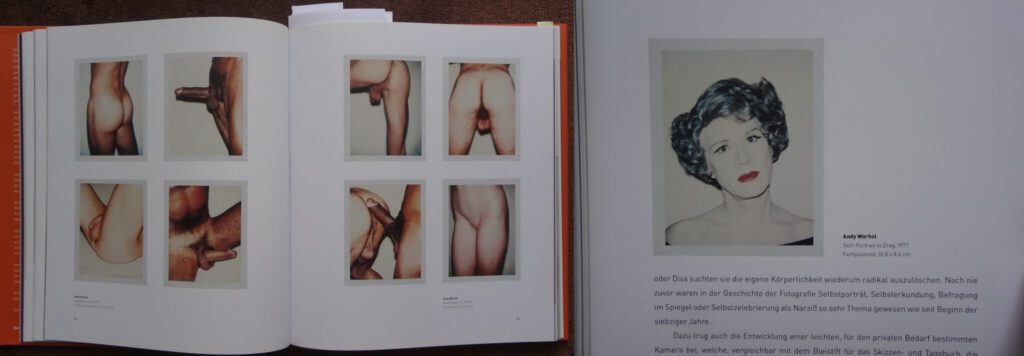
An art book which can NOT be published, seen in Japan and the USA.
“Stripped Bare – Der entblösste Körper in der zeitgenössischen Kunst und Fotografie” Hatje Cantz 2004.
https://www.hatjecantz.de/products/15287-stripped-bare
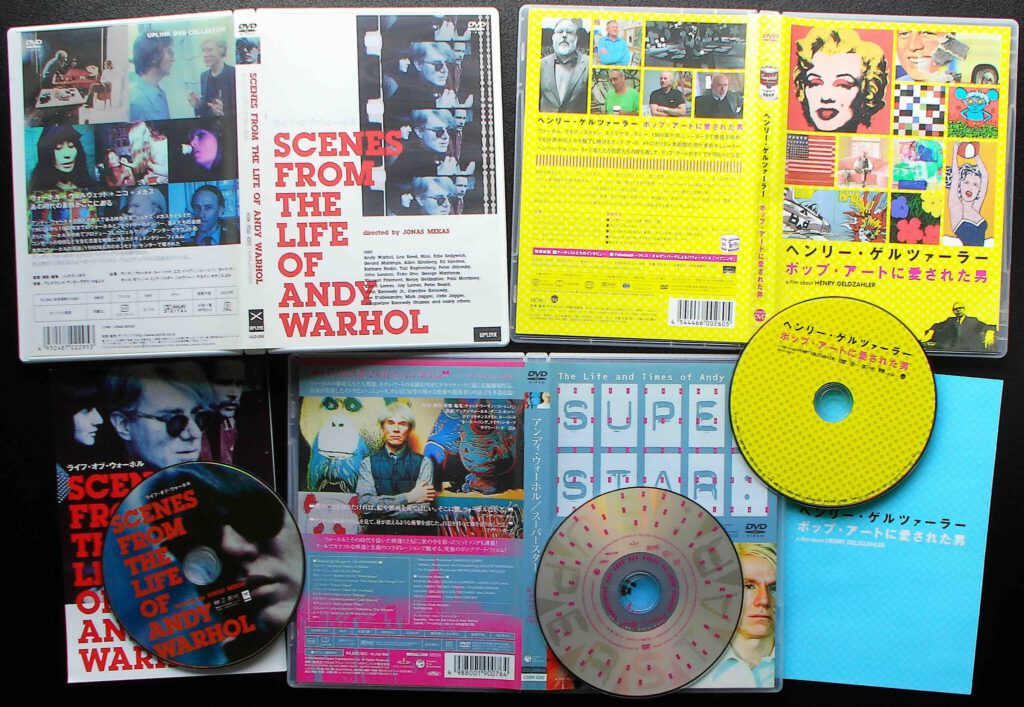
Andy Warhol The SHOCKING Complete Picture
Andy Warhol Documentary Film Part 1 of 2
ここに載せた写真は、すべて「好意によりクリエーティブ・コモン・センス」の文脈で、日本美術史の記録の為に発表致します。
photos: cccs courtesy creative common sense
Similar cultural essays, topics, themes:
例えば:ソーシャル・プラスチック Zum Beispiel: Soziale Plastik
https://art-culture.world/art-world/soziale-plastik-ソーシャル・プラスチック/
B like Baldessari, The Painter 概念とペインティング
https://art-culture.world/reviews/baldessari-the-painter/
ピクチャリング・アメリカ @ ドイツ・グッゲンハイム・ベルリン:トリステス+退屈 (2/2) (ロバート・ベクトル)
picturing america @ Deutsche Guggenheim Berlin: Tristesse + Boredom (2/2) (Robert Bechtle)
https://art-culture.world/art-world/picturing-america-ピクチャリング・アメリカ-グッゲンハイム/
SHINOYAMA Kishin passed away with 83. R.I.P. 篠山紀信 急死 83歳 R.I.P.
https://art-culture.world/reviews/shinoyama-kishin-篠山紀信/
世界で一番の日本美術家 天才荒木経惟! (1) World’s No.1 Japanese Artist ‘Genius’ Nobuyoshi Araki! (1)
https://art-culture.world/reviews/worlds-no-1-japanese-artist-genius-nobuyoshi-araki-1/
ジェーン・バーキン Jane Birkin – セルジュ・ゲンスブール Serge Gainsbourg 「You look like holidays」
Missing La Décadance
https://art-culture.world/cultural-essays/jane-birkin-serge-gainsbourg/
私 (亜 真里男) とピエール・ボナール I (Mario A) and Pierre Bonnard
https://art-culture.world/art-world/pierre-bonnard/
藤田嗣治・Léonard Foujitaの作品との出会い
Encountering the works by Léonard Tsuguharu Foujita
https://art-culture.world/reviews/foujita-tsuguharu-leonard-tsuguharu-foujita-kimiyo-藤田嗣治/
私 (亜 真里男) と草間彌生、長い芸術の旅、アンプラグド
I (Mario A) and KUSAMA Yayoi, a long artistic journey, unplugged
https://art-culture.world/reviews/mario-a-kusama-yayoi-草間彌生-亜真里男/
優作「ディスリンピック2680」@ 風間サチコ展・「原爆の図 丸木美術館」
KAZAMA Sachiko’s Excellent “Dislympia 2680” @ Hiroshima Panels – Maruki Museum
https://art-culture.world/reviews/kazama-sachiko-dislympia-2680-hiroshima-panels-maruki-museum/
ドナルド・キーンと三島由紀夫、運命論の関係性
Donald Keene and Yukio Mishima, a fatalistic relationship
https://art-culture.world/cultural-essays/donald-keene-yukio-mishima-三島由紀夫-ドナルド・キーン/
A Kyotographie-Kiefer Symbiosis
KYOTOGRAPHIE 京都国際写真祭 〜 Anselm Kiefer “Solaris” アンゼルム・キーファー 「ソラリス」 2025
https://art-culture.world/reviews/kyotographie-kiefer-symbiosis/
Tokyo Perspective: Chronicle of a Death Foretold regarding a respected American Art Dealer
奈良美智や村上隆を巡って:「FUCK YOU」や「お前、授乳中なんだから、俺のビジネスパートナーにはなれない」
https://art-culture.world/reviews/blum/
日本のアート界を駄目にした男? 不幸な村上隆、、、
The Man Who Ruined The Japanese Art World? An Unhappy MURAKAMI Takashi…
https://art-culture.world/art-world/takashi-murakami-kaikai-kiki-japanese-art-world/
Yoshitomo und ich 美智と僕
https://art-culture.world/reviews/nara-yoshitomo/
現代美術のスター 長島有里枝 @ MAHO KUBOTA GALLERY
Contemporary Art Star NAGASHIMA Yurie @ MAHO KUBOTA GALLERY
https://art-culture.world/reviews/contemporary-art-star-nagashima-yurie-長島有里枝/
日本のトップアーティスト、素晴らしい西野達:想像力を広げる
Japan’s Top Artist, Amazing NISHI Tatsu: Expanding Your Imagination
https://art-culture.world/reviews/nishi-tatsu-西野達/
ORIMOTO Tatsumi: Good vibes with a brilliant, genius-like, sense for the ‘moment of magic’ in contemporary art!
折元立身グッドバイブス:現代アートの「魔法の瞬間」を捉える、優秀な、天才的な感覚!
https://art-culture.world/reviews/orimoto-tatsumi-折元立身/
亜 真里男と「ゲルハルト・リヒターの作品」の関係性
…for comparative studies in the context of MOMAT’s “Gerhard Richter” exhibition
https://art-culture.world/art-world/gerhard-richter-works-by-mario-a/
Me and Mr. Robinson, God bless you please, coo coo ca-choo, hey, hey, hey
https://art-culture.world/art-world/walter-robinson/
ギャラリー ShugoArts オーナー 佐谷周吾 Gallery ShugoArts owner SATANI Shugo
https://art-culture.world/art-world/gallery-shugoarts-owner-satani-shugo/
Art world darling, cool Kenny Schachter @ Art Basel アート界の寵児、クール ケニー・シャクター @ アート・バーゼル
https://art-culture.world/art-world/kenny-schachter/
ゲニウス・ロキを巡って、エゴン・シーレ vs 亜 真里男 Genius loci: Egon Schiele vs Mario A
https://art-culture.world/art-world/egon-schiele-mario-a/
塩田千春作:孤独と生命線の神秘な相関巣 (過去サイト・アーカイブの再投稿、2013年2月3日)
SHIOTA Chiharu: Mysterious Nest-specific Correlations Between Loneliness and Lifelines (repost from the archive, 2013/2/3)
https://art-culture.world/reviews/shiota-chiharu-shiota-塩田千春/
白髪一雄・フット・ペインティング SHIRAGA Kazuo – Foot Paintings
https://art-culture.world/reviews/shiraga-kazuo-白髪一雄/
現代アート界の巨匠、ロマン・シグナーの刺激的で繊細な作品を楽しむ
Enjoying Art Giant Roman Signer’s exciting, subtle works. Berlin 2009, Basel, St. Gallen 2014 & Zürich 2025
https://art-culture.world/reviews/roman-signer/
谷川俊太郎との出会いは30年前から始まり、東京オペラシティ アートギャラリーでクライマックスを迎え… (過去サイト・アーカイブの再投稿、2018年1月26日)
TANIKAWA Shuntaro R.I.P. (+ repost from the archive, 2018/1/26)
https://art-culture.world/cultural-essays/tanikawa-shuntaro/
Wayne Thiebaud @ Beyeler Fondation ウェイン・ティーボー 個展 @ バイエラー財団、スイス
https://art-culture.world/reviews/wayne-thiebaud-beyeler-fondation/
A New Art Star is Born: TOMOZAWA Kotao. Spiritual Transfiguration Oil Paintings @ Seibu Department Store, Shibuya
新日本現代アート・スター 油絵画家 友沢こたお
https://art-culture.world/reviews/tomozawa-kotao-友沢-こたお/
Extraordinary Contemporary Art Star SUGIYAMA Hinako @ PARCO MUSEUM TOKYO
Extraordinary 現代アートのスター 杉山日向子 @ PARCO MUSEUM TOKYO
https://art-culture.world/reviews/extraordinary-contemporary-art-star-sugiyama-hinako/
非常に優れている企画展「Viva Video! 久保田成子展」@ MOT!
(現代の最高の日本人アーティストである長島有里枝さんは久保田成子の正統な後継者)
https://art-culture.world/reviews/kubota-shigeko-museum-of-contemporary-art-tokyo-久保田成子/
